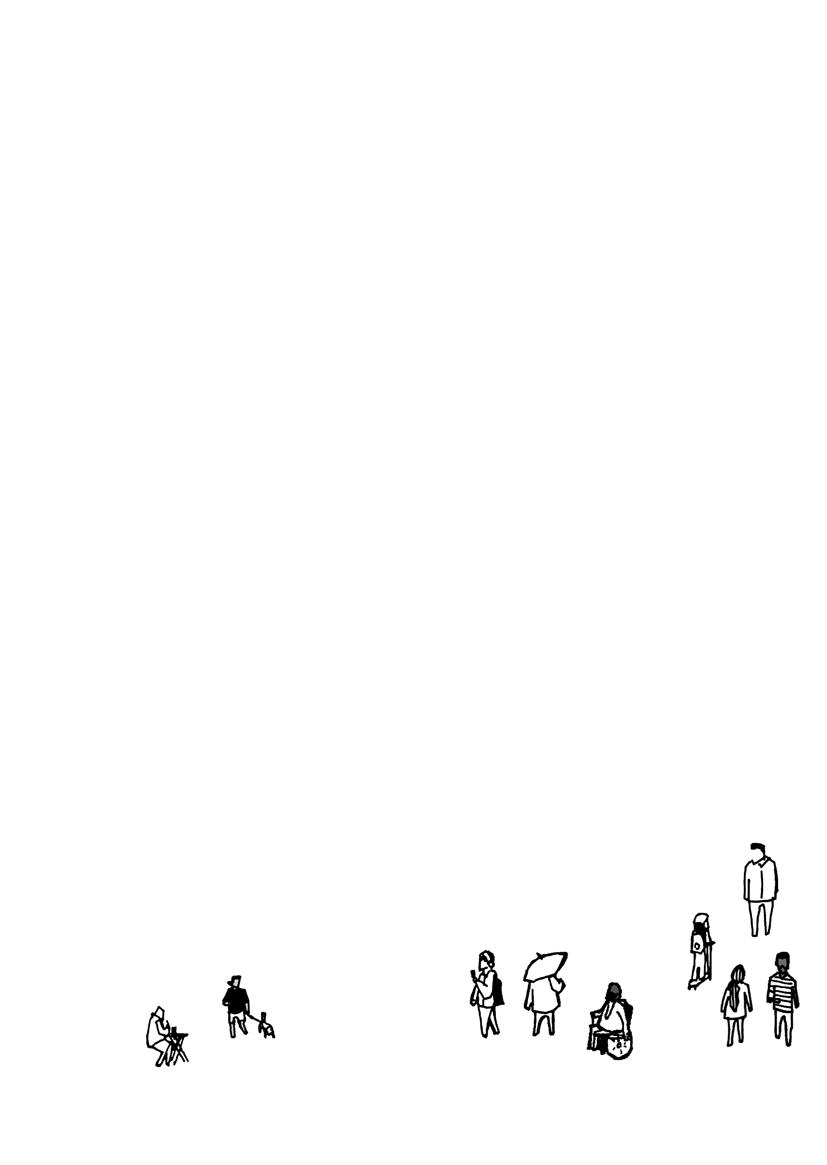Places to Practise
Building participatory practises in Barking & Dagenham through the Every One Every Day initiative.




Building participatory practises in Barking & Dagenham through the Every One Every Day initiative.



Most of all thank you to all the participants of Every One Every day for their excitement, ideas and contributions. Every One Every Day is inspired by the innovative work of hundreds of people locally and across the world who are finding new ways to reshape their communities and helping imagine what re-organised neighbourhoods might be possible in the future.
Participatory City Foundation Research Team

Tessy Britton, Founder
Nat Defriend, Chief Executive Officer
Katherine Michonski, Chief Operating Officer
Ivana Cosmano, Researcher
Dan Robinson, Head of Neighbourhood Development
Hayley Bruford, Head of Learning and Design
Iris Schönherr, Head of Programmes
Saira Awan, Head of Neighbourhood Development
Tim Warin, Head of Operations
Laura Rogocki, Learning and Graphic Designer
Nikitha Pankhania, Graphic Designer
Madeline Contos, Learning Designer
Andres Muniz, Assets and Premises Manager
Claudia Iacob, Operations Manager
Sarena Shetty, Programmes Designer
Adédolapo Yusuf, Project Designer
Bahar Kaplan, Project Designer
Farah Shahab-din-Chaudhry, Project Designer
Imogen Newman, Project Designer
Jessica Broughton, Project Designer
Jack Tatham, Project Designer
Louis Rutherford, Project Designer
Matthew de Kretser, Project Designer
Symbol Obinna Uzoukwu, Project Designer
Winter Lappin, Project Designer
With additional thanks to:
Aggie Pailauskaite
Stephanie Olowe
Ruchit Purohit
Amelie Pollet
Dee Pessoa
Brigitta Budi
Ola Ismail Olopoenia
London Borough of Barking and Dagenham
Saima Ashraf, Deputy Leader, Barking and Dagenham Council
Rhodri Rowlands, Director of Participation and Engagement
Monica Needs, Head of Participation and Engagement
Michael Kynaston, Participation Manager
Claire Brewin, Policy Officer, Community Solutions
Debbie Butler, Community Development Officer, Community Solutions
Trustees
Michael Coughlin
Sophia Looney
Hannah Rignell
Roland Harwood
Noel Moka
Akil Scafe-Smith
Rosanna Vitiello
Tom Hook
With additional thanks to:
Dan Hill
Olivia Smith
Alessandro Ricci
Cities Programme Partner
Friendship Centre Kjipuktutk/Halifax
Project Team
Aimee Gasparetto
Tammy Mudge
Killa Atencio
Kate Sunabacka
Jayme-Lynn Gloade
Richelle Kantor
Jocelyn Spence
Janine Annett
Nat Quathamer
Adria Maynard
Pamela Glode Desrochers
Cities Programme Partner
Corra Foundation
Funders & Partners
London Borough of Barking and Dagenham
Esmée Fairbairn Foundation
National Lottery Community Fund
City Bridge Trust
Greater London Authority
Bloomberg Philanthropies
Barking Riverside Limited
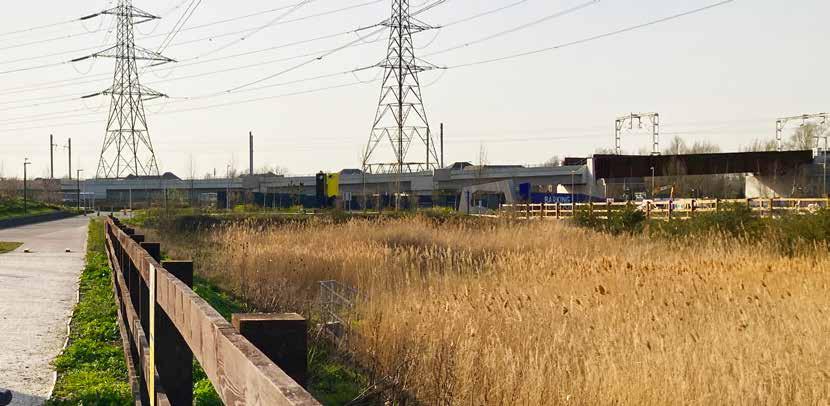
Ikea Lagom
Credit and thanks to Nishant Jain for cover illustrations
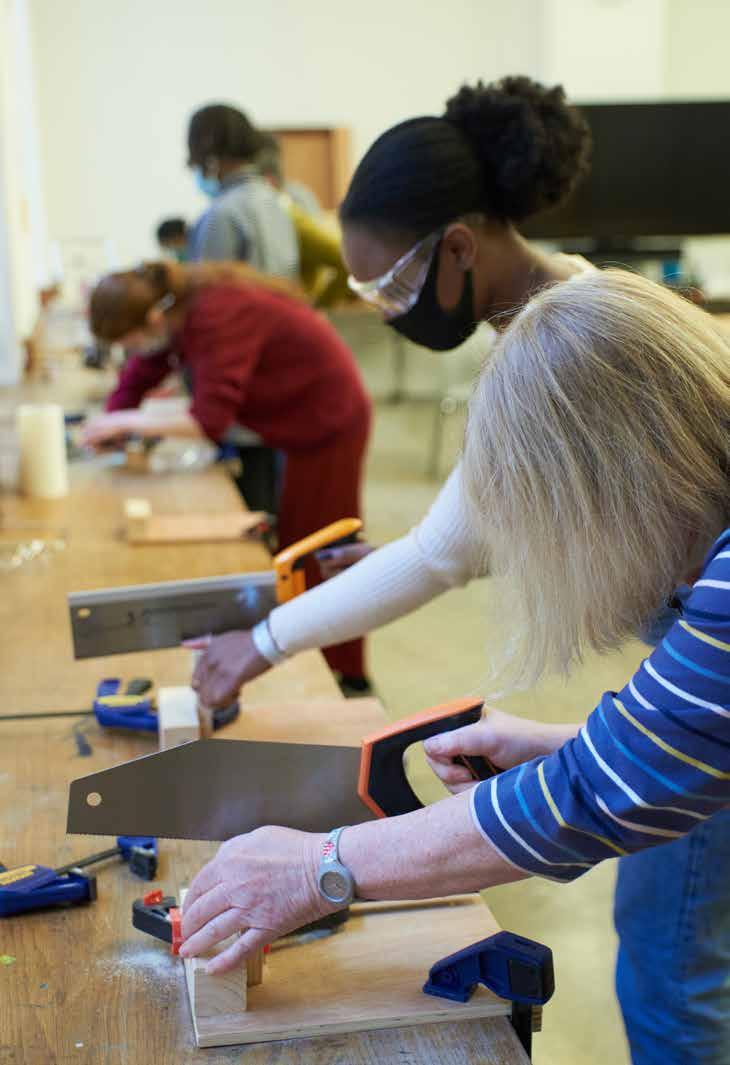
The evidence of the work, activities, achievements and outcomes set out in this research report (the third in a series), pay testament to the transformational combination of the active participation of Barking and Dagenham residents, the efforts and commitment of the Every One Every Day team, the backing of funding bodies and support from many others, including the Participatory City Board members and Global Advisors network.
As ever, the important quantitative data set out is trumped by the personal testimonies of residents. Many speak openly and passionately about the effect Every One Every Day has had on them, those close to them and their neighbourhoods and communities.
The quality of the work, integrity of the approach, and results achieved, continue to impress. They also strongly reflect the founding principle of putting people and neighbourhoods at the very centre of the work, with the object of encouraging collaboration between residents, to secure the outcomes they wish for themselves and others.
This report comes at a critical time, capturing as it does the period during the Covid-19 pandemic, which limited the scale and scope of participation opportunities and saw the work shift to developing learning and business development opportunities for residents. It is also half-way through the carefully planned final year of work with the residents of Barking and Dagenham, during which the creation of a sustainable legacy for the work has been the priority.
The past two years have been remarkable for Every One Every Day in many ways. More residents than ever - approximately 10,000 - taking part in more than 80,000 hours of activities, with almost 700 developing their skills and over 40 places improved.
All of this and more has enabled us to contribute to the body of evidence and practical know how around participation systems globally. The open source and shared nature of our practical, demonstrable learning has been a key feature of this. While the work with the people of Barking and Dagenham is foundationally important, we firmly believe there is significant wider value and benefit in this work and approach.
As we now work to leave a strong legacy, in the coming year we will focus on transitioning as much as possible of our practical work in Barking and Dagenham to other groups, bodies and communities; carefully and sensitively gifting assets to others; supporting the Every One Every Day team and capturing, curating and sharing in perpetuity a range of learning materials that will enable others, anywhere in the world to create inclusive, engaging, useful and enjoyable ways of participating, together, that promotes social cohesion.
Much will now depend on our legacy. This will in time be judged, of course, by the sustainability of the work in Barking and Dagenham but also by the replicability and scale of adoption elsewhere in the UK and globally.
None of this would have been achieved without the dedication, commitment and hard work of our Chief Executive, Nat Defriend and his amazing team of staff, many of whom have stepped up and shown such amazing passion and commitment throughout an extraordinarily challenging period.
Our funders have stayed the course and shown unbelievable faith in our work, with the London Borough of Barking and Dagenham playing a particularly important political and placeleadership role. At the heart of everything you read, see and hear about Every One Every Day are the thousands of Barking and Dagenham residents who have participated - often for the first time in their lives - in the activities and in doing so the development of the approach and the securing of so many achievements, successes, and lives changed for the better.
“We don’t have to engage in grand heroic actions to participate in the process of change. Small acts, when multiplied by thousands of people, can transform the world” - Howard
Zinn Michael Coughlin, Co-Chair Trustee Sophia Looney, Co-Chair TrusteeThis new report represents a significant contribution to our existing research on this innovative approach to building inclusive practical participation into our daily lives, both during and after the COVID-19 period.
This report is particularly exciting as it comprehensively outlines collaborative business programmes and enhances our understanding of how social capital is developed.
The true impact of this practical approach is revealed through the words of the residents themselves. Their accounts provide a more personal and human perspective, moving beyond abstract ideas of outcomes.
The scale of this project is truly impressive, and credit must be given to the remarkable residents of the borough. While the team provided the necessary infrastructure and creative strategies, it was the residents who actively fostered friendships and built trust. Importantly, these relationships have transcended cultural and social demographic boundaries. The highly detailed attention to inclusivity in every aspect of how this approach is at the core of this approach, and it proved to be highly effective.
Creating new avenues and opportunities for people to come together is of utmost importance, especially in increasingly diverse societies. The World Economic Forum has identified erosion of social cohesion as the 4th most severe global risk over the next decade. Building social cohesion requires deliberate effort and care, unlike the easier topdown campaigns that often contribute to polarisation and segmentation.
As evidenced by the stories of the residents of Barking and Dagenham over the past 6 years, building social cohesion and building social capital necessitates fostering meaningful relationships between people. As this report sets out, participation platforms hold the potential to create the conditions for this to be possible at scale.
Tessy Britton, FounderA lot has happened since we published our last research report, Tools to Act, back in early 2020.
For the residents of Barking and Dagenham life has changed for ever with the borough still dealing with the impact of COVID-19 and the ongoing effects of an enduring cost of living crisis. For participants of Every One Every Day, the platform has changed around them. Firstly as parts of it became inaccessible. Then when it reopened in unfamiliar circumstances, with new limitations, protocols and safety procedures in place.
And for the project team, it has taken time, patience, ingenuity and effort to rebuild connections with residents and reignite the ecosystem of projects, programmes and collaborations which are the driving force behind the outcomes achieved through this model of participation.
In some significant ways things have changed irrevocably. It has not been possible to recapture the momentum which drove the development of Everyone’s Warehouse before March 2020 and some residents never returned to the project after the rupture of the pandemic. But in many others the project has been able to extend and develop its approaches, methods, understanding and impact over the intervening years since the publication of Tools to Act.
Most significantly, this report sets out our latest understanding of how the experience of participation creates social capital amongst participants which they can then use to create outcomes at individual, community and societal level.
It also introduces for the first time a comprehensive description and analysis of the collaborative business programme which has emerged as a key component of the model since it was initiated in 2018. As Chief Executive Officer it has been a privilege to lead Participatory City Foundation for the last two years. I want to pay particular thanks to our incredible team who have kept their enthusiasm and drive throughout everything which has been thrown at them over the past two years. I want to thank our amazing trustees, funders and partners who have supported the project so firmly.
And most of all I want to thank the people of Barking and Dagenham, who are creative, challenging (in a good way!), resourceful, resilient, and a constant inspiration.
Nat Defriend, Chief ExecutiveAt Esmée Fairbairn Foundation, we want to strengthen the bonds in communities, helping local people to build vibrant, confident places where they can fulfil their creative, human, and economic potential. As a funder, we have learnt that local, place-led funding can reach people and tackle challenges in uniquely innovative ways.
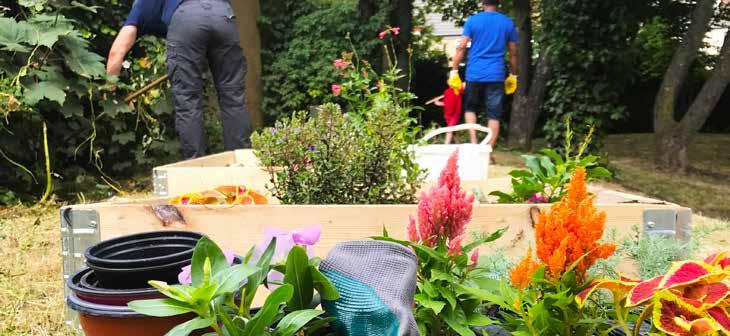
Every One Every Day is a fantastic example of that. Their approach supports local people to have a deeper level of participation, co-creating activities and projects with other residents, which offer benefits to the wider community. Whilst pandemic restrictions meant parts of their strategy had to be pushed back, they were able to adapt and respond to the community’s needs, and make faster progress in other areas. For instance, they developed a digital platform, providing an online space for residents to connect; provided free project toolkits to support activities at street level; and accelerated their collaborative business incubator programme. We’re grateful to Participatory City Foundation for sharing their journey, research and learning along the way, which continues to inspire and inform our place-based and place-led work.
Esmée Fairbairn Foundation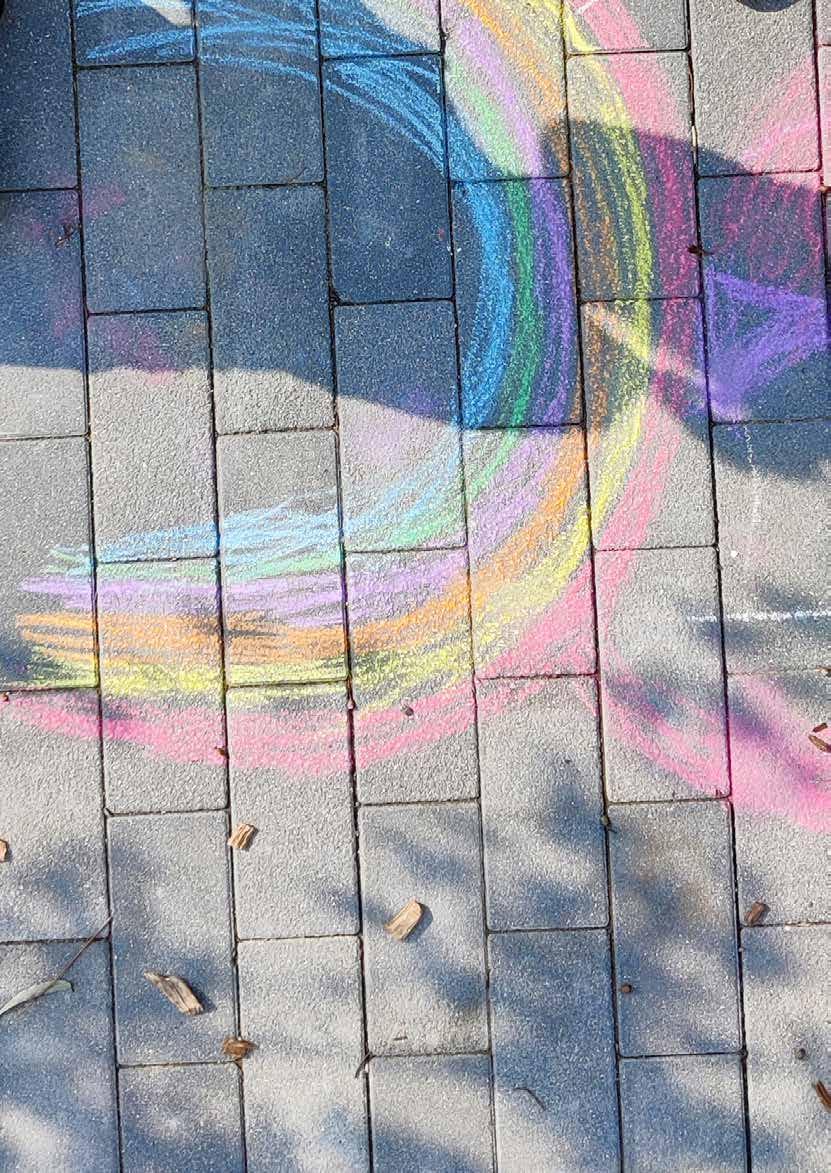
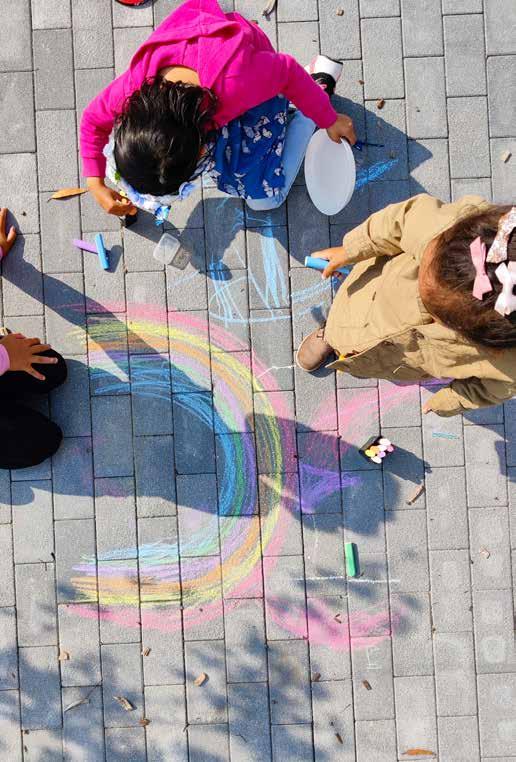
This report is the first publication from Participatory City Foundation for three years.
Since the publication of Tools to Act in early 2020, the world has changed dramatically, and with it, the lives of the residents of Barking and Dagenham. As the borough has changed, so have the approaches, methods, and day-to-day work of the Every One Every Day project.
Places to Practise brings the account of this work up to date (to December 2022). It summarises how the platform adapted to the unique challenges of the COVID-19 period, and emerged from it, including an assessment of how successful the platform was at recapturing the momentum lost to the pandemic.
For the first time, this report contains a comprehensive description and evaluation of the Collaborative Business Programme, which itself has been through multiple iterations over the past three years, and, as a key vehicle for self-directed learning, is properly understood as a fully integrated component of the full-scale participation system.
Alongside detailed descriptions of the evolution of the system and the new elements which have been prototyped and tested within it, this report sets out the latest evaluation evidence arising from the data analysis and research activities undertaken since early 2020.
These lead to a key insight within this report which, it is contended, is of critical importance for those involved in city leadership, urban policy and strategy, and community and neighbourhood development; this is the clear evidence emerging from this
research that, for participants, the accumulated experience of practical participation is directly linked to the development within individuals of increased social capital, understood as the trust, cooperation, and resources that are built and shared among individuals and groups through social connections.
Furthermore, this report also sets out the connection between increases in individual social capital, and the collective effect of this at scale for communities and society more generally.
This means that participation systems can be understood as infrastructure for the generation of social capital at scale.
As such, and drawing upon the extensive evidence base for the significance of social capital in improving lives and communities (for example, Bourdieu (1986), Coleman (1988), Putman (1993) and Cloete (2014)) it is contended that flourishing participation systems, enabling residents to connect, share, create and collaborate, should be an integral part of all communities as we meet the challenges and opportunities of the coming decades.


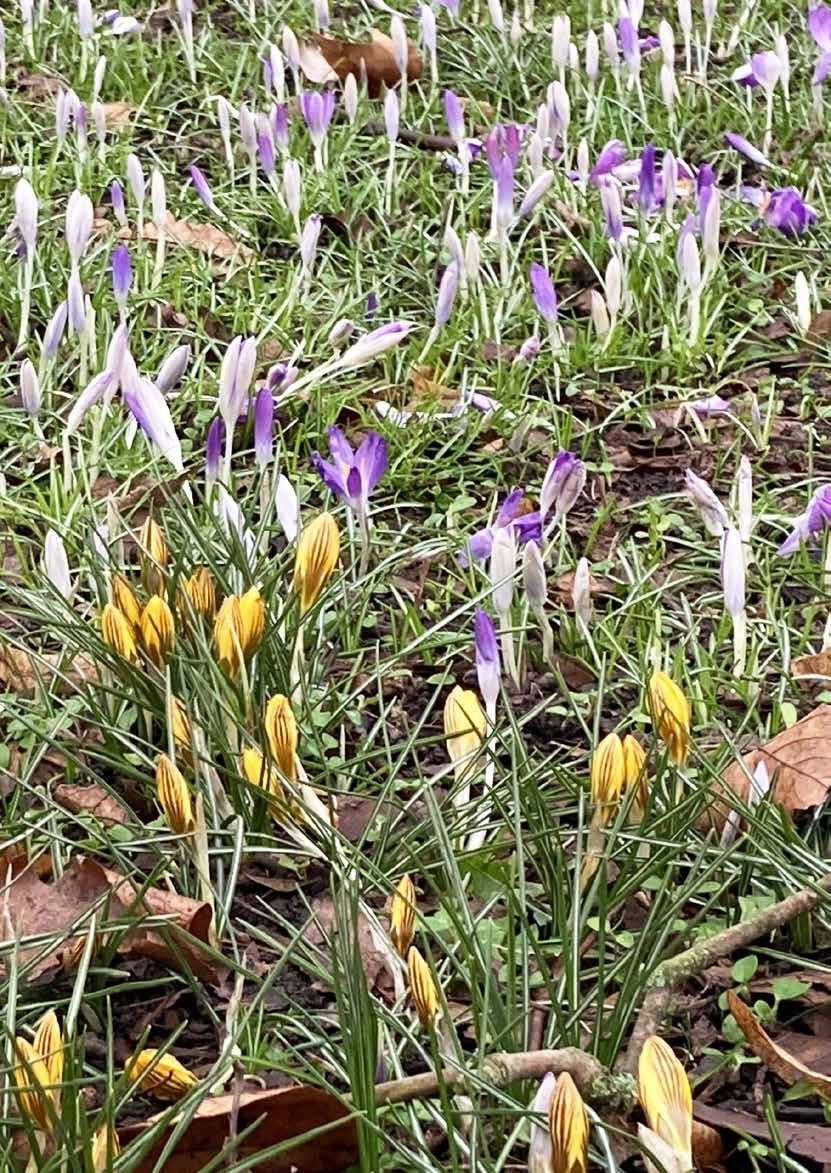
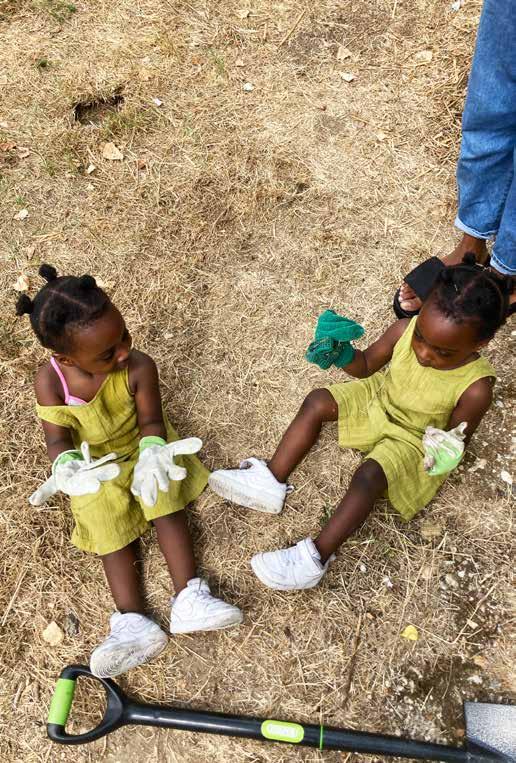
Aims and Purpose of the Report
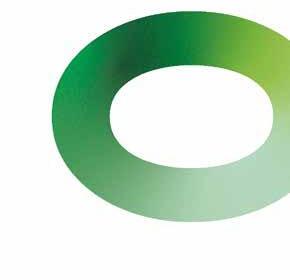

Borough Context
Project Background
Project Development
Report Structure
50
An Interconnected social system
The participatory support platform




The participation ecosystem

Ecosystem growth
Registered participants
Participation patterns
Participation diversity
Platform developments

Ecosystem developments
The COVID-19 Pandemic

138
The Participation Ecosystem


Collaborative Business Programmes



Ecosystem Case Studies

Model Adaptability and Partnerships
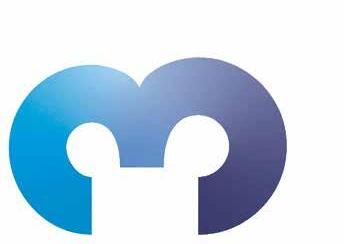
218
Key Findings, Platform Impact and Outcomes

Key findings and platform impact
Practical Participation in Context
Outcomes and Impact
Participant Case Studies
Multi-levels Outcome Framework
274
Summary and Conclusion
Key findings
Research limitations
What next?
Every One Every Day, hosted by Participatory City Foundation, is a research and demonstration project which, for the past five years, has been working at the heart of Barking and Dagenham in East London to build the world’s first full-scale practical participation system.
The project builds on eight years of prior research on new models for building sustainable urban neighbourhoods around the world.
These asset-based and decentralised approaches were highly diverse in form and content but united by a simple and powerful idea: that everyone has ideas and contributions to bring and that by designing for inclusion and with the right invitation, everyone could participate in building their neighbourhood.
The prior research also highlighted another key insight: that to survive, these participation projects had to convert to another form, such as a social enterprise or charity, and that in doing so they often lost their essential, inclusive, and participatory nature.
Every One Every Day is the first attempt anywhere in the world to build a local system that can enable the development of inclusive participatory opportunities at scale, and sustain them, whilst preserving the elements which make them different.
Participatory City Foundation’s previous publication, Tools to Act (2020), described the first two years of the Every One Every Day project, which included the initiation and growth phases. Subsequent reports were intended to describe how the project scaled across the borough, how it integrated with the existing systems present locally, and to evaluate and describe the impact created by inclusive practical participation for local residents.
In the intervening years the world has turned on its head. In-person participation - the primary driver of individual outcomes in this model - became impossible due to social restrictions arising from the Covid-19 pandemic, and, while the project delivered a huge amount during this period, taken overall, an 18-month hole was knocked into the participation data collected by the project.
Since August 2021, the project has been able to reopen its doors to local residents and to begin, often painstakingly, to rebuild the momentum lost to COVID-19. In doing so, the project has worked with residents who were amongst the worst affected by the pandemic anywhere in the UK.
During the COVID-19 pandemic, the project’s funders agreed to extend funding for a further two and a half years to allow the project to achieve its original research aims.
At the time of writing, Participatory City Foundation has raised over £9 million of investment into this research project through an enduring and deep collaboration with this extraordinary group of funders and partners. The project has engaged approximately 10,000 local residents, and created over 300 new projects, learning programmes, and collaborative business opportunities in the borough.
This report brings the story of the Every One Every Day project up to date. It reminds readers of the overarching aims of the initiative and goes on to describe how the core elements of its work have emerged from and been changed by the pandemic. This includes a detailed focus on the design and delivery of the collaborative business programme, which has developed substantially since the publication of Tools to Act.
The report contains a full presentation of all the data and other evaluative evidence gathered since the beginning of the project and analyses what this tells us about the impact of practical participation in Barking and Dagenham over the past five years. Most significantly, it updates the project’s outcomes framework to include how the model is a platform for the creation of social capital, and how increased participation results in increased levels of social capital.
This case is made throughout this report including the evidence amassed to support it. It is contended that this is a highly significant finding of relevance for all those with an interest in the way we design our social systems and communities, particularly those in urban settings.
This report should be read in conjunction with Tools to Act and is intended as the penultimate published output from the research and development phase of this project. A final, comprehensive reporting covering all aspects of the model, the data, and the evaluation evidence and the analysis, including recommendations for other places wishing to adopt this approach will be published in late 2024.
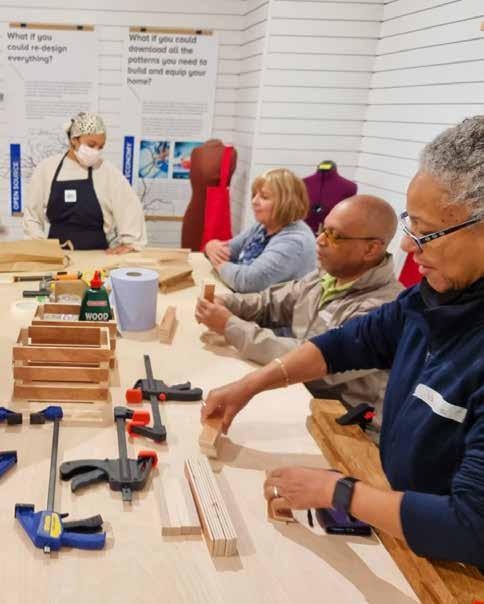

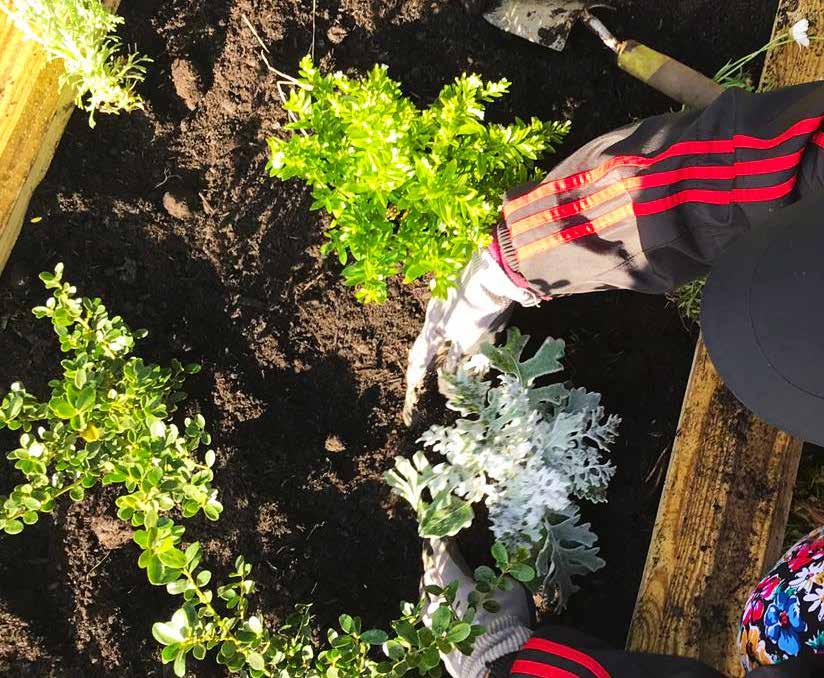
Every One Every Day is a research project that seeks to develop and test the impact and potential of practical participation at scale in a London borough.
The research was designed to examine a set of key questions, including feasibility, inclusivity, value creation, systemic integration, and scalability of the model.
The project applied a developmental evaluation approach to generating, analysing, and codifying the learning arising from the experience of building the participation platform in Barking and Dagenham.

This approach was selected for its suitability to the design-based, emergent, and iterative nature of system building. By engaging all team members, residents and partners in the research and design, the approach was able to adapt to the changing circumstances of the project over the past five years. This has been particularly important since the COVID-19 pandemic.
This report is the third research publication arising from the Every One Every Day project in Barking and Dagenham. It follows Made to Measure, published in April 2019, and Tools to Act, published in April 2020.
These two reports described the experience and learning generated by the project over its first two years as it set up and established itself in Barking and Dagenham and sought to scale its activities across the borough.
By early 2020, the platform had reached full scale before the COVID-19 pandemic necessitated a fundamental change to the project approach.
The original research strategy envisaged annual reports over the course of the five year research project, culminating in a final publication that would draw together all the learning in a comprehensive account.
As a result of the changes to project approach in March 2020, the project has not published a report since Tools to Act in April 2020.
This report therefore aims to bring the public account of the project up to date by describing how the platform adapted to the unique challenges caused by the social restrictions imposed in March 2020 and how it emerged from this phase and sought to rebuild momentum lost to the pandemic.
The report sets out for the first time a comprehensive account of the design and delivery of the Collaborative Business Programme, which has developed substantially since the publication of Tools to Act.
It also shares all the qualitative and quantitative data the project has gathered about the nature and scale of participation since project inception. It sets out the latest iteration to the project’s theory of change, which ties participation to the development of increased social capital amongst participants.
This report is intended to be the penultimate publication from the research and development phase of Every One Every Day in Barking and Dagenham.
Participatory City Foundation plans to produce a final comprehensive report covering the entirety of the project in 2024.

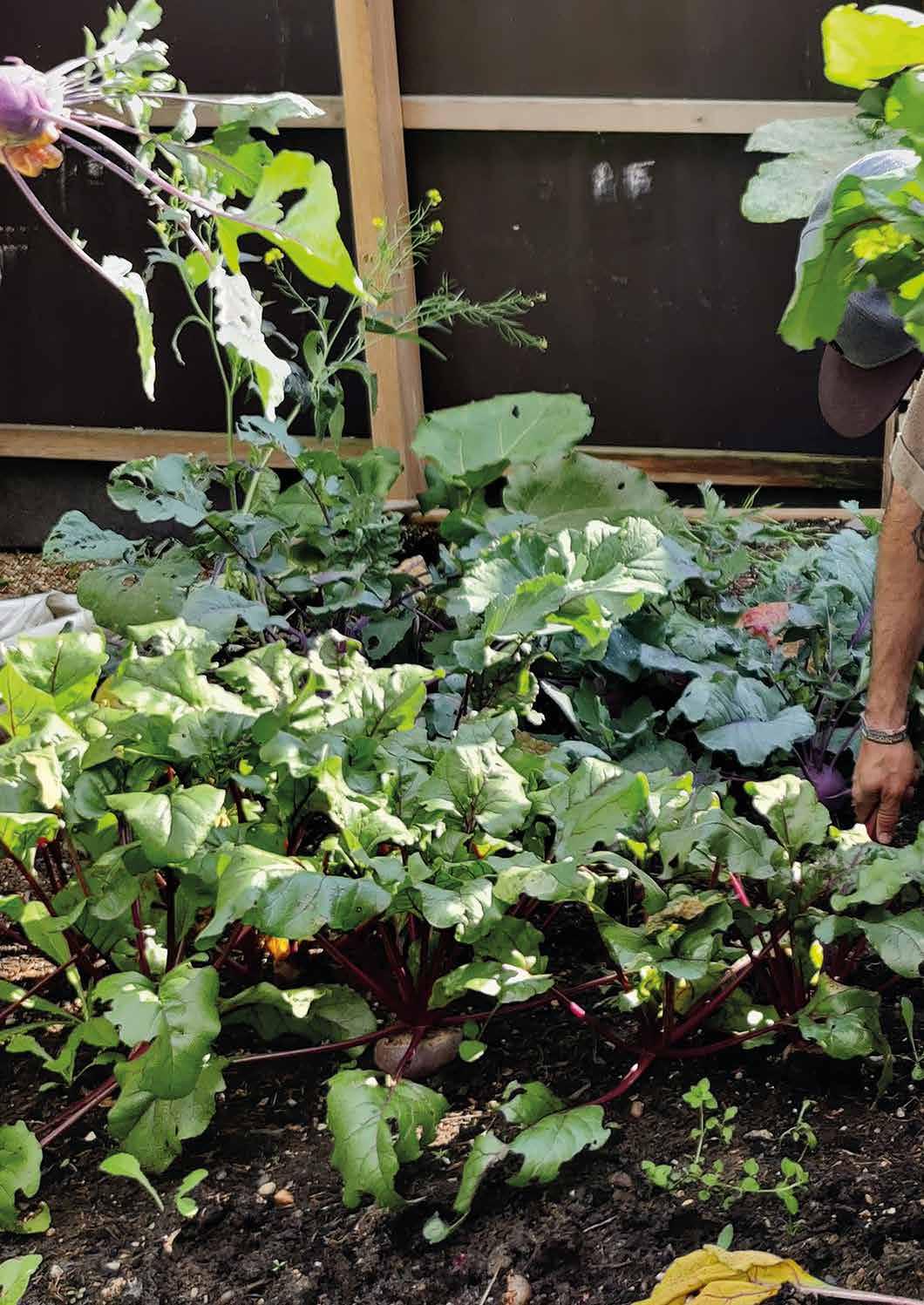
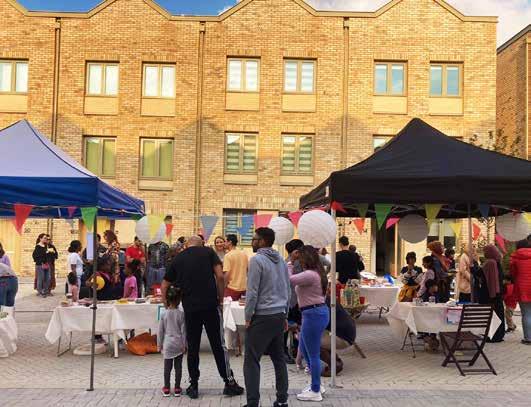

The London Borough of Barking and Dagenham (LBBD) is situated in East London with a population of 218,900 (2021). The borough has experienced the third highest population growth in England and Wales since 2011 at a rate of 18 percent. Barking and Dagenham’s demographics have also changed rapidly over the last 20 years, from 79 percent White British in 2001, to 45 percent in 2021.
In the last ten years, Barking and Dagenham witnessed the highest percentage change in residents born outside of the U.K. across London boroughs. This, in combination with the highest level of household deprivation in London, at 62 percent, has posed a challenge for community cohesion and resident well-being.
The COVID-19 pandemic exacerbated the borough’s pre-existing inequalities. Many residents continued to go out to work as key workers. Rates of exposure and infection were high, putting additional strain on families and the health sector, while some lost their jobs and their family’s source of income.
The borough also faces a number of socio-economic challenges, including low incomes, underemployment, poor educational outcomes, and high levels of homelessness, teenage pregnancy, and domestic violence. Social cohesion also remains a challenge.
In recent years, the London Borough of Barking and Dagenham’s local council has worked closely with voluntary, community, and social enterprises (VCSEs) to establish stronger and more trusted relationships for developing social infrastructure. The Council has endeavoured to develop a facilitative and participative role in the borough, sharing a place at the table for VCSE organisations to do what they do best and improve outcomes for residents. Because these groups know what their communities need, sharing power between statutory and VCSE partners results in a better offer for residents.
This commitment to a more collaborative way of working and the associated social infrastructure was exemplified in the establishment of a locality model of cost-of-living support in autumn 2022, when the Council brought together a network of local organisations to provide informal triage support. This network stretched from the local hairdresser or faithbased organisations, to Council frontline services, to ensure that residents across every area of the borough can access the right help to get them through the crisis.
The combination of need and the adoption of a new way of working put LBBD in a unique position. The borough hosted the Every One Every Day initiative for three main reasons which remain true today:
• The level of need in the borough is widespread, everyone needs to see tangible improvements in their lives;
• The Participatory City model matches the ambitions for working collaboratively with residents;
• The leadership at the Council is united and determined to innovate to improve resident lives.
Five years into Every One Every Day’s setup, the Council continues to be a strong advocate for participation and the sharing of power between the state and communities. Participation and engagement are built into council strategy and stood as a pillar of the 2020-2022 Corporate Plan.
The Every One Every Day project created thousands of participation opportunities that have benefited residents, and has shown what can be achieved through collaboration and by allowing residents to take control of their own lives.
The Council is committed to embedding the approach of Every One Every Day across the borough for the long-term, to ensure that residents can continue to get involved in their communities.
Open conversations with the VCSE will help decide what the next steps are for the borough in embedding a participatory ecosystem. This will be done through a partnership approach between the council, Participatory City, and social infrastructure partners to continue to provide opportunities or residents to participate and enjoy the benefits that meaningful participation can bring.
The design for Every One Every Day resulted from over eight years of prior research into the nature, impact and practice of practical participation culture projects across the world.
These citizen-led local projects were achieving social outcomes through an emergent approach which involved a broad based and inclusive invitation to local residents to get involved in ‘common denominator’ activities such as cooking, learning, and making. The result was a community based project model which enabled people to co-produce something tangible as part of a group of equal peers.
Analysis of the outcomes produced by these projects showed that they were able to create many positive impacts for participants including learning, social cohesion and health. They did so by incorporating some or all of the following characteristics which have been adopted as inclusive design principles within Every One Every Day:
Equality
Attracting a diverse range of participants.
Mutual benefit Involves people contributing and benefiting in a single action.
Peer-to-peer Involves people working peer-to-peer on an equal footing.
Productive activity Involves producing tangible things together.
Open accessibility Involving as many people as possible, through working to reduce all types of participation barriers.
Analysis of these projects also demonstrated that their ability to achieve outcomes over the longer term was constrained by the lack of a supportive infrastructure which could enable them to continue to do so without converting to another form in order to raise funds.
Many of the projects which did survive eventually had to develop a business model or adopt a charitable form for this to be possible. As they did they lost the essential inclusive and participatory approach which made them different and entered into a challenging and competitive environment for local funding.
Over nine years of testing and planning, including four research cycles, Participatory City Foundation has drawn on this analysis to develop a comprehensive systems approach to growing a large network of projects which can create an inclusive environment for people to participate.
Throughout our literature including this report, this is referred to as the Participation Ecosystem. This term is used to convey that the intended outcome is an inclusive environment made up of interconnected elements, but not dependent upon any single one for its continuation.
In the envisaged participatory ecosystem individual residents will come and go as their lives change; projects will emerge, develop, adapt, scale and close. The ecosystem will remain irrespective of what happens to any particular part.
This ecosystem is supported by the Participation Platform made up of social infrastructure which is designed to be fitted into cities, boroughs and neighbourhoods and which acts to enable the development of the ecosystem in the form of participation projects and networks of residents. This model is based on Designed to Scale, the first attempt to articulate a comprehensive account of this design approach to a system built around 14 (now 15) inclusivity principles for practical participation.
Every One Every Day is the first attempt anywhere in the world to attempt to build a prototype of this system at scale in a city environment.
To achieve this has required the support and strategic input of an extraordinary group of Trustees, and a
funding collaboration involving The London Borough of Barking and Dagenham, Esmee Fairbairn Foundation, the National Lottery Community Fund, City Bridge Trust, Bloomberg Philanthropies, and the Greater London Authority.
During the first phase of the project in particular, these funders aligned their funding and reporting requirements to enable an iterative and emergent implementation strategy aimed at producing a broad set of outcomes and capable of adapting to the changing context.
Underpinned by a close working relationship with the council, particularly the Participatory and Engagement Team, the result is a unique body of evidence about the design, feasibility, impact and potential of social infrastructure for practical participation.
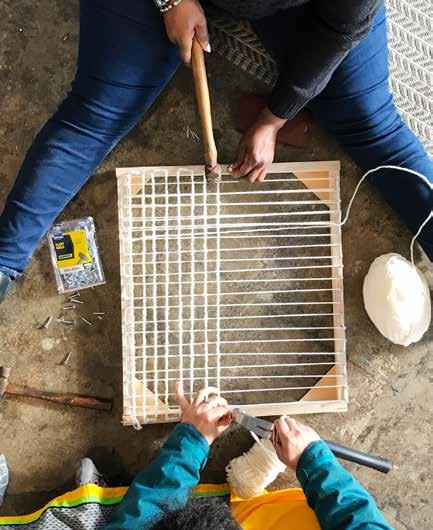
Tools to Act covered the first two years of the project plan, up until the end of July 2019. By July 2019, the platform had reached nearly full capacity, with the fourth neighbourhood space opening in Martins Corner in November 2018 and the recruitment of six new project designers. The 2019 autumn programme, which ran from October to December 2019, saw a continuation of the rapid growth pattern in participation levels that had characterised the project since it’s inception. With another shop space opening in Marks Gate in 2020, there was every expectation that this growth pattern would be replicated over the succeeding months and years.
At the point the pandemic hit, the project was on the brink of its 2020 spring programme. This would have been the biggest programme since the launch of Every One Every Day , including for the first time activities in the Marks Gate area of the borough. Restrictions on social gatherings were imposed from March 2020. This severely limited the ability of the project to create outcomes by bringing together as many people as possible as often as possible. Participatory activities were not classified as essential activities and therefore were not permissible reasons for in-person contact under the new restrictions.
In one fell swoop, the key tool for generating outcomes through this form of participation became impossible. In the immediate period after March 2020, the project sought to reshape its approach towards supporting the borough-wide pandemic relief effort and to build models of participation capable of being implemented under social restrictions.
Participatory City Foundation was a key partner in the development and execution of the Council’s approach to co-ordinating and providing relief, called BDCAN. BDCAN coordinated the provision of food and medical supplies to local residents at risk of being made vulnerable. Every One Every Day’s largest space, Everyone’s Warehouse, became a critical centre for the assembly and distribution of food parcels through local volunteers.
To adapt the participation model to social restrictions, in mid-April 2020 the team launched an online participation space, using the Mighty Networks platform. In June, it had developed a new approach
to enabling street level collaborations with minimal requirement for in-person support from the team, called Tomorrow Today Streets.
These steps had some success in ensuring that Every One Every Day continued to provide opportunities for participation, even under stringent social restrictions. However, the ability to attract new members was severely undermined and effectively flatlined during the two years where social restrictions applied. Another key development during the COVID-19 pandemic, was the launch of the Every One Every Day Kickstarter programme.
With funds from the HM Treasury Kickstart scheme, a programme aimed to create 25 local apprenticeships for young people on universal credit and invited them to build the foundations for their own locally owned worker co-operatives focussed on the production of goods essential to people’s lives. This scheme was permissible under social restrictions because it was work that was only possible to deliver in-person due to the training and production element involving Warehouse workshop spaces. This scheme ran for six months from April 2021.
In summer 2021, it became evident that there was the potential for a lasting relaxation of social restrictions and therefore the possibility of a gradual resumption of in-person participation. Recapturing the momentum lost during the pandemic was critical to the research and development strategy underpinning Every One Every Day. Nearly 18 months of participation data was lost due to social restrictions, jeopardising the project’s ability to effectively evaluate the model and produce learning and recommendations for the future development of participation approaches. Re-opening after a long and unplanned period of closure was complex and involved an entirely new layer of procedures and processes over existing participation approaches in order to comply with ongoing restrictions.
Examples included social distancing and space limitations at neighbourhood events, requirements for masking and one-way systems for entry and exit to spaces. As with other changes in behaviour caused by the pandemic, the residents of Barking and Dagenham also changed their participation patterns.
Residents were much more likely to participate closer to where they live, and less able to access opportunities further afield.
This particularly limited resident use of the Warehouse, and the ability of the project to run programmes from this building. Over the course of 2021 and 2022, a number of prototypes for how to recapture this lost momentum and rebuild resident confidence were developed. Some of these experiments have been successful and have significantly advanced knowledge about the model (for example Grounded, a collaborative coffee shop incubated by the platform), others have been less so.
This report provides a comprehensive account of the adaptations made to the model to rebuild after the experience of social restrictions, with a particular focus on the developments surrounding the Collaborative Business programme.

Under the original project plan set out in 2017, Every One Every Day was due to conclude its research and development phase by July 2022 with the aim of publishing all learning and data at this point alongside the case for continuing the project. In response to the reduction of participation data due to the COVID-19 pandemic, in November 2021, the project funders agreed to invest funds to extend the project to 2024.
This aimed to enable the platform to recapture lost momentum, further iterate the approach, and complete the research and development phase. This second phase of the project was based upon an updated research plan, designed to incorporate new learning about how the participation approach adapted to the experience of the pandemic and its aftermath. This plan included a focus upon integration with other parts of the social infrastructure in Barking and Dagenham and an emphasis upon testing the participation ecosystem as a unique, self-directed learning environment for residents.
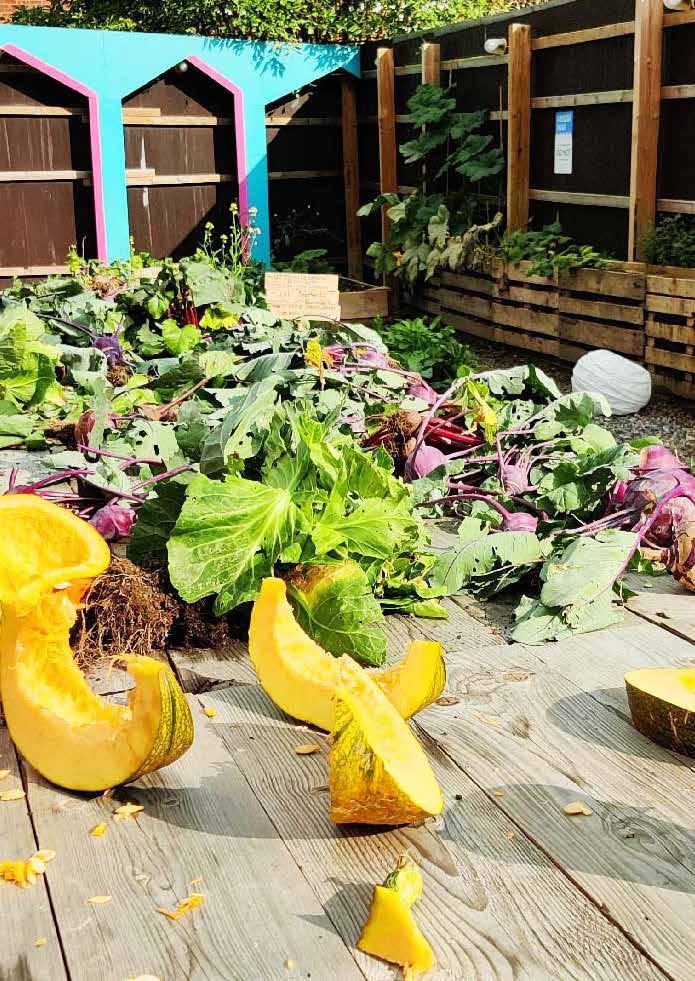
The first section of the report sets out the research approach, describing the key developments, research questions, data gathering methodology, and analysis approach.
The main body of the report contains a summary of the research data gathered by the Every One Every Day project as well as a descriptive account of the key components of the participation system and their developments since the publication of Tools to Act over three years ago. The centrepiece of this section is the first full account of the development of the Collaborative Business Programme, which is now understood as an integral part of the participation system.
The descriptive section has been written with contributions from members of the Every One Every Day team who have provided case studies to illuminate elements of the platform and ecosystem in detail.
The ‘Key Findings’ section on page 218 sets out the link between the experience of practical participation and the development of social capital for individuals.
The final section of the report summarises the preceding content and draws together some highlevel conclusions including the implications for the remaining elements of the research plan for Every One Every Day.
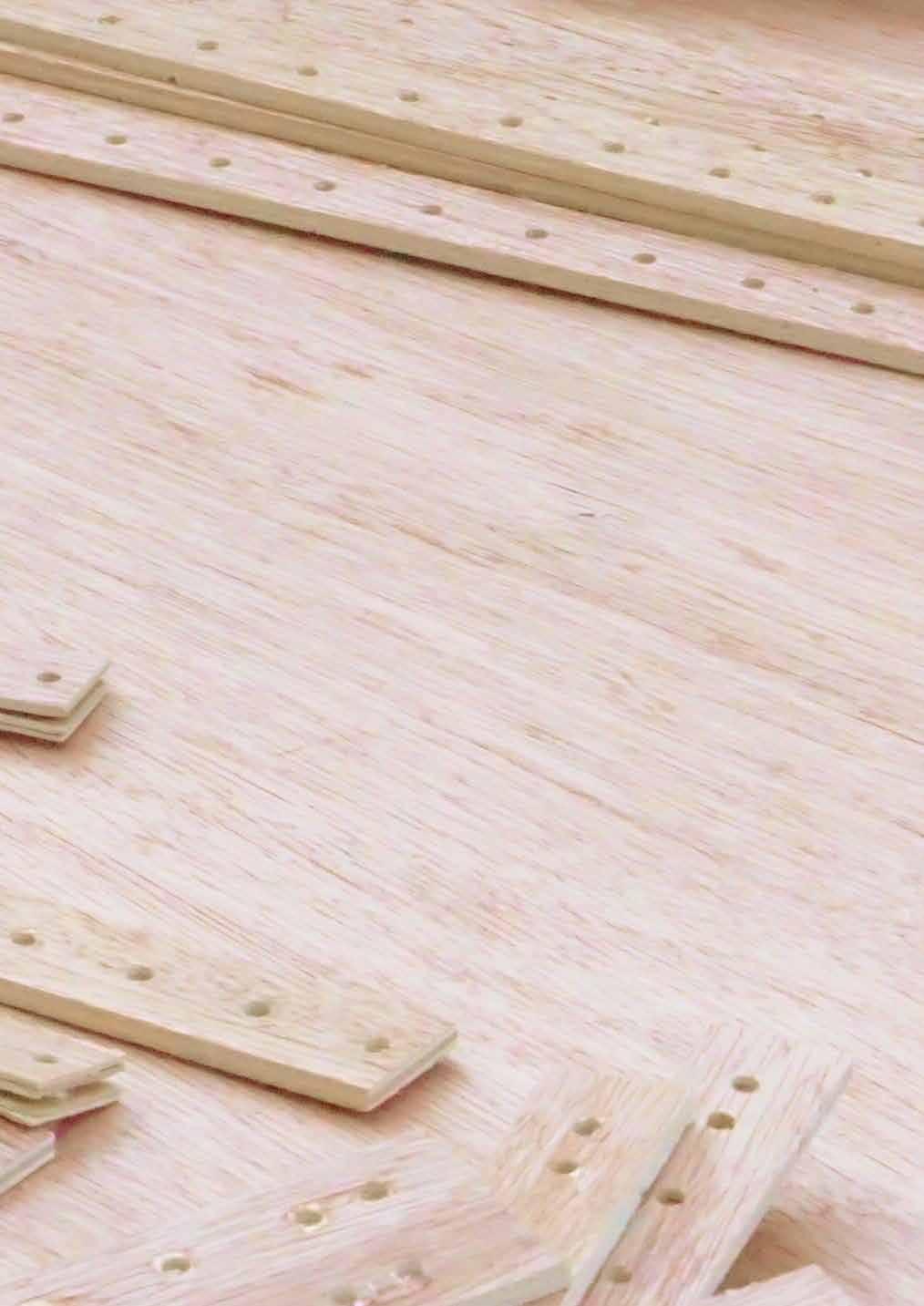
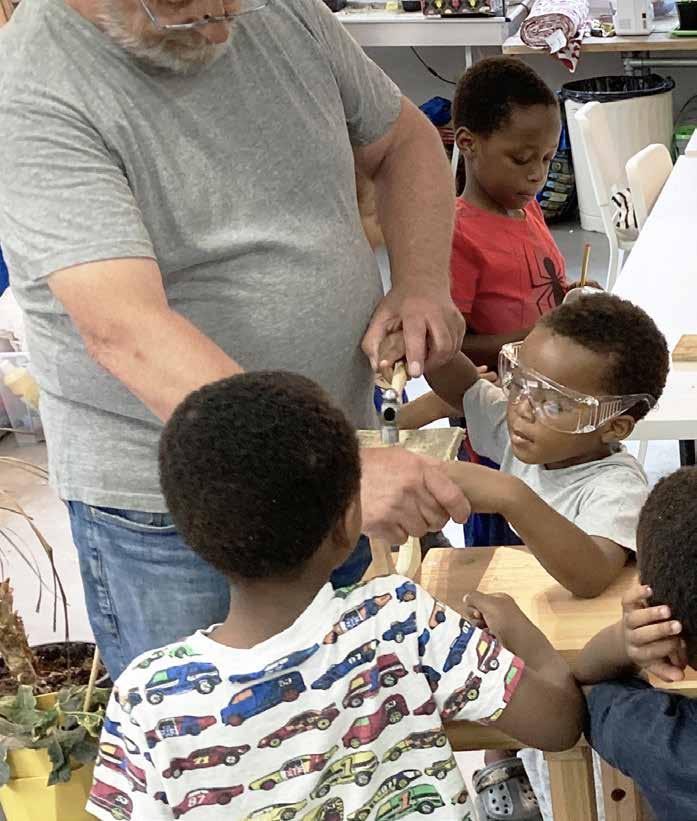
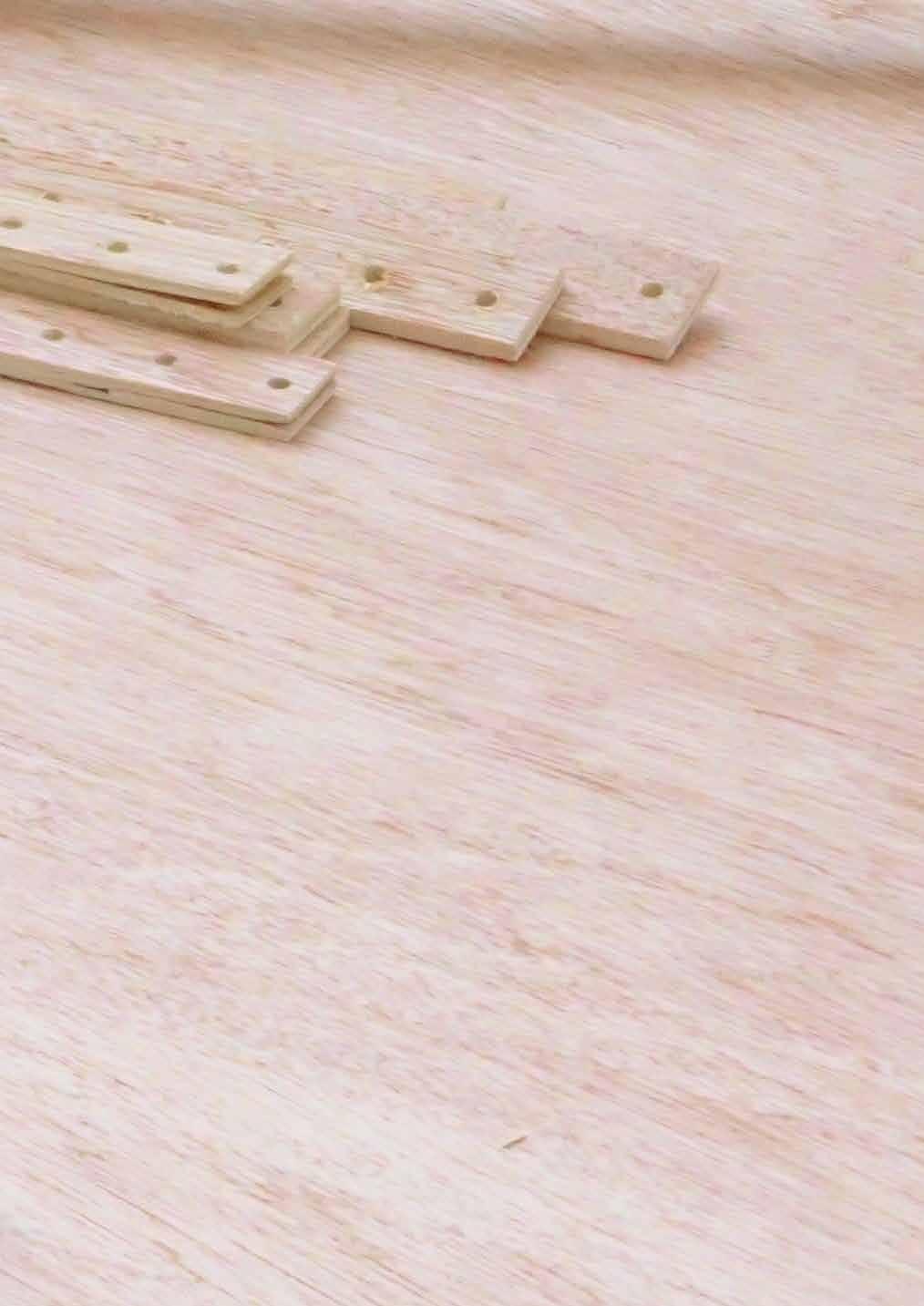


Research
Research developments
Research aims
Research questions
Research design and methodology

Qualitative fieldwork
Qualitative research stages
Data analysis
The research strategy behind Every One Every Day in Barking and Dagenham is based on over eight years of prior research that has demonstrated the value of practical participation projects in creating more sustainable cities. The goal of Every One Every Day is to establish a network of participatory culture projects on a large-scale, which can achieve longterm social outcomes that benefit individuals, their communities, and society as a whole.
Participatory City Foundation has developed a systems approach that facilitates the development of a wide range of neighbourhood project opportunities and provides the necessary support for these projects to succeed. The approach aims to create a Participatory Ecosystem that consists of interconnected neighbourhood projects and networks of residents, along with a Support Platform to maintain and grow these initiatives.
Since its launch in July 2017, the Every One Every Day project has aimed to prototype a new model where societies are more inclusive, equal and where citizens are at the centre of their communities with access to tools and resources they need to drive positive change on a personal and societal level.
Year one findings from the project showed that residents’ involvement in practical participation projects triggers a series of individual, collective, and networked effects, resulting in positive outcomes for individuals, families, and neighbourhoods. Repeat participation appeared crucial so that these effects could be triggered, however, the sequence through which these effects were produced did not appear clear.
Two years after the project was initiated, research was conducted to further investigate the benefits achieved through participation, providing more insights into how outcomes are achieved.
Year two research findings highlighted that there is a “bundle of outcomes” relating to individual agency and personal well-being that constitute the gateway to other “compound outcomes”. Again, findings confirmed that repeat participation is crucial for outcomes to be achieved, as these accumulate over time.
The project faced an 18-month gap in participation data during the COVID-19 pandemic, limiting its capability to continue researching the value created by the participatory model in Barking and Dagenham. Since the reopening of the shops in August 2021, the project has worked to redefine its research strategy to tackle new compelling questions and further the understanding of the model.
Overall, findings from years one and two proved that Every One Every Day’s systems approach applied in Barking and Dagenham was succeeding in building large-scale participation that benefits individuals and communities, contributing to empowering individuals, enhancing their well-being, and strengthening communities ties.
The latest phase of the research and development project has focused on understanding the role that participatory models play in increasing social capital, fostering a sense of neighbourhood belonging, and civic engagement. This phase has provided insights into how applying participatory culture models positively impacts numerous dimensions of social life, ultimately resulting in a greater sense of wellbeing and quality of life for individuals and communities.





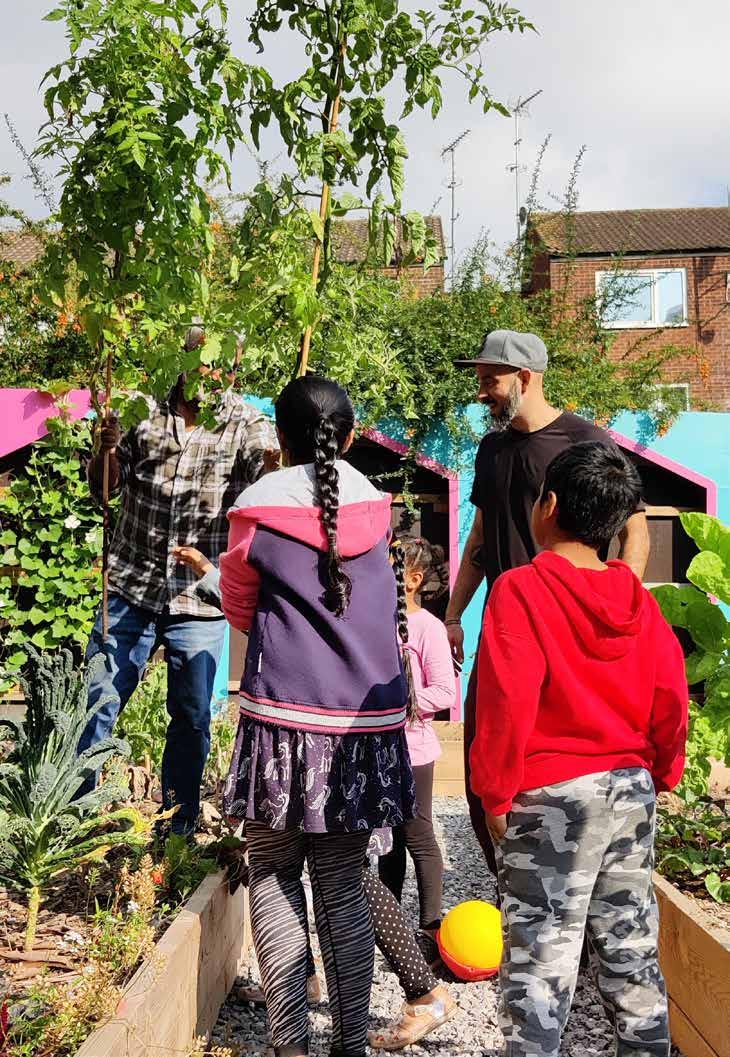
The current report builds upon the previous research findings to further develop the body of evidence around this approach to participation. It sets out a revised framework of research aims and questions which aim, on the one hand, to review previous findings and, on the other, to shed new light on the diverse dynamics of participation and related outcomes.
To do so, the research aimed to identify the main drivers of resident participation. It explored individual journeys of participation and the main drivers, expectations, and aspirations for residents and the borough. From this, a typology of participation was developed and used to investigate whether different types of participation can be tied to different participation outcomes.
Contextualising individual participation journeys also helps uncover all the potential outcomes that inclusive practical participation opportunities provides. These findings can help practitioners and researchers use the model to address specific social challenges or achieve specific goals, such as creating equitable, resident-led community development.
Understand people’s motivations to participate
Explore people’s participation journeys, particularly how motivations, expectations, and aspirations may change
Understand the benefits of participation that accrue to individuals

Understand the benefits of participation that accrue to society
Explore how participation can create social capital and social cohesion
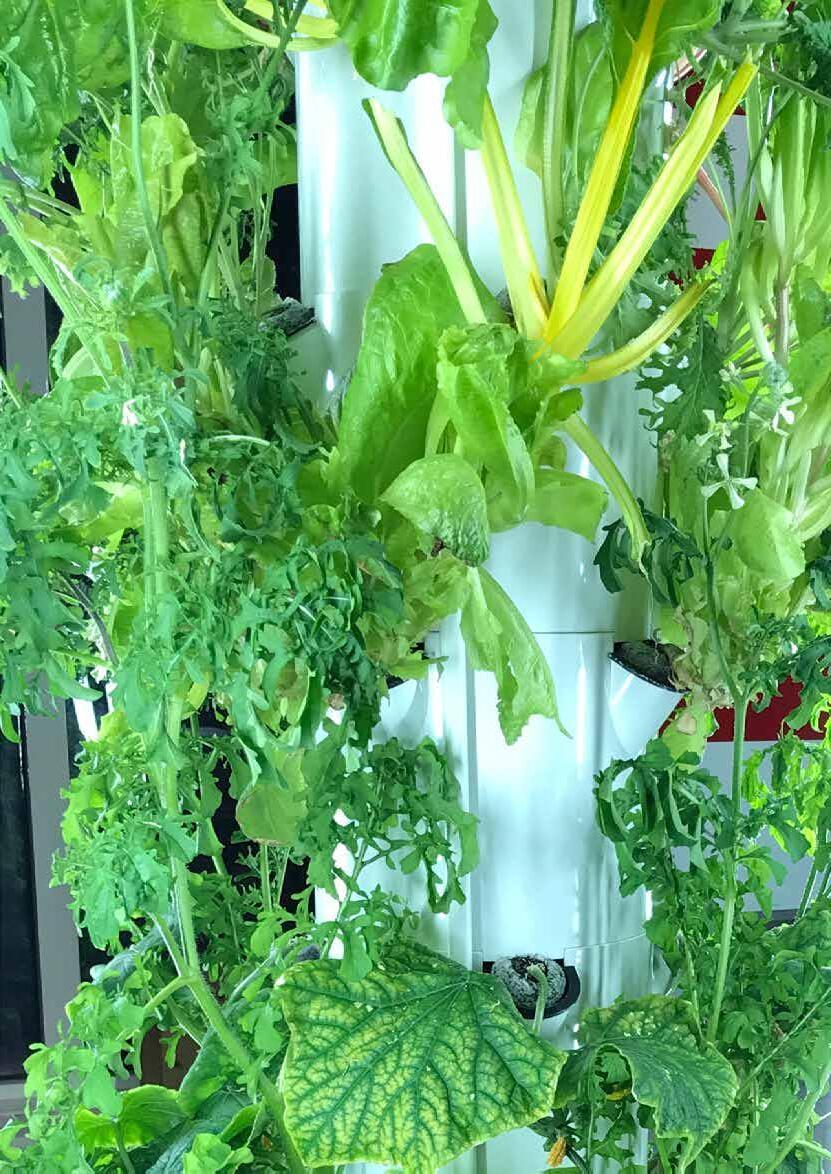

Below are the research questions that guided this phase of research.
By answering these questions, this report hopes to contribute to the scholarship on participatory research and enhance understanding of how social capital and cohesion in urban settings can be achieved through participatory activities.
In doing so, it can help catalyse positive social change that is co-designed and directed by citizens.
• What motivates people to participate?
• What are the different types of participation and their related outcomes?
• Has participating helped improve people’s lives by building their agency? If so, how and to what extent?
• What outcomes are generated through the large-scale nature of the project?
• Is the systems approach still creating value for individuals and the community that was observed in Year 1 and 2? Has this changed? How and why?
• What benefits did participation culture generate for people on both a personal and community level?
• What is the project’s theory of change and how does it achieve impact?
• What evidence do we have that the platform creates social capital amongst participants?
• Which participation experiences drive the creation of social capital?
• Does the model create meaningful and real change in people’s lives?
• What is the value of the model for communities and societies? What is the value of implementing at a large scale?
• How can the model be improved so that it can be further scaled to future communities?
The research applied a mixed research methodology, using both quantitative and qualitative methods of data collection.
As the project progressed, additional research methodologies have been developed in order to address emerging research questions and fill gaps in previous research, as well as to reflect new research objectives.
A complete list of the research methods applied during the second phase of this project and their purposes are outlined below.
Data-gathering methods:
• Daily reflections
• Participation dashboards
• Weekly developmental evaluation report
• Sign-up form
• Equality, diversity and inclusion monitoring survey

• Interviewee profile
• Structured interview
• Semi-structured interview
The team maintains a daily diary of reflections and observations about participation arising from the experience of hosting shops and delivering programmes. These reflections are a critical source of data on participation across the platform including who attends, whether they are new or returning participants, if they were accompanied, how long they stayed and what they did.
The daily reflections are aggregated and summarised into an automated participation dashboard that provides a real-time picture of participation patterns and growth across the ecosystem. The dashboard helps identify participation patterns across shops, activities, and programmes.
Each team completes a weekly developmental evaluation analysis, inviting them to reflect on: what happened in the shop that week, notable features in the data, reflections on the model, and one new idea to try. This evaluation approach enables the teams to regularly analyse the effectiveness of the platform and to use evidence to iterate their plans and approaches. This approach also helps Participatory City Foundation test hypothesis and improve understanding of what types of participation are most successful and why.
Residents that come into shops are invited to fill out a “sign-up form” to join the Every One Every Day mailing list and receive information about events in the shops. The form enables residents to share information about their backgrounds and interests so that project communications can be targeted to them appropriately. By signing up, residents also give permission to be contacted for research purposes.

This survey collects anonymous demographic data about participants, helping the team build a better understanding of who is participating and to ensure that the project remains inclusive
The structured interview is a primary tool in qualitative fieldwork. It assesses the strength of participants’ commitment to participation as well as their general expectations and motivations to participate. Combining this data with those collected by the interviewee profile and semi-structured interview, can help determine how commitment levels relate to individuals’ expectations and ambitions for change. This helps identify any relationships between repeat participation and outcomes.”
Residents who agreed to be contacted for research on their sign up form may be invited to be interviewed about their experience of participation, creating an Interviewee Profile. The profile gathers demographic data and qualitative information about their participation experience. This information helps assess how dimensions such as gender, ethnicity, employment status, education level, and marital status affect participation. Finally, the data collected in the profile helps to deepen the understanding of similarities and differences in participation dynamics, as well as patterns leading to outcomes.
The semi-structured interview is a one-to-one in-depth interview with residents in the form of a natural conversation between the researcher and the participant. It examines the participant’s personal participation journey, and aims to capture the impact of the model on people’s lives, as well as individual and broader outcomes. The main aim of the semi-structured interview is to assess the model’s potential to generate wider benefits at a borough level, providing insights into how the model creates social capital.
In autumn of 2022, qualitative fieldwork was carried out to enhance understanding of a model and its benefits for participants.
This qualitative fieldwork was designed to provide a comprehensive understanding of how the model operated in Barking and Dagenham, as well as to assess its suitability in other areas.
This section provides a detailed account of the data collection process, as well as information about participants interviewed as part of the fieldwork. It also includes the research aims and questions for each data collection method used.
Aims
The fieldwork approach aimed to achieve the revised research objectives, address new inquiries, and most importantly, evaluate the model’s ability to create social capital and improve social cohesion in the Borough.
Although each method targeted diverse research aims and questions, their results were triangulated not only to verify the accuracy of the data analysis but also to gain deeper insights into participants’ experiences and identify participation patterns that resulted in both personal and social benefits.

A total of 30 participants were recruited and interviewed on the basis of two sets of criteria:
• The duration and frequency of participation (how long had they participated for and how much did they participate)
• The nature of participants’ relationship to the project (for example through shops, the Warehouse or via the collaborative business programme).
Afterwards, participants were organised into categories according to:
• Length of participation (i.e., long term (above 2 years participation) or recent participants (less than 2 years participation))
• Primary entry point into participation (i.e., shop, Warehouse, collaborative business programme)
• Depth of participation (for which levels of induction into various aspects of the platform was used as a proxy)

These selection criteria were chosen to create a heterogeneous sample of participants, which specifically captured a diverse range of experiences and outcomes reflective of the main groups within the project’s participants.
This approach was selected for its suitability to enable an analysis of how outcomes are achieved for individual participants and to begin to formulate a participation typology which can become the basis of future research.
Limitations to this sampling method
This sampling method does not capture the experience of those in the very early stages of participation, or who had stopped participating. While some barriers and constraints on participation can be inferred
from the qualitative research, additional research with those whose participation had ended would be needed to develop firm hypotheses and conclusions.
It is also clear that the sample, though reflective of the diversity of the borough, is not proportionally representative of the prevalence of diverse groups. This limits the extent to which the findings can be generalised and the resulting conclusions presented in this report, should be understood as representing new hypotheses, rather than firm findings.
A two-stage recruitment process was employed to select participants. In Stage 1, the shop teams identified potential participants who met the participation criteria. In the Stage 2 , each potential participant was contacted via email, phone, or in person by the shop teams and research staff.
Each participant was invited to one or more research activities, such as structured and semi-structured interviews. Interviewees who agreed to participate in semi-structured interviews were required to complete an interviewee profile and structured interview before the actual interview. To improve the likelihood of recruitment, £5 vouchers were offered to interviewees.
The process of recruiting participants commenced in early September 2022, and the fieldwork interviews were conducted between October and November in Barking and Dagenham. The primary fieldwork locations were the Every One Every Day Shops and Everyone's Warehouse. To accommodate participants' specific needs, some interviews were conducted online.
The qualitative research fieldwork activities included an interviewee profile, structured and semi-structured interview, and focus groups. Those activities were divided into two stages focussed on achieving distinct research aims.
To map sample participants’ demographic profile.
To understand residents’ participation patterns in relation to their expectations and motivations.
The semi-structured interview helped evaluate the impact of the model on participant’s lives. By quantifying outcomes and categorising participation patterns, it also aimed to assess the project’s potential to generate social capital for participants.

• Who are the Every One Every Day fieldwork participants?
• How do the individual demographic variables intersect with each other to create different experiences of participation?
Participants in the research project were asked to complete a survey asking questions about their demographic profile. The resulting demographic profiles enabled triangulation of research methods to address research questions from multiple angles, mitigate biases, and deepen the understanding of the model.
• How long have participants been involved with Every One Every Day?
• How frequently do they participate?
• What are the main factors that motivate them to participate?
• What benefits do they ascribe to their participation?
• What is the relationship between participation duration and frequency and outcomes for individuals, families, and neighbourhoods?
The structured interview collected general information about people’s participation patterns, including duration, intensity, and motivations. Furthermore, it collected subjective data on the actual and desired outcomes achieved through participation.
The structured interview comprised 18 multiple-choice questions that helped inform the semi-structured interview. The structured interviews developed a narrative of the resident’s participation journey, generating case studies that outline the role of repeat participation and the specific outcomes that result from it.

• How do residents understand and describe their participation journeys and motivations for participation?
• What direct and personal outcomes do participants report and how do these relate to increases in individual agency?
• What are the potential social outcomes of participation, specifically participants’ potential to develop collective agency and social capital.
The semi-structured interview comprised 37 open-ended questions, in which the research participants were invited to articulate their views and opinions in depth.
Additional questions were added for participants on the collaborative business programme. Interviews took place in an Every One Every Day location and lasted about one hour.
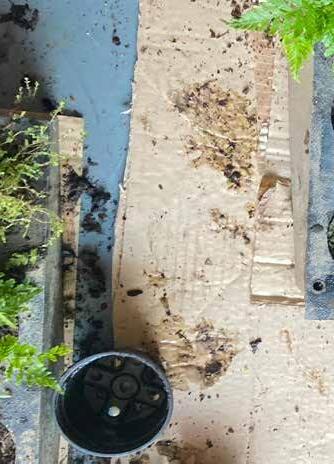
The research has been designed and conducted in accordance with best ethical practice for social research.
A structured approach to data collection and management is critical to be able to conduct social research ethically and efficiently.

In order to ensure accuracy, both semi-structured interviews and focus group discussions were recorded using audio equipment.
Once transcribed, the voice recordings were securely disposed of. These recordings were uploaded to a shared drive immediately after the interviews were completed and will be kept for a maximum of three years after the end of data collection.
The recorders were cleared of all recordings after the upload. The transcriptions were completed by a team of transcribers and then uploaded to Delve, which is a tool for qualitative coding and analysis.
To protect the privacy and identities of the participants, their information has been anonymised and they have been assigned pseudonyms. The confidentiality of the shared information has been guaranteed, and no information has been disclosed without consent.

Before starting the interview, each research participant was provided with a participant information sheet detailing the purpose of the study, the methodology applied, their involvement in the research and information about data storage and confidentiality.
Participants were also asked to complete a consent form requiring them to confirm that they understand the voluntary basis of their involvement in the research and agree to allow the project to gather and use the information they provide.
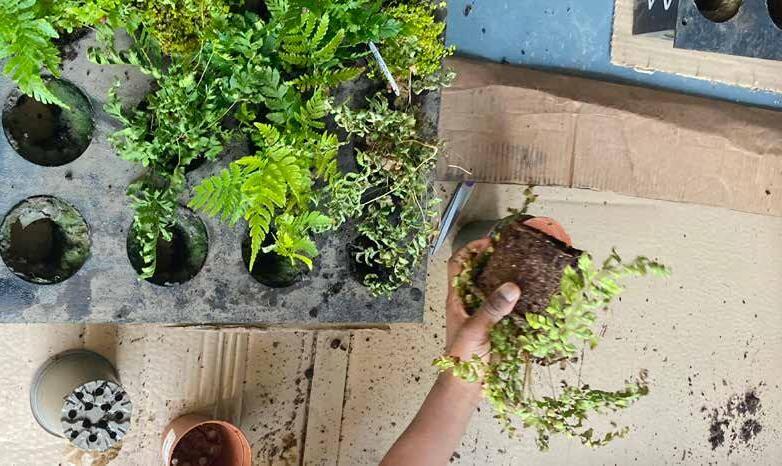
The primary method of data analysis used in this research is grounded theory, which is based on inductive reasoning to reveal meaning, patterns, and behaviour.

The research used open coding, axial coding, and selective coding to generate new concepts, codes, categories, and subcategories, ultimately leading to the identification of one core category that represents the main theme of the study.
Interviews were conducted until theoretical saturation was reached. In addition to qualitative methods, the research relied on various quantitative data sources to investigate the phenomenon of participation from different perspectives, addressing multiple research objectives.
To ensure the validity and reliability of the data analysis, the research applied data triangulation, including method triangulation and data source triangulation.
Method triangulation involves the use of multiple qualitative and quantitative research methods, such as interviewee profiles, structured interviews, semistructured interviews, daily reflections, weekly participation dashboards, and developmental evaluation reports, to answer specific research questions.
Data source triangulation involves collecting data from multiple types of research participants to capture multiple perspectives and nuances of the same phenomenon. Ultimately, the research relied on data analysis triangulation to draw findings and concepts from the data using an inductive method.
The research utilised different research methods to understand different research questions. Quantitative data analysis was used to answer general questions about the feasibility of the model and its impact on the neighbourhood from the perspective of residents. Semi-structured in-depth interviews were used to answer specific questions about the value, outcomes, and overall impact of the model on a personal and immediate community level.
The interviewee profile and structured interviews were used to understand the needs, aspirations, and expectations of change of different categories of participants on a personal and societal level.










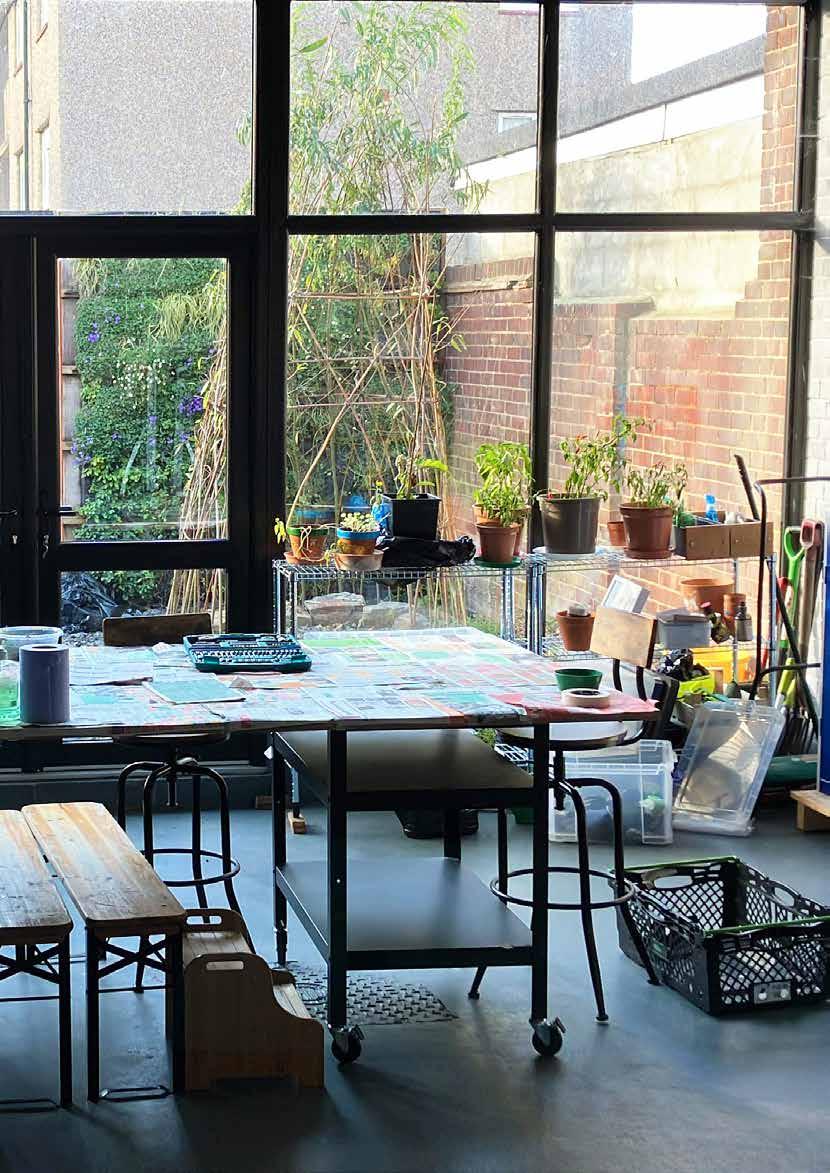
The participatory support platform
The participation ecosystem
Ecosystem growth
Registered participants
Participation patterns

Participant diversity
Platform developments
Ecosystem developments
The platform during COVID-19 Pandemic
Every One Every Day is the first attempt anywhere in the world to build a full-scale system for practical participation.
The system aims to create a diversity of opportunities for local people to participate in their neighbourhoods and further afield. Through inclusive participation, people learn and share skills, connect and develop ideas with one another, and create their own communities.
This system is made up of two components;
The participation support platform is infrastructure, such as spaces, access to a skilled project design team, project resources, and making opportunities. All elements of the system are designed according to 15 inclusivity principles that help ensure opportunities are accessible and fit around people’s lives.

The participation ecosystem is an ever-changing network of local people, projects, and collaborations that create thousands of inclusive opportunities for local residents to participate in practical, enjoyable activities in their neighbourhoods.
Design principles for inclusive participatory ecosystem
Low time and commitment. No or low cost.
Simple and straightforward. Many opportunities with wide variety. Nearby and accessible.
Opportunities from beginner to expert. Promote directly and effectively. Introduce or accompany.



Tangible benefits to people. Attracting talents not targeting needs. Fostering inclusive culture.
100% open - no stigma. Build projects with everyone. Welcome children. Everyone on equal footing.
A collection of many and varied practical ‘participatory culture’ projects and collaborative businesses.
A collection of co-ordinated shared infrastructure
Network of shops and warehouse
Makes it easier for many people to participate regularly in practical projects that fit with their everyday life.
Operations and logistics
Makes it easier to support, maintain and grow collections of projects.

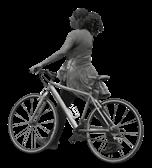
Design principles of support platform


A system of practical support. Makes it easier to start and grow ideas. Works quickly.
Reduces and shares personal risk. Proper co-production design. More people involved as co-builders. New ways for organisations to collaborate. Support collections of projects. More opportunities to grow confidence.
Trained team
The participation support platform comprises the infrastructure that enables the production of the ecosystem.
There are three core components of the support platform: spaces, a skilled team, and access to tools and resources.
The network of neighbourhood spaces act as incubators for neighbourhood-based project development. They are strategically located across the borough to be accessible to where residents actually live and work. The goal is for all residents to be less than a 15-minute walk from a neighbourhood shop.
The team of project designers are specially trained in inclusive project design principles and models of collaboration. They have a skill set that includes: working with people, hosting spaces, co-designing projects and programmes, and co-delivering activities and events on a large scale.
The last part of the support platform is inclusive access to the tools needed to deliver the ideas emerging from co-design. These tools range from project materials needed to run sessions, to the machinery and functional spaces housed in Everyone’s Warehouse. Inclusivity is created by a set of operational processes including access to insurance, certified training (food safety, health and safety, etc), keyholding inductions, and booking systems to reserve spaces.

A system of practical support
Makes it easier to start and grow ideas
Works quickly
Reduces and shares personal risk
New ways for organisations to collaborate

Co-production design
More people involved as co-builders
Support collections of projects







More opportunities to grow confidence

The participation ecosystem is a constantly evolving set of project ideas and activities that are continuously being designed, tested, grown, paused, discarded, or replicated. Analogous to ecosystems in the natural world, the participation ecosystem is a complex system that develops organically, is unpredictable in form, and is rooted in the shifting and interdependent relationships of many diverse and distinct parts.
The participation ecosystem shares the following characteristics with other organic models:
• Interdependence and diversity of parts


• The ability to adapt, learn and evolve
• Emergent behaviours or properties


• Organic or natural growth and renewal patterns
These properties are generated by a design approach centred on a set of 15 inclusivity principles which by ensuring the ecosystem is open to the greatest possible diversity of residents, invites a constant stream of new ideas, new perspectives, and new skills into the ecosystem, continually changing the range and scope of possibilities in the process.
By applying this design approach, Every One Every Day project designers engage residents in a unique co-production zone, in which contributions from the team, such as resources, stimulation ideas, and communications, are combined with contributions from residents, including their ideas, local connections, and project ingredients.
This approach means residents can self-direct to the opportunities most suitable and accessible to them, and can do so as contributors, makers, teachers, and learners, instead of users and consumers of services and products.
Many opportunities - wide variety
Introduce or accompany
100% open - no stigma












The ecosystem data in this report sets out the growth of the Participation Ecosystem from project inception to December 2022. In considering this section, it is important to note that data collection was heavily affected by the COVID-19 pandemic which effectively resulted in an estimated 18-month gap in participation data. As a consequence, the growth patterns in years three and four in particular should be treated with a degree of caution.
Against these key metrics a general pattern emerges up to March 2020 of linear growth in the size and scale of participation opportunities created by the project and a corresponding growth in the numbers of residents participating as members or nonmembers of Every One Every Day. This was in keeping with the theory of change underpinning the approach.
Once social restrictions were in place, in person participation became impossible and, while some forms of project development were amenable to being co-produced online, there was a predictable and inevitable impact on overall growth in the size of the ecosystem.

As can be clearly seen in the data shared here, it is now clear that the pandemic had two key impacts on ecosystem development. Firstly it effectively stalled growth for the periods in which social restrictions were in place. Secondly it significantly undermined the momentum which the project had built prior to March 2020. This latter effect can be seen in the much slower rate of growth in the post COVID-19 period than was the case before it.
From accounts shared as part of this research, residents described a complex interplay of multiple factors affecting their lives in the post pandemic world, particularly as this began to intersect with an emerging cost of living crisis in late 2021. These included changed family and personal priorities, challenging economic circumstances, anxiety about the future, and decreases in self-confidence.
When considered in the light of anecdotal evidence from team members which highlighted increased reluctance on the part of residents to travel across the borough to access participation opportunities, it is clear that resident behaviour changed markedly after the pandemic.
The effect of this was particularly marked at Everyone’s Warehouse, where it was noticeably more difficult to draw residents across the borough to access learning and other opportunities being developed there.
Conversely, the experience in the neighbourhood shops, particularly at the Heathway shop, which opened in August 2021, was that residents responded strongly and immediately to the opportunities available to them in a highly accessible location. The growth in registered and non-registered participants after August 2021 was notably driven by the new shops in Heathway and Marks Gate and provides further evidence of the importance of neighbourhood infrastructure to drive participation outcomes.
Aside from in person participation, the pandemic created an urgent need and an opportunity to develop online forms of participation capable of driving some participation outcomes. As described on page 73 the project deployed the Mighty Networks software to enable people to connect, share ideas, knowledge, and participate in activities online. While this was successful in ensuring that some residents were able to remain connected and involved, it was clear that the vast majority of members did not make the transition to online forms of participation.
Once in person participation became possible once again, the team de-prioritised online participation models in order to resume neighbourhood based work. This accounts for the small numbers of additional members of the online community in year five and beyond.












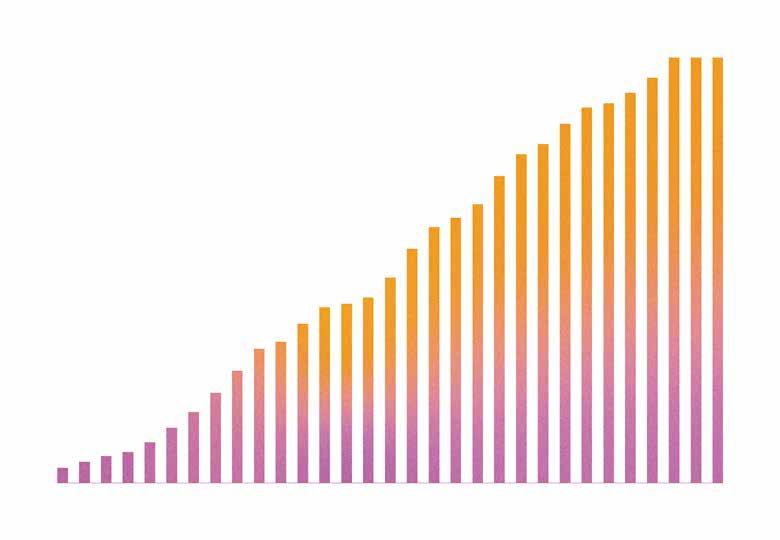

New (37.2%)
Returning (62.8%)
Visits by time of day
Morning (34.1%)
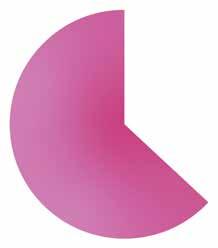
Afternoon (58.7%)
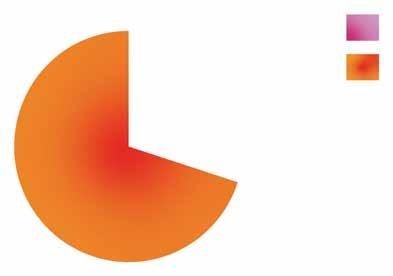


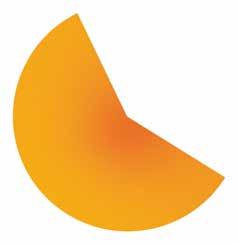



Evening (7.2%)
Planned vs walk-ins
Planned (30.2%)
Walk-ins (69.8%)
Between March and December 2022, Every One Every Day launched five programmes: Spring, Pre Summer, Summer, Pre-Autumn, and Autumn.

6914 Number of visitor to shops between March and December 2022
Programmes have historically been able to drive participation within the Every One Every Day spaces, as fluctuations in number of participants per week during programmes and in-between programmes demonstrate. Usually, the platform experiences less interactions with participants in between programmes and in periods when the team is working on developing new ones. Also, attendances are impacted by the schedule of events that usually have high attendance, school holidays, and the lengths of programmes itself, which usually vary in length, with the maximum length of the programmes mentioned above being 10 weeks (Summer Programme, 05 July 08 - Sept 2022) and the minimum 4 weeks (Autumn Programme 17 Nov - 15 Dec). Hence, differences in participation should be attributed to many reasons.
37% Percentage of participants who are visiting for the first time and 63% returning
Over a period of several months between March and December 2022, the Every One Every Day spaces were visited 9818 residents (including approximately 2800 children who attended with adults). Most of the people who attended were residents of the Barking and Dagenham Borough (89%); 37% were new participants, and 63% were returning. These figures confirm a trend, indicating that residents who are returning to the spaces to engage in activities are in greater numbers than those visiting the spaces for the first time. Regarding the time of the day people usually visit the shops, the vast majority prefer to visit in the afternoons and a smaller percentage in the mornings. Further to this, data shows that between March and December 2022 seven out of 10 people walked into the shop, while three out of 10 planned their visit ahead of time.
Overleaf is a summary of the equality data pertaining to Every One Every Day project participants, which has been gathered from a total of 151 people who agreed to share equality and diversity data - gather in a new sign-up form launched in June 2022 - out of a larger group of 806 participants who registered between June and December 2022.
What is your sexual orientation?
Heterosexual (74.3%)
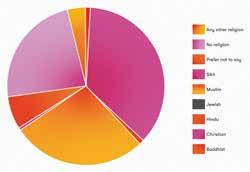

Homosexual (0.7%)
Lesbian (0.7%)
Bisexual (3.7%)
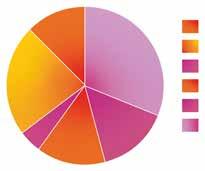
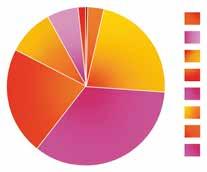
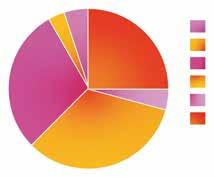
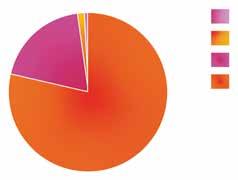
Other (4.4%)
to say (16.2%)
to say (8.6%)




















Full-time (31.3%)







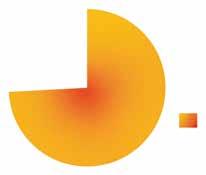

Part-time (14.8%)

Self-employed
Unemployed
Retired (4.5%)
to say (12.5%)
What gender you identify with?
Male (19.2%)
Female (78.8%)
Non-binary (1.3%)
to say (0.7%)
What is your religion or belief?
Christian (36%)
Muslim (27.5%)
Hindu (1.1%)
Buddhist (1.1%)

Sikh (0.5%) Jewish (0%)
Any other religion (3.7%)
No religion (23.3%)
Prefer not to say (6.9%)
What is your age group?
Under 16 (0.5%)
19-29 (22.5%)
30-39 (34.6%)
40-49 (22%)
50-59 (9.4%)
60-69 (6.3%)
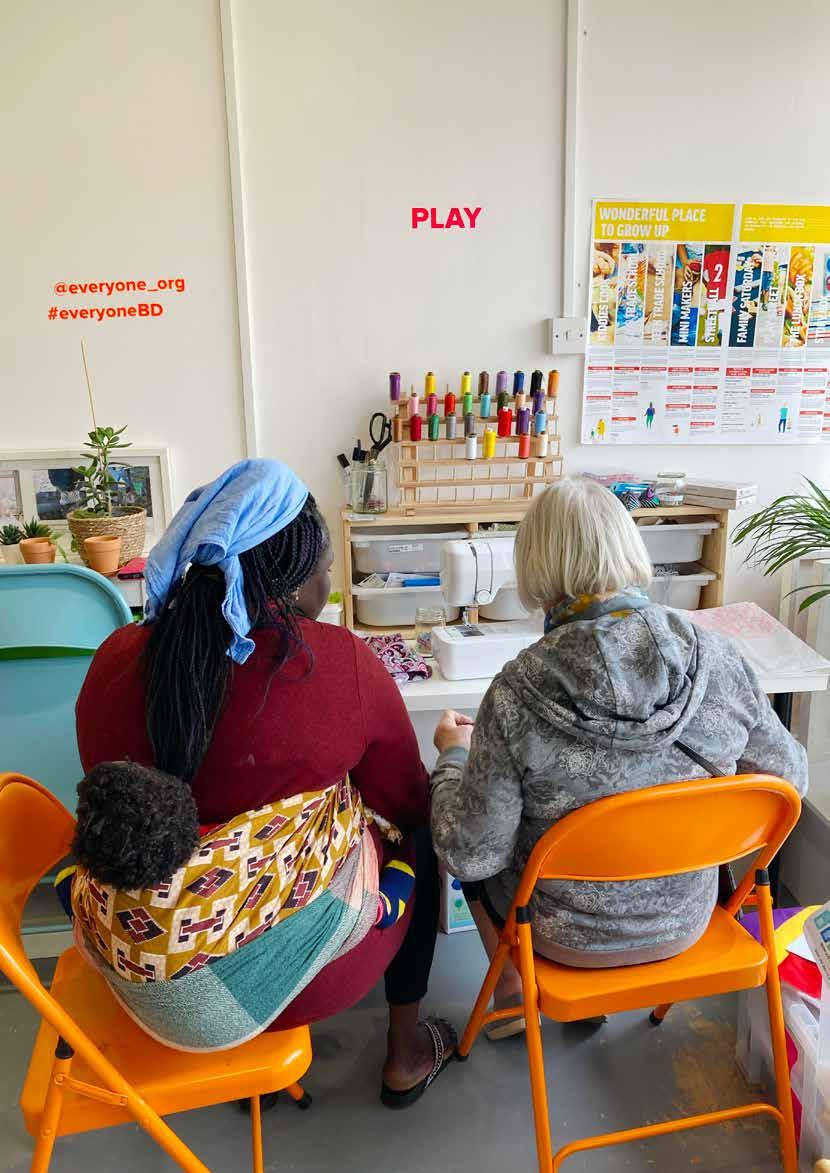
Since the publication of Tools to Act there have been a number of key developments in relation to the platform which have altered the capacity of the participation system to simulate and respond to resident project ideas.
From the outset of the project the location of Every One Every Day spaces was governed by the aim to achieve borough wide coverage and the available project resources
This resulted in a project plan which sought to expand to five locations across the borough over the course of the project’s first three years, with the optimal team size in each space set at a minimum of two and a maximum of four depending on factors including footfall and project designer experience.
By February 2020 this had been achieved, with the project’s fifth shop opening in Marks Gate.
As described elsewhere in this report, following the COVID-19 period, patterns of resident participation changed in some fundamental ways substantially affecting comparative footfall across the shop locations.
At the same time, new opportunities emerged across the borough including through the project’s connections and partnerships with, amongst others, Be First, the council’s development and regeneration arm, Barking Riverside London, the developers of the Thames and Riverside area, and the GLA.
This saw the project move out of two spaces in Porter’s Avenue and Church Elm Lane and into new premises in the Heathway Shopping centre, at the same time adopting an approach to building new hubs for participation activity through partnership with new organisations.
The original project strategy always envisaged the development of hubs for participation approaches across the borough which could implement participation project models with reduced reliance on the shops and the team.
As lockdown took hold in March to June 2020, with the team unable to work directly with residents, this aspect of the strategy was accelerated. The aim was to develop a way for residents to stay connected through practical participation in their streets and neighbourhoods despite the restrictions in place.
The resulting approach - Tomorrow Today Streetswas developed in partnership with the IKEA Live Lagom programme, and launched in early June 2020. It comprised 24 project starter kits build on kit donated by IKEA, distributed to participating residents. Resident street teams were then supported to implement the projects themselves through a series of online and socially distanced workshops delivered by the neighbourhood team.
During late summer and autumn 2020 over 60 streets applied to implement projects in their neighbourhood and 12 eventually launched their Tomorrow Today Street in the spring of 2021 (the originally planned launch date of August 2020 had to be deferred due to new lockdown restrictions imposed at that time).
As described in Tools to Act, in 2018, Participatory City Foundation received a capital grant of £850,000 to build the practical making infrastructure as part of the participation system. This included the fit out and equipment of Everyone’s Warehouse, based at 47 Thames Road.
Whilst the core elements of the Warehouse were in place by March 2020, the pandemic delayed full completion of the capital spend. This unforeseen hiatus enabled the plan to be focussed to support Post COVID-19 recovery and specifically deploying remaining capital towards equipping a distributed making platform across the neighbourhood shops.

This approach saw a ‘Warehouse in a Box’ designed for each of the neighbourhood spaces, containing smaller scale equipment for cooking, fabric work, repair and plastics repurposing.
In Mark’s Gate, at the opposite end of the borough to the Warehouse, a more comprehensive set of workshop equipment has been installed, including woodworking and urban gardening.

In May 2020, Tessy Britton published Universal Basic Everything, a medium post which set out a post-COVID 19 vision for how our local economies and communities could produce the things we most need, in ways which do not harm our social and environmental ecosystems.







This thinking influenced a refocus of the making infrastructure to equip the borough with the means to develop and test circular economy models of local economic growth. A key element of this approach took the form of the UK’s first precious plastics machinery imported from the builders in Holland and installed in the messy making area of Every One’s Warehouse. This machinery creates the
Ripple Road
55 Ripple Road, IG11 7NT
Porters Avenue
5 Porters Avenue, RM10 5YS
Rose Lane
111 Rose Lane, RM6 5NR
Heathway Unit 11, The Mall, Heathway,
Church Elm Lane
116 Church Elm Lane, RM10 9RL
6 Thames
47 Thames Road, Barking, IG11 0HQ
capability for waste plastic to be ground up and pressed into sheets to be used on other machines such as laser cutters and CNC cutters, or to be pressed into moulds.
Coupled with the Maker In Residency programme this has seen approximately one ton of plastic repurposed, more than 100 sheets created, many prototype plastic products created, 40+ residents and 2 organisational members trained in the delivery of the process for shredding, pressing and moulding thermoplastics.

Since the publication of Tools to Act there have been some notable iterations to the ecosystem of opportunities created by the Every One Every Day project.
In line with the experimental methodology underpinning the project these iterations have taken the form of practical prototypes aimed at developing and testing participation approaches and their ability to create new entry points into the ecosystem for residents.
As set out in Tools to Act, in the first two years business development focussed on the incubation of local makers under collaborative brands.
Since this time the approach has developed to incorporate new thinking on circular and inclusive economies as well as Tessy Britton’s published thinking on essential living. This has resulted in new prototypes centred on co-operative business models drawing on participatory approaches to build resident collaborations.
Key examples of this new approach include Essential:Works - an attempt to build local cooperatives with young people in receipt of Universal Credit - and Coffee:Works - a partnership with Barking Riverside Limited, to develop a co-operative cafe based out of The Wilds, a new building on the Riverside development.
These are described in detail on page 198
The Maker in Residency programme sought to build learning and making capacity in the Warehouse in order to create a new set of options for resident participation and speed up learning and access in the workshop spaces.
This was partly an attempt to recapture some of the momentum in the building which had been lost to COVID-19 pandemic but also to test out approaches to further encourage the workshops being more participatory and self-running.
The programme recruited local makers seeking premises and infrastructure to produce their products, and offered them free private space and shared access to workshops in exchange for designing and delivering technical learning courses for residents and opening up their material and product knowledge to local people.
The Maker in Residency approach will be described in full in a following report as part of a comprehensive account of the participation system as a unique learning environment.

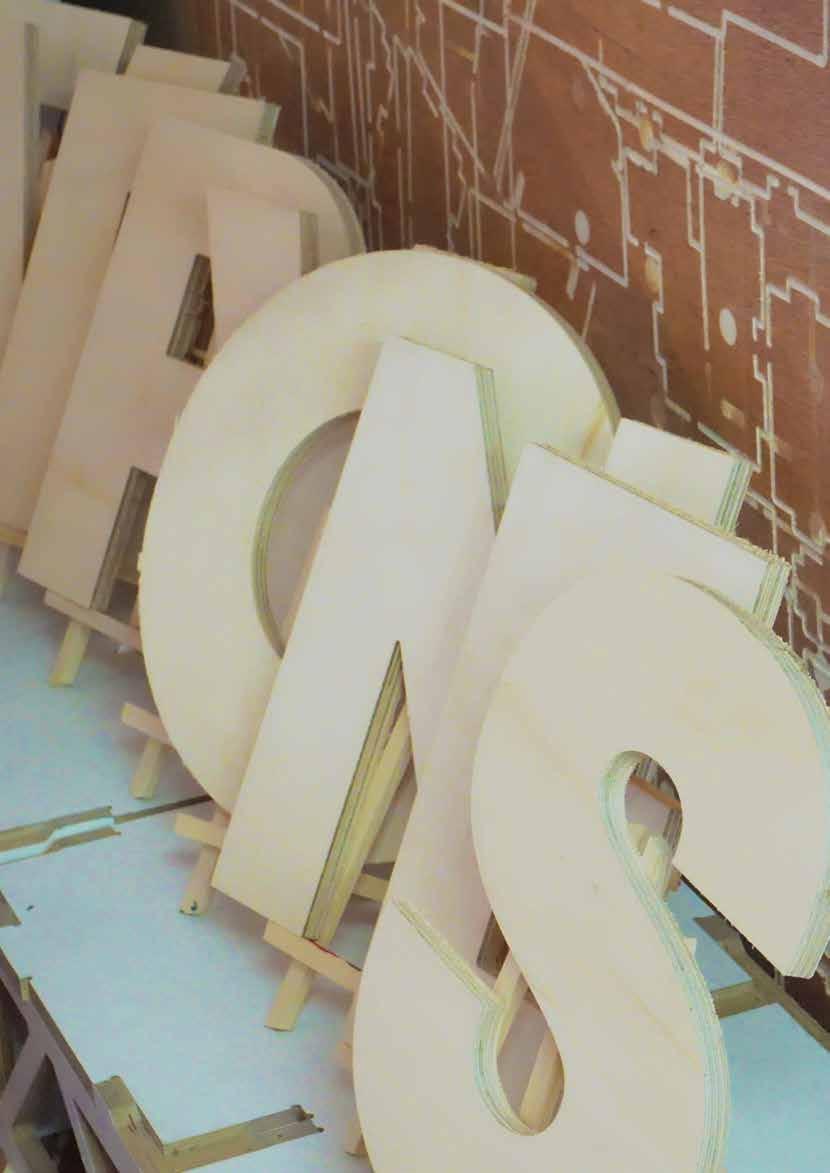



BDCAN
As the COVID-19 crisis emerged, Participatory City Foundation, like so many other local organisations, was determined to deploy its resources to support local residents facing multiple challenges.
As an organisation with a borough-wide presence, a network of thousands of resident members, and access to spaces and a team with deep connections into local neighbourhoods, Participatory City Foundation was well placed to support the development of BDCAN, a council led strategy to prevent residents falling into vulnerability or crisis as a result of the extraordinary circumstances.
BDCAN sought to work with local partners to identify and support local residents at risk of being tipped into crisis due to the pandemic and to prevent this by coordinating the sharing of local intelligence, communications to residents, and the distribution of essentials to residents in need.
In the initial stages of BDCAN’s development, Participatory City Foundation worked with cross borough partners to design this approach by preparing a publication to set out the process and ensure roles and responsibilities were clear.
Under the BDCAN approach, Participatory City Foundation became a locality lead for the Thames and Riverside area (one of six locality leads covering the borough), and the Warehouse was given over to the co-ordination of a food parcel assembly and delivery service.
The team worked in shifts to respond to resident support requests made to a centralised information line, and co-ordinated the deployment of volunteers and team members to respond to these requests, for example by matching a resident unable to leave her home needing essential medication to be picked up from her local pharmacy and delivered to her home. BDCAN stands as one of the borough’s biggest achievements during the COVID-19 period and has been held up as a model of local crisis management.

With the onset of COVID-19, in person practical participation became impossible. As a consequence there was an urgent need to find forms of participation which could maintain residents’ opportunities to connect and share, as well as the ability of the team to communicate and support members of Every One Every Day.
The Mighty Networks platform was selected for its ability to create and share content, including videos, links and other materials, as well as for its ability to host live sessions. It also enabled registered members to form their own groupings and also connect autonomously.
While data shows that very few residents joined the platform during the COVID-19 period, the Every One Every Day Mighty Networks platform was clearly a vital tool for ensuring that many existing participants were able to remain connected to the project and to one another from their homes.
Mighty Networks meant that residents were able to continue to meet in virtual tea and toast sessions, that they could host sessions and share their skills with one another, and that the team could continue to stimulate ideas and co-design projects with participants.
As the project has emerged from COVID-19 the relative importance of Mighty Networks has diminished as in-person participation has resumed but in person sessions are still promoted on the platform. It remains an important organising tool for the project which, since its launch in March 2020 to December 2021, nearly 1400 people have joined, and there have been 924 online sessions hosted. These sessions include team led sessions, sessions hosted by residents as well as sessions hosted and prompted by Organisational Members.

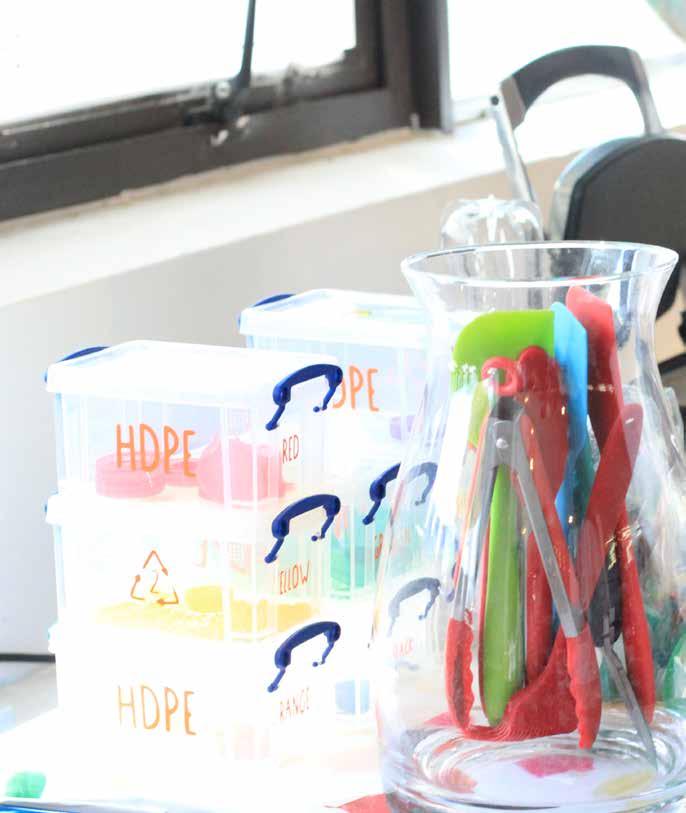
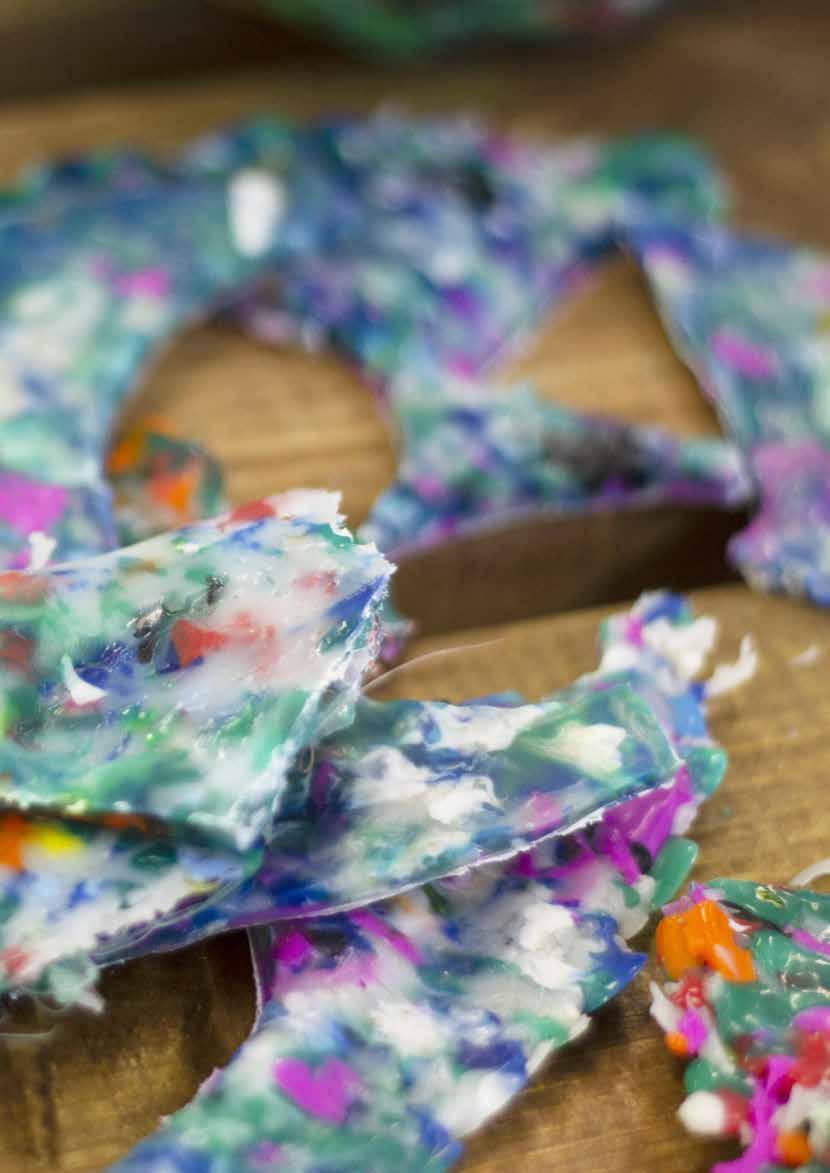

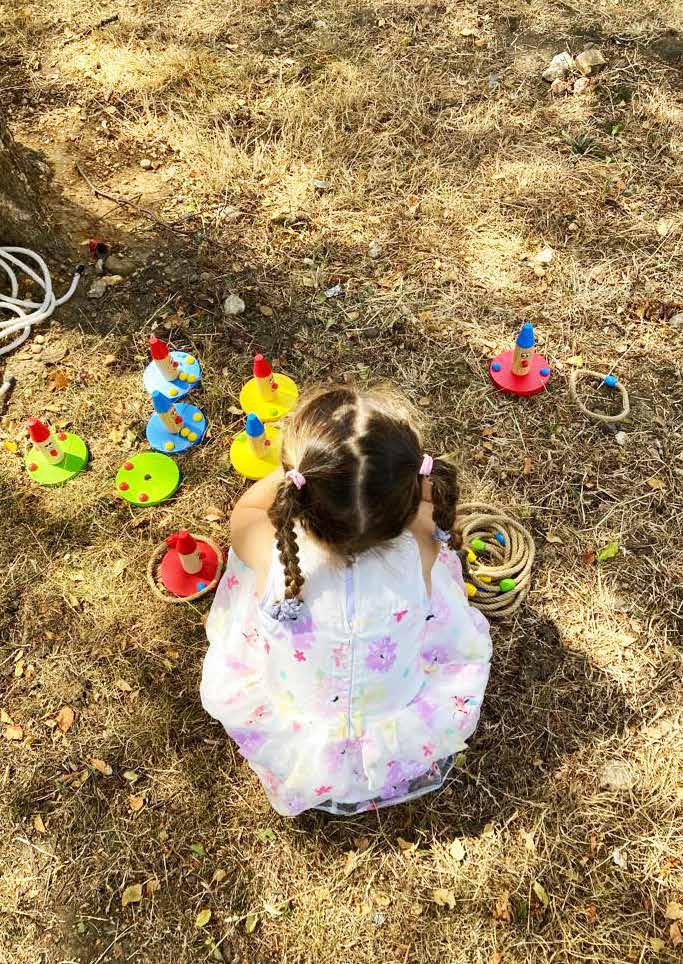

The neighbourhood participation system is community social infrastructure designed to create the conditions for participation projects to grow.
The system is made up of neighbourhood spaces in which to incubate community projects, a support team trained in project co-design, and inclusive access to the tools needed to implement them. Together, the system creates an ever-growing set of participation opportunities for local residents.
Since the last report, the system has grown to include new spaces and functionalities that have created a number of different participation possibilities for residents.

Neighbourhood spaces includes the shops, local hubs and spaces within the community through which participation activities happen.
Trained team are located in the spaces, ready to engage with participants and organisations about their ideas for the local area.
All tools and equipment for both spaces, and projects are available to help develop participant ideas into practical opportunities for all.
Project and programme designers specially trained in inclusive co-design and co-production methods.




Inclusive accessible spaces equipped with a range of tools, resources and inspiration to spark, incubate and produce neighbourhood projects and programmes.



The tools and resources needed for residents to act on the ideas they have for their neighbourhoods, made available to them in neighbourhood shops and accessible workshops.

Accessible and inclusive neighbourhood spaces are a core element of the participation system. They enable people to come together to share skills, ideas ,and plans. Spaces also act as incubators and venues for practical participation projects.
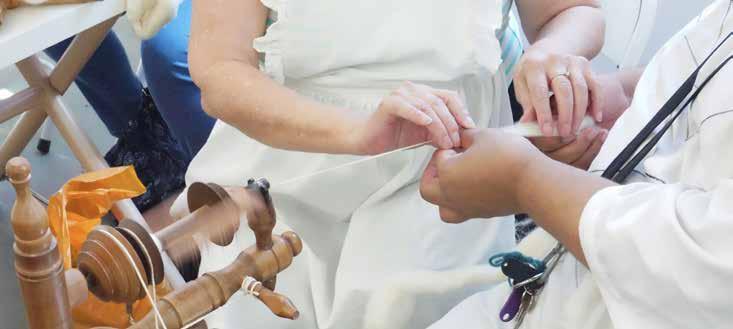
Since its launch, Every One Every Day has built a network of six neighbourhood shops across Barking and Dagenham.
Neighbourhood shops are designed to be open and attractive, welcoming as many people as possible.
The interiors use a combination of simple construction materials and bright colours. The walls and shelves are filled with materials and objects from projects, to inspire new project ideas as well as to encourage creativity.
The shops have a deliberately unfinished feel, which demonstrates in visual terms that the spaces are co-owned with residents and open for people’s ideas and contributions.
Shop name Opened Status (as of Dec 2022)

Ripple Road Aug 2017 Open
Church Elm Lane Aug 2017 Closed
Porters Avenue Nov 2018 Closed
Thames Road Mar 2019 Open
Rose Lane Feb 2020 Open
Heathway Unit 11 Aug 2021 Open

Each shop is set up with equipment to enable practical making, foster connection and enable self-directed learning. The space layout differs in each space depending on the physical size limitation and in response to the participants who use the space.
In the Ripple Road Shop, there is a community kitchen that residents use for cooking sessions. There is also a dedicated kids room, which fostered a culture of collaborative childcare and enabled many families to connect and share around food projects
The Marks Gate Shop has a well-equipped maker space, acting as a smaller-scale and more accessible version of Everyone’s Warehouse. This is important as the residents of Marks Gate are far north in the borough and can’t easily travel south where Everyone’s Warehouse is located.
Gale Street and Unit 11 at the Heathway were designed as pop-up retail shops, creating selling opportunities for local residents making essential products developed using circular economy principles. Unit 11 is located in a busy shopping mall.
Other spaces have functionality including access to gardens, photography studios, digital equipment, and more.
These spaces create a unique practical-making environment across the borough, which enables residents to create a range of different types of projects and build collaborations across neighbourhoods.
The following section describes spaces that have since been added to the platform since July 2019, (spaces developed before this time are detailed in Tools to Act).
Every One Every Day Neighbourhood Shops are stocked with a variety of resources to facilitate project design, including everyday items like stationary and specialised equipment like sewing machines and gardening supplies for making projects. Over time, the design and functionality of each Shop has evolved to provide residents with access to the making resources they desire close to their homes.
Since the opening of Everyone’s Warehouse, the Shops have also tried to replicate the specific making opportunities available there but on a smaller scale. This strategy aims to create a learning pathway from the Shops to the Warehouse, while also providing residents with the necessary equipment to explore their interests and passions.
In each of the Shops, the teams have created smaller versions of the Warehouse workshops, including textiles workshops, digital making, woodwork, and cooking. The aim is to foster an environment suitable for exploratory learning, where learners actively discover new knowledge and understanding through experimentation, trial and error, and exploration of their social and physical surroundings.
This approach promotes the learner’s engagement in problem-solving activities and encourages them to ask questions and seek answers, rather than being provided with information or instructions to follow. These behaviours align with the goals of the Every One Every Day project, which emphasizes active participation and learning through hands-on, practical experiences.
Ripple Road 55 Ripple Road, IG11 7NT Porters Avenue 5 Porters Avenue, RM10 5YS Rose Lane 111 Rose Lane, RM6 5NR Heathway Unit 11, The Mall, Heathway,






Elm Lane 116 Church Elm Lane, RM10 9RL
6 Thames 47 Thames Road, Barking, IG11 0HQ
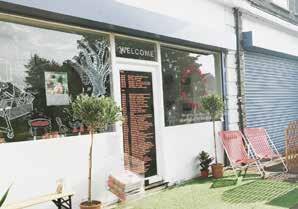
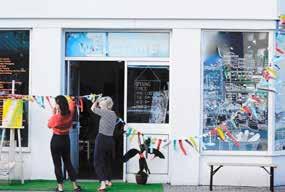
2017 - April 2022

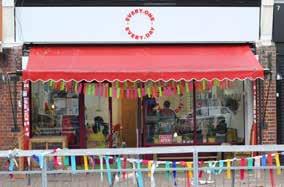
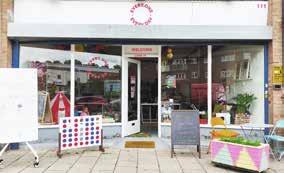
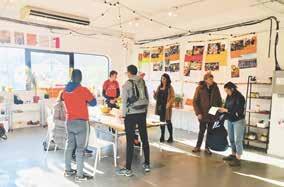

To provide a clear articulation of how participants access the platform employing terminology around ‘membership’ has been the clearest way to communicate and organise the varied and diverse ways that people use the platform.

Whilst the comprehension of a membership model evokes an economic exchange, the platform membership model is entirely free and organised around safety, training and access to opportunities.
Access to the platform requires no sign up to use or be in the space, however participants are encouraged to share their contact details to hear about future opportunities via social media.
Access to the Everyone’s Warehouse operated similarly to the shops, however completing a Warehouse Membership Induction participants begin the process of gaining access to workshops.
Access for organisation is a similar process to a participants entry into the system, however this membership allows organisations to host their events, sessions or co-working in Every One Every Day spaces.
Access to the spaces outside of staff operating hours is a key benefit of the platform. This requires understanding of responsibilities, trust and rapport and looking after spaces.
Participant
This refers to people that are coming for the first time or who haven’t signed up.
Access to all Neighbourhood Shops and Everyone’s Warehouse during opening times.
Participating and co-caring for spaces. Being friendly, open to collaborating with others
Every One Every Day member
This is when people have signed up to be a member of Every One Every Day, and receive updates via socials and newsletter emails.
Access to all Neighbourhood Shops and Everyone’s Warehouse during opening times.
Participating and co-caring for spaces. Being friendly and open to collaborating with others.
Warehouse shared spaces member

This requires a Warehouse Membership Induction, a safety introduction to the building, different spaces and processes.
Access to all Everyone’s Warehouse Shared Spaces during opening times.
Participating and co-caring for spaces. Being friendly and open to collaborating with others.
Warehouse shared workshop member
Specific inductions, training and accredited training is required for each Shared Workshopscommunicated in newspapers and online.
Online accredited training required for fire, first aid and food hygiene for independent use*.
Access to specific Everyone’s Warehouse Shared Workshops and specific tools during opening times.
Participating and co-caring for spaces. Being friendly and open to collaborating with others.
Ensuring safety and policies of spaces are being followed. Be part of care for others and knowledge of general emergency procedures.
Platform keyholder
Specific inductions, workshop training, accredited training and keyholder training is required. This depends on which space a participant wants to become a keyholder for.
A minimum of two keyholders must be present and co-operating for Everyone’s Warehouse.
Access to Neighbourhood Shops and/or Everyone’s Warehouse outside of opening hours.
Participating and co-caring for spaces. Being friendly and open to collaborating with others.
Ensuring safety and policies of spaces are followed. Ensuring the building is secure and people are operating safely under the Keyholders’ care.
* ‘Independent use’ refers to a minimum of 2 people in one Shared Workshop for health and safety purposes.


Organisational Membership was introduced to enable local organisations to have a greater impact in the borough by using the Every One Every Day platform. The membership was designed to provide a simple way for organisations to access the platform's benefits and resources and to create a visible network across the borough.
Whilst the primary function of the participation system is to enable peer-to-peer collaborations between residents, there is spare capacity in the platform created when the team is not working directly in neighbourhoods, but is instead engaged on research and other development activities.
This created an opportunity for local organisations to access spaces, learning opportunities, and project resources to deliver their activities. Organisational Membership allowed the platform to differentiate between its main role of developing inclusive, peer to peer activities while responding to the emerging needs of other social sector organisations, which typically have targeted approaches which are incompatible with inclusive participation.
The Organisational Membership structure allows organisations to sign up for membership and thereby become inducted into neighbourhood spaces and workshops which they access via a booking app and from which they can deliver their own sessions.
To access membership, organisations have to demonstrate that they provide a benefit to local people in the borough. An organisation is defined broadly and includes projects, informal groups, charities and businesses. To remain compliant with the project aims and the funding mechanism, Organisational Members were required to adhere to the use of the platform in a non-commercial capacity only.
As set out in the report published in November 2021, organisational members were diverse in the nature of their outcomes, practice, structure, scale, and location, with an overwhelming majority of sign-ups coming from community-based projects.
Organisational Membership supported other areas of the platform by allowing residents who had learned a new skill to join and develop their ideas or products in a free space with health and safety training.
Disabilities (2.6%)
Creative community
Organisations working with
202
Number of organisations who have signed up as Organisational Members
11
Everyone (44.7%)
Faith based (2.6%)
(6.6%)
Local organisations
Older people (3.9%)
Vulnerable Adults (10.5%)
Women & Girls (7.9%)
Children and young people (17.1%) (0.06%)
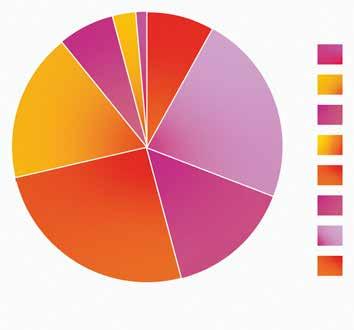
Events (0%)


















Sport (1.2%)

Greening and environment (2.7%)
Arts and media (14.9%)
Community (23%) (8.1%)

Faith-based (6.8%)
Education, Teaching and Mentoring (17.6%)
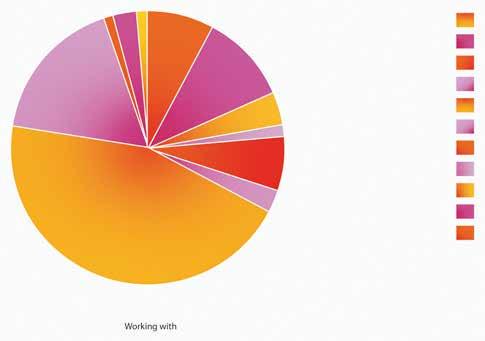
Healthcare and Mental Heath (25.7%)
Area of work
Organisations have participated in one or more Collaborative Business Programmes
Organisations have used Every One Every One Day spaces
34
Organisations are keyholders to at least one space
6
Are keyholders to two or more spaces
29 Accredited training completed by Organisational Members

The Heathway Shop is a large unit inside the Heathway Shopping Centre in Dagenham. The shopping centre sits on the high street and has good transport connections. As a consequence, the space is the busiest of the neighbourhood shops with large numbers of new visitors on a daily basis in addition to a growing network of regular participants.
The shop comprises the main space at shopping level. Below ground, the team has access to a small office, bathroom and a storage space which backs out onto the car park for deliveries.
The shop has a kitchenette at the back of the space with small appliances such as a pressure cooker, toaster and air fryer. Many of the cooking sessions inspired from the Heathway were developed with residents to form the project ‘Plug in Kitchen’, and featured sessions ‘Just Air Fry It’ and ‘Soup Saturdays’ enabling residents to recipe share and learn new and cost effective cooking processes.
Sewing is also a hugely popular activity at Heathway. The space has a dedicated sewing area situated at the front of the shop through which residents can sign up for regular sewing inductions, learning the basics and how to use domestic machines safely. With the vast interest in sewing, making, and repairing, residents in the shop often attended to meet socially and share ideas and sewing skills together, as well as hosting and attending sessions in and outside of programme cycles.
The shop also includes other making equipment for activities such as painting right through to DIY, Precious Plastics and woodwork.
The shop also features an aeroponics unit for indoor growing of herbs, salads and small vegetables. The team has built connections with a local community space across the road from where they have codesigned cooking sessions and worked on an allotment for community gardening.

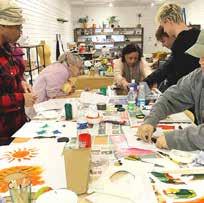
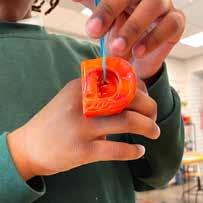

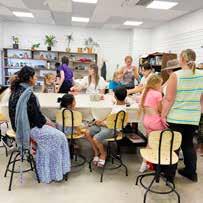

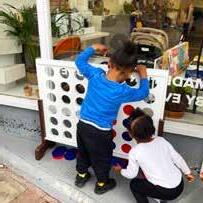

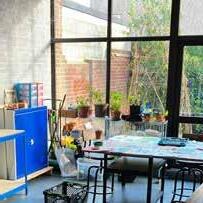


The Marks Gate shop is located at the very north of the borough in a large residential area. It is more isolated than other neighbourhoods in the borough with just a few public transportation links. As an example, journeys to the main high streets of Barking or Dagenham can take up to an hour.
The shop is located in a row of convenience stores and is across from the Marks Gate Community Hub, which is a community space run by the council. The shop is walking distance from both Tantony Park and an allotment just off Thatches Grove.
The shop has a small front entrance flanked by large glass windows. The main space is designed around a central sitting and making area, with soft seating and smaller chairs for children at the periphery.
Within the main space, residents can access project materials and make use of sewing machines, a Precious Plastics station, a “Mini-Maker” space for children, a computer, and plenty of space for codesign meetings.
At the back of the shop is a small kitchen containing a sink, a microwave, and some storage. The limited functionality of the kitchen has minimised cooking projects in the space, although some sessions have taken place using air fryers. For this reason, most cooking sessions were programmed across the road at the Marks Gate Community Hub.
Behind the main shop is a large space that has been converted from a large concreted garage area into a Garden and a small-scale makerspace, complete with tools for woodwork, gardening, sewing, and other making activities.
The garden is enclosed and contains a willow dome, a rockery, and a living wall, which was cultivated over a few months with residents. Residents often visit the shop to help themselves to fresh mint and thyme growing on the wall. The garden is a relaxed space where residents can take part in garden activities or just chat and meet in the fresh air.
Outside of the shop, some gardening activities took place in the Summer and Autumn 2022 programmes at the local allotment. These sessions involved preparing the ground for planting and building large composters from pallets.

The platform is an asset to the borough, and similarly the borough is an asset to the platform.
Fostering deep understanding of local organisations, their functions and aims is key to both spreading knowledge and information about the platform and being able to curate cross-organisation opportunities and sharing access to tools and resources.
Referred to as Local Hubs, these relationships have been key in understanding the civic engagement in local areas and have played a fundamental role to encourage participation integration.
The neighbourhood spaces maintain a network of community hubs that serve as additional locations for participation projects across the borough. These enable the team to bring participation opportunities closer to people’s homes and their current patterns of life.
Since the publication of the last report, hubs have been developed at seven new locations, detailed in the diagram on the right.
The Wilds is an ecology, community, and multi-use accessible space located in the new Barking Riverside development on Northgate Road. It is publicly accessible and open daily for co-working and private hire, with preferential rates for local people. Participatory City Foundation and Barking Riverside London formed a partnership to allow Every One Every Day to use The Wilds as the test trading space for a resident-led cafe called Grounded, as well as a participation hub where the team has programmed the space with co-designed activities. More detail about Grounded can be found in the Collaborative Business section on page 198.
Every One Every Day hosted an opening event at The Wilds in 2021. Since then, the team has collaborated with local organisations and residents to host a wide range of sessions, including those focused on graffiti, gardening, bird-box making, painting, sensory play dough, and soldering solar panels.
Thames Community Hub is located on Bastable Avenue in Barking. Bastable Avenue runs parallel to Thames Road and is accessible from Everyone’s Warehouse via a 15-minute walk on Renwick Road or cutting through Thames View Playing Field and over the Ripple Greenway footbridge.
Thames Community Hub was previously known as the Sue Bramley Children’s Centre and the Thames View Library. It is open Mondays, Tuesdays, Wednesdays, and Fridays 9.00am – 5.00pm. The hub is within the Thames View estate, next to the Thames View Infant School and a medical centre and across from a small precinct of convenience shops.
The hub is a multi-purpose space for learning and library resources for all ages, and includes largeprint books. The building houses a kitchen, sensory room, garden, and a creche area that is bookable by community groups.
At Thames Community Hub, the Thames Team activated the library, hosting a weekly Tea and Toast session that grew to involve resident-led craft activities. Whilst this hub differs from shop spaces by the absence of a visible window, the heavier footfall and use of the space by residents and other local organisations (such as Make Your Mark, Mind and Shed Life) drew people into the space. The Thames Team also facilitated a ‘Walking Bus’ from the hub over to Everyone’s Warehouse to introduce more Thames View residents to the makerspace.
Residents also participated in vegetable growing in the aeroponics unit in the library. As participation in this project grew, a community food group passed on leftover vegetables for cooking sessions in the Farm 2 Fork project, where residents batch cooked recipes in the kitchen.
Dagenham Library June 2018
Ongoing collaboration opportunities and plans to work together in 2023 to develop it as a mini participatory hub. An aeroponic unit is still in the building and the team regularly using the library as a meeting location.
Barking Learning Centre June 2018
Collaboration with Library of Things- to introduce residents to the new project in Barking and Dagenham, through use of their equipment for various resident led sessions.
Harts Lane Estate July 2018
Ongoing greening projects that led to the Tomorrow Today Streets project during Covid. Mostly linked with planting of trees, developing an orchard and orchard education and skill sharing with The Open Orchard Project.
Barking Adult College
April 2019
Collaboration to find opportunities for their students through the Every One Every Day collaborative business programmes as well as use of spaces.
Barking Adult College
Kingsley Hall
June 2019
The Wilds August 2020
Phoenix Park
July 2021
Collaborations regarding activating Martin’s Corner with a neighbourhood supermarket, Open Orchards and ongoing programming.
Ongoing collaboration as a host for participation projects and activities, and the home of Grounded.
One of the ongoing Open Corners.
Marks Gate Community centre
Thames Community Hub
October 2021

Ongoing collaboration with co-design sessions being held there as well as working with the centre to introduce participatory ways of working and potentially becoming a mini participatory hub.
March 2022
Co-design, project workshops and discussion to encourage project pollination.
This inclusive design approach emerged from years of studying participatory culture projects developed by local people in communities around the world.
The Every One Every Day project employs fifteen design principles that project designers apply to project ideas co-developed with residents.
Through the application of these principles, project designers create a diverse set of projects and resident collaborations that form the foundation of the participation ecosystem.


Many opportunities of wide variety


Introduce or accompany
100% open - no stigma













To develop the participation ecosystem, specially trained project designers and programme designers host neighbourhood spaces. They apply an inclusive design methodology to stimulate, encourage, and strengthen resident-led project ideas.
At any given time project and programme designers are holding multiple roles simultaneously. They must be adept at shifting mode flexibly to ensure that new visitors to shop spaces are welcomed, that participation opportunities are explained, that project ideas are being developed and implemented, that connections are being made, and that data is being gathered.
In addition to this project designers act as curators of neighbourhood shops and other spaces within the platform, ensuring that these are attractive, intriguing, practical, safe and welcoming.
This broad role centres around engaging with residents from the point they arrive, and developing ideas from their starting point. This means that in addition to feeling welcomed, residents visiting the shop for the first time should be quickly engaged in a purposeful conversation about what they enjoy and want to see in their neighbourhood, and what skills and ideas they have to make things happen.
Surrounding this, project and programme designers must be experts in the neighbourhood, with comprehensive knowledge and connections with other organisations, spaces, hubs and opportunities which can be developed for the benefit of residents.
Neighbourhood spaces are designed to be open and welcoming, meaning anyone should be able to walk in from the street without the need for an appointment, or to sign up for membership, and feel immediately welcomed.
When a resident enters a shop, project designers engage them in purposeful conversations, sharing the opportunities and vision created by local participation and inviting them to share their interests, ideas, and potential contributions.
Project designers need to be experts in the neighbourhoods surrounding shops since these are vital sources of participation opportunities. In practice this involves engaging widely with local organisations, projects, Councillors and businesses to surface opportunities to use space, connect
Inclusive co-design is based on the idea of an equal relationship between residents and project designers. The aim is not to draw out ideas from communities which are then turned into projects by experts working on behalf of residents but instead for a basis to be built for mutual contributions.

After each inclusive co-design cycle, all surfaced opportunities are scheduled into the Neighbourhood Spaces, allowing both team and residents to organise around their delivery.
This involves working with residents to prepare them for the project sessions they are hosting, curating project materials and ensuring risk assessments are complete. Co-production also includes a shared effort to communicate the opportunities to participate via the residents’ own networks, taking ownership should they want to of their projects and social circulation.
These initial conversations help project designers identify opportunities to connect residents to other members, projects, or programmes being developed within the ecosystem. Residents are also invited and encouraged to become members of Every One Every Day, enabling the team to gather their contact details and include them in neighbourhood project communications and research.
ideas and build collaborative networks that are key components of an opportunity-based design process. The team built connections by going on site visits, attending meetings, speaking to local business owners, and asking for introductions.
This involves bringing individuals and groups together to design projects or test collaboration ideas, blending them, developing common-denominator and innovative models, and identifying spaces and other opportunities.
As project sessions and activities take place, the role of the team is to ensure that roles, responsibilities and risks (for example of low attendance) are shared with residents. In practice this means creating space for resident contributions, whilst being able to step into gaps left when residents are unable to attend at the last minute, or lack the confidence to organise or host sessions. Over time, residents gain confidence to take on more and more responsibilities.
Co-design and co-production are essential tools in inclusive project design and platform development. As practices, they entail holding space and creating the opportunity to take ideas forward, space for shared responsibilities which match a participant's commitment and available time, and allows for test approaches for developing skills and confidence.
They also mean sharing the risks and rewards of things not going to plan or succeeding beyond all expectations. In practice this means that the team endeavour at all times to avoid becoming ‘the expert in the room’ to whom others defer, deploying tools such as collaborative agenda-setting and consensusbased decision-making to create environments in which participants enter as equals.
Whole team insight development is central to how the Every One Every Day initiative. Unlike other evaluation processes that involve external experts to make interpretations, it is vital that the emerging projects and opportunities are evaluated by team members who are immersed in the project.

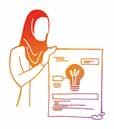
In the case of Every One Every Day this has been extended to the whole team who are analysing and drawing conclusions together in order to develop the next steps of the programme coproduction strategy. Whilst the process is depicted in a linear diagram, the cycle of co-design and surfacing ideas within the borough occurs as a constant state which matches the nature of participants and organisations entering the ecosystem.
Plan Plan of action for Every One Every Day as formulated from foundational research.
Intended strategy
Best plan of what will work based on what is currently known.
Deliberate strategy
Parts of the plan that work as intended and so are continued and developed.
Minus unrealised strategy
Parts of the plan that don’t work as you had assumed or intended and are therefore stopped or altered.
New parts of the plan that are developed and incorporated as new knowledge is gained and new opportunities emerge during implementation.
Realised strategy
A combination of initial plan and intended strategy plus emergent opportunities and insights that could only be learned during implementation.
Project Designers are based in Neighbourhood Shops that are located across the borough

Ripple Road
Surfacing ideas via conversations in Neighbourhood Shops

Surfacing relationships and connecting with local hubs and organisations

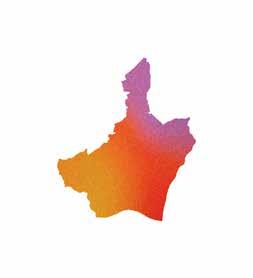
Participant ideas
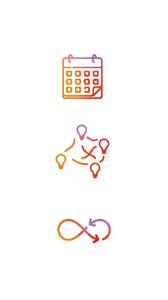
Organisation ideas and opportunities




Whole team comes together to share conversations, emerging projects and collaborations with local organisations
Cross-Shop dates are scheduled to build skeleton programme
Cross-Shop projects are developed
Projects are iterated toward inclusion

begins and copy co-prodcued developement

This timeline describes the roles and responsibilities of a Project Designer when opening and hosting a shop space throughout the day.
No two days as a Project Designer are the same. On shop open days, the team meets about a couple of hours before a shop is due to open to set up the space for participants. This involves everything from bringing in the bins and stocking up on bread and milk, to gathering equipment and materials for a session.
Introducing the project
Project Designers use a variety of tools and resources to help introduce people to the project, including visual aids like posters and design materials, tours of the shop to demonstrate how it operates, and inviting residents to get involved in activities and conversations.
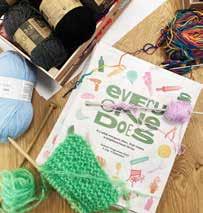
Shop teams meetings

Before opening the shop, the team reviews preplanned sessions taking place, such as co-design meetings, visits from local groups, and project sessions.
Welcoming and introductions
As residents enter an open shop, the team explains the Every One Every Day project and how the space works, as well as sharing what is happening and showing people the different areas in the shop. It's key to communicate the participatory nature of the space, such as helping themselves to hot drinks and looking after the spaces together.
Surfacing projects


Project designers use co-design and co-production methods to surface the interests and appetite of local people to design and create projects for the local neighbourhood.

Often there are published materials such as newspapers and flyers that residents can take away with them.
Part of the project designer role is to maintain inclusivity, ensuring spaces and project development are kept an equal footing.


When scheduled project session’s are taking place, Project Designers work as a team, wearing whichever hats are necessary to make sure that sessions are given the best possible chance of success. This ranges from hosting, researching, documenting, being the designated first aider, being the responsible health and safety and safeguarding person, as well as providing any physical support to set up the session.
Project designers often leave the shop in order to build networks and relationships with other organisations in the neighbourhood. This might be a simple introduction, or it could be a co-design bringing new contributions to ideas in development, or planning for a session taking place in a new location.
From outside the shop, residents looking in would most likely see a team of three or four Project Designers engaging different groups of people chatting, making, or co-producing together.
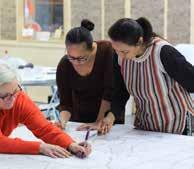
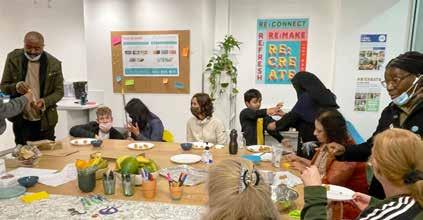

Project designers also work in cross-platform teams and set aside space in the week to develop these, as well as to analyse research findings. With so much to cover, adoption of tools such as collaborative agenda setting and consentbased decision making are vital.

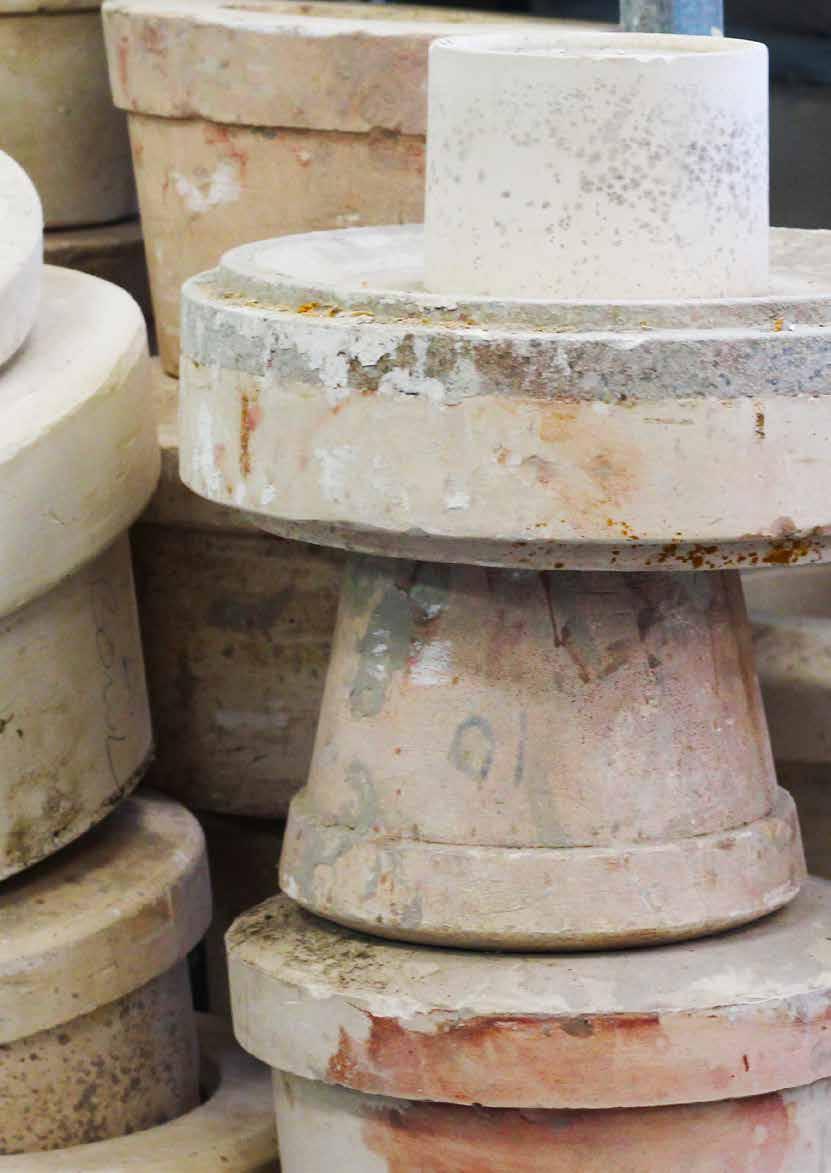


Everyone’s Warehouse opened to the public in March 2019. The makerspace is in Thames ward and includes 3,300 square meters of workshops and coworking spaces. It is equipped with tools, machinery, and consumables to facilitate large-scale making projects and more in-depth skill-building opportunities.
Everyone’s Warehouse is open to all residents of the borough, regardless of prior knowledge or making skills. This is an access model more akin to public amenities such as libraries and parks than makerspaces.
For residents, the Warehouse provides a flexible learning and development pathway that often starts with participation in programmes or neighbourhood projects, and progresses to opportunities for larger scale making and testtrading opportunities. By offering various starting points for skill-building, residents are able to be flexible and self-directed in their learning and development.
Additionally, by focusing on sustainable materials and products, the Warehouse creates further opportunities to prototype planet-positive ideas and circular products that have the potential to become the basis of new collaborative businesses in Barking and Dagenham. What is a makerspace?
A makerspace is a building containing workshops to enable different types of making, such as growing, cooking, woodwork and fabrics. Whilst most makerspaces apply a paid membership model of access, Everyone’s Warehouse is free-to-access for residents of Barking and Dagenham.
The Warehouse includes shared spaces and shared workshops, which contain equipment for projects and learning programmes. All visitors to Everyone’s Warehouse are invited to share the running of the space including the design and layout of workshops to cleaning and organising spaces.
Everyone’s Warehouse is a learning and sharing space, which aims to encourage self-directed and exploratory learning, designed to be adaptable for the different ways that residents want to use the space. The space is highly adaptable for all sorts of projects, events and uses, be it cooking for a shared community meal, hosting an event as an organisation, or using the woodwork space to make a planter.

















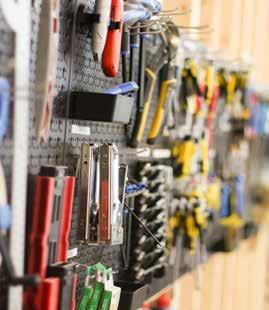

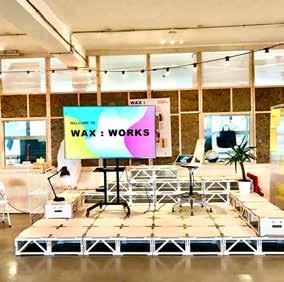










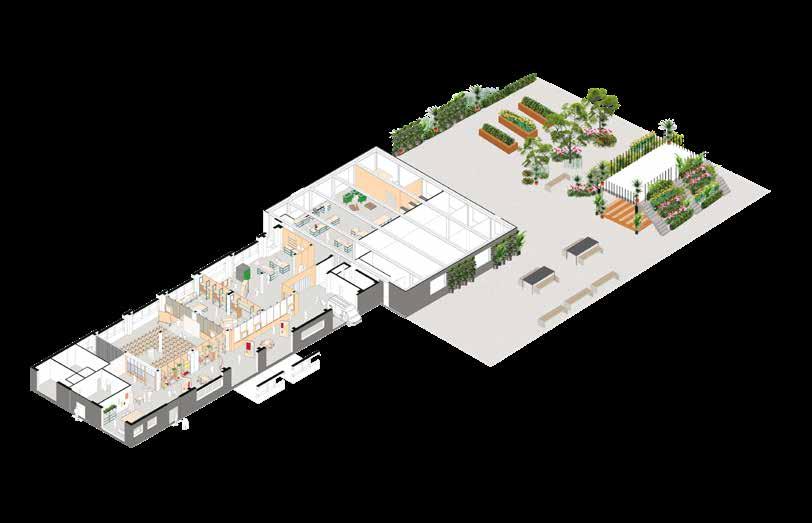

























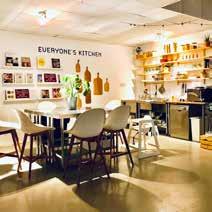
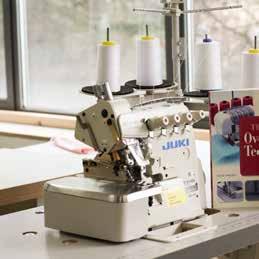

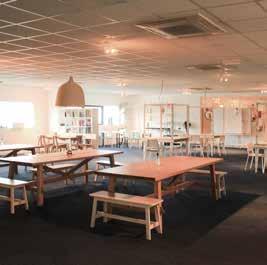

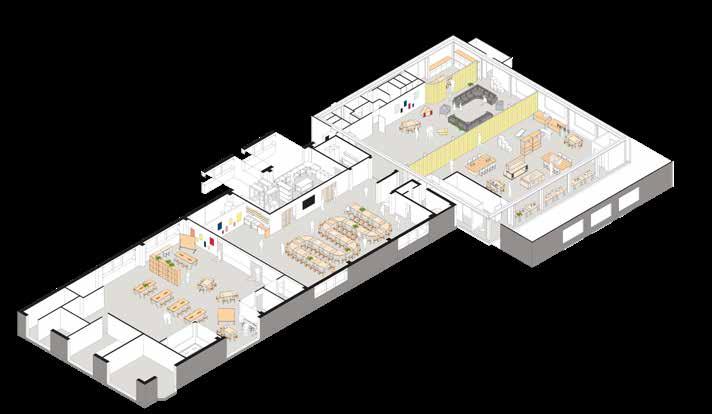

Any resident or organisation of the borough is free to become a member of Everyone’s Warehouse, which allows various levels of access and use of the space, including access for organisations to run their own events and meetings from the Warehouse for free.

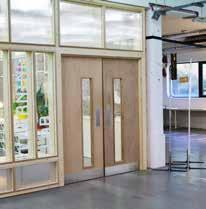
Access and membership processes differ depending on the desired use and managed risks attached to the Shared Space or Shared Workshop. All access begins with a Warehouse Induction which provides an introduction to the space, the culture of the space, how to access different workshops and programmes, key safety, risk considerations, and more. Inductions are offered regularly, and a different times to cater to different routines and to maximise accessibility.
The Shared Spaces and Workshops have ample scope for many different uses and skills, such as meeting spaces and co-working desks, through to more practical skills areas such as woodwork, ceramics, fabrics, digital making, and cooking, among others. All workshops are equipped with tools, equipment and machines that support all members to gain confidence and skills where they desire. Members are then eligible to access specific workshops by completing additional inductions and learning programmes relevant to the workshop area. This is so that access to dangerous equipment is carefully controlled and safe use is promoted throughout all space access.
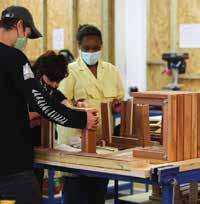
The Warehouse creates a space that caters to many different interests and talents, however, this extensive range brings a complex set of access protocols.
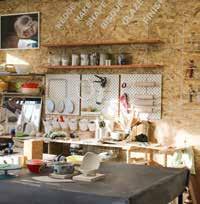


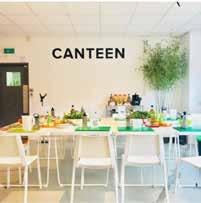

Warehouse Members gain access to the shared spaces during public opening hours.
Thames shop
Gallery
Learning lab
Where the Thames Neighbourhood team is based. Acts as a smaller Every One Every Day shop where residents can talk to the team about any projects they may have
For exhibitions and information sharing






















For larger events, workshops, presentations, performances
Materials library An exhibition to learn about different materials
Maker lab
Plastics sorting
A space to learn from a guest maker about a specific material or process
For washing, sorting and storing waste plastic to be used for projects
Urban garden Large space for growing, planting, outdoor meals and festivities
Co-Working
Media lab
For working, including using meeting rooms, laptops, wifi, and accessing tea and coffee
DSLR Camera, tripods, photography lights, backdrop, music/ podcast equipment
Everyone’s kitchen For cooking, sharing community meals
The canteen A large space for eating and chatting
Mini makers A space for children to be cared for collaboratively

Warehouse members who attend workshop inductions and, (in some cases) machine training, to gain access to shared workshops during public opening hours.
Ceramics studio
Woodwork
Plastics workshop
Pottery wheels, kiln, hand tools, jolly jigger, pugmill
Table saw, mitre saw, pillar drill, belt sander, jig saw, grinder, drills, domino, rail saw, hand tools
Plastic shredder, sheet-heat press
Digital fabrication CNC mill
Podcast studio Recording and editing software, mics, headphones
Industrial kitchen
Fabric workshop
Maker’s in Residence lab
Digital lab
Ovens, Dehydrator, kitchen equipment, cooker, prep tables, 1600ltr freezer, 600ltr fridges and storage room
Industrial and domestic sewing machines, vinyl cutter, overlocker, Coverstitch, automatic embroidery machine, heat press
Workshop space with Makers in Residence and overflow space for diverse working
Laser cutter, 3D printers, physical computing and robotics
Screenprinting Exposure unit, screens, vacuum bed, squeegee
The Warehouse aims to create many different forms of participation and a broad range of opportunities for residents. Membership is structured to be flexible, allowing each person to shape their membership around their own lives, interests, and skills. To reflect this, membership has be structured into different levels which enable different levels of access to use the building and resources safely.
The different levels of membership also reflect the need for safe use of machines and equipment. Each workshop requires additional induction and training, as well as review by a trained member to ensure that residents are able to use machinery safely.
"I would like to become a member of the Warehouse and access the Shared Spaces during opening hours."
"I want to be the first to know about Every One Every Day events, projects and festivals."
Sign up
Sign up to hear more about the project.
Weekly emails
Receive weekly updates about the project, emerging opportunities, and detailed invites specific to the closest shop.
Inductions
Attend a Warehouse Member Induction into the building including Shared Spaces.
Find out what is happening Become a part of the Membership WhatsApp and social media contact list.
Access fob
A fob will be issued to access the building and will reflect your access level.
Meet the team Meet the Thames Shop team to find out about the Warehouse Programmes.
Warehouse level 4
"I would like to be a member of the warehouse and access the Shared Spaces and Shared Workshops."
Warehouse level 5
"I would like to become a member of the warehouse and access the Shared Spaces and Shared Workshops out of hours."
Inductions
Attend a Warehouse Member Induction into the building including Shared Spaces.
Find out what is happening
Become a part of the Membership WhatsApp and social media contact list.
Inductions
Attend a Warehouse Member Induction into the building including Shared Spaces.
Access Fob
A fob will be issued to access the building and will reflect your access level.
Find out what is happening
Become a part of the Membership WhatsApp and social media contact list.
Access fob
A fob will be issued to access the building and will reflect your access level.
Meet the team Meet the Thames Shop team to find out about the Warehouse Programmes.
Attending workshops
Attend a Shared Workshop Induction.
Meet the team Meet the Thames Shop team to find out about the Warehouse Programmes.
Accredited training
Certain accredited training that is required to use certain workshops.
Attending workshops
Attend a Workshop Induction for the workshop you would like to use.
Accredited training
Certain accredited training that is required to use certain workshops.
Machine inductions
Attend a Machine Induction
Skills assessment
The assessment process for unprogrammed access to workshops or for those with prior skills

The Warehouse operates on the assumption that all members and visitors look after the space together.
Residents participate in the day-to-day maintenance of the space through processes such as “Daily Checks,” which outline the tasks that need to be done on a daily, weekly, and monthly basis to keep the workshops clean, safe, and well-maintained. These checks are visible in the space and meant to be completed by everyone together. Strategically placed behavioural signage also helps prompt residents to contribute, for example, by doing some washing up or taking the rubbish out.
Expectations about contributions are not limited to helping with space operations. Collaborative behaviour is also encourage throughout all the spaces and workshops, such as:
• Teach someone a skill
• Make a round of teas and coffees
• Fix or report something that’s broken
• Help someone with childcare while they use the workshops
• Support another person with their task
Warehouse tasks are divided into core and shared operations. Core operating tasks are what the Every One Every Day team looks after; Shared space operations are what everyone at The Warehouse can contribute to the maintenance of the space.
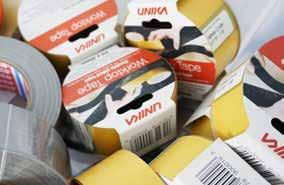
Core operations include legal responsibilities, such as compliance with fire safety regulations; in-depth maintenance of machines (particularly where outside contractors are required); restocking of machine consumables; deep cleaning; and inductions and training to ensure safe use of equipment.

Shared operations are tasks that everyone does together, such as tidying the space; opening and closing the spaces safely; contributing their skills and time to making this a great place to learn; and helping new members learn the culture and behaviours that make the spaces enjoyable places to work and play in.
Staying on top of waste is a huge part of keeping the Warehouse clean and tidy for use. In the different shared spaces and workshops are various “Save-itStations”. These collection spaces are designed to minimize waste created by the Everyone’s Warehouse, and to flow resources through the Warehouse so they can be found easily when needed.
Daily checks are sheets in each area that explain all of the tasks that need to be done to look after the space on a daily basis. These are everyone’s responsibility and it’s important that residents leave time to complete at least some on the list.
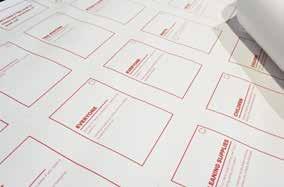


Operation signage is installed across all the spaces. This signage encourages participants to engage with the space in a participatory,co-ownership mindset

Fire Maintaining an up to date fire risk assessment, functioning alarm system and evacuation plan.
Health and safety Creating risk assessments and maintenance schedules for all spaces, machines and activities.
Security Maintaining locks, key fobs and CCTV.
Waste
Organising regular collections of waste and recycling and making sure that bins and bin bags are available.
Person responsible
Senior Operations Manager
Warehouse Manager
Senior Operations Manager
Cleanliness
Training and inductions
Organising regular deep cleans and making sure that cleaning materials are available where needed.
To run and manage regular training and induction events to make sure that everyone is skilled and knowledgeable in safe use of the space and machines.
Senior Operations Manager
Senior Operations Manager
Senior Operations Manager
Daily checks
Completing and managing daily checks sheets and responding to the reporting from participants.
Materials Ordering and restocking spaces with necessary stock, consumables and shared stuff.
Senior Operations Manager
Warehouse Manager

Fire
Making sure that all fire exits are not blocked, and that fire doors are closed. Using the sign-in book and evacuating on hearing the alarm.
Person responsible
Health and safety
Following advice and guidance on operating safely in the space and keeping an eye out for anything hazardous. Attending to tasks within your capabilities and avoiding risks of getting hurt.
Security
Making sure that no locked or key fob controlled door is propped open. Report anything suspicious.
Waste
Taking out bins, recycling and managing the Save It Stations daily.
Cleanliness
Training and inductions
General tidying and cleaning throughout the day, completion of daily checks after an activity finishes.
Attending relevant training and inductions sessions and following guidance given
Daily checks
Completing daily checks sheets and reporting anything you notice on the sheet.
Materials
Noticing when consumables and stocks are running low and writing them on the daily checks sheet

To embed participation in neighbourhoods, the Every One Every Day project needed to excel at inviting and attracting resident contributions and talent. This differs from traditional ways of working, which often target residents based on needs and vulnerabilities.
Resident communications were designed to be accessible and very visually engaging. Written communications were invitational and full of inspiration and ideas.
The Every One Every Day team employed a range of communications methods, from printed newspapers, flyers, and posters, to expansive window vinyls, to digital posts. The aim was to reach as many different residents across public and private spaces as possible.
To keep communications consistent, six principles were developed and are applied to all types of communications formats.


Invitations to projects are communicated in a range of formats, such as print or digital, and graphic or written.

Graphic illustrations and imagery always represent the diversity of the community.
Communications use simple language to be inclusive to those with language barriers.
Information is easy to navigate and helps residents understand the concept, processes, and how to get involved.

All Communications are produced to be beautiful, crisp and timeless.
Images are often zoomed into hands and actions so participants can easily imagine themselves doing the activity or project.
Layouts are designed to project the story of the ecosystem; to show a thriving, vibrant place to live.





Dates, times and invitations are separated from body text.
Communications throughout gently depict more abundant futures.
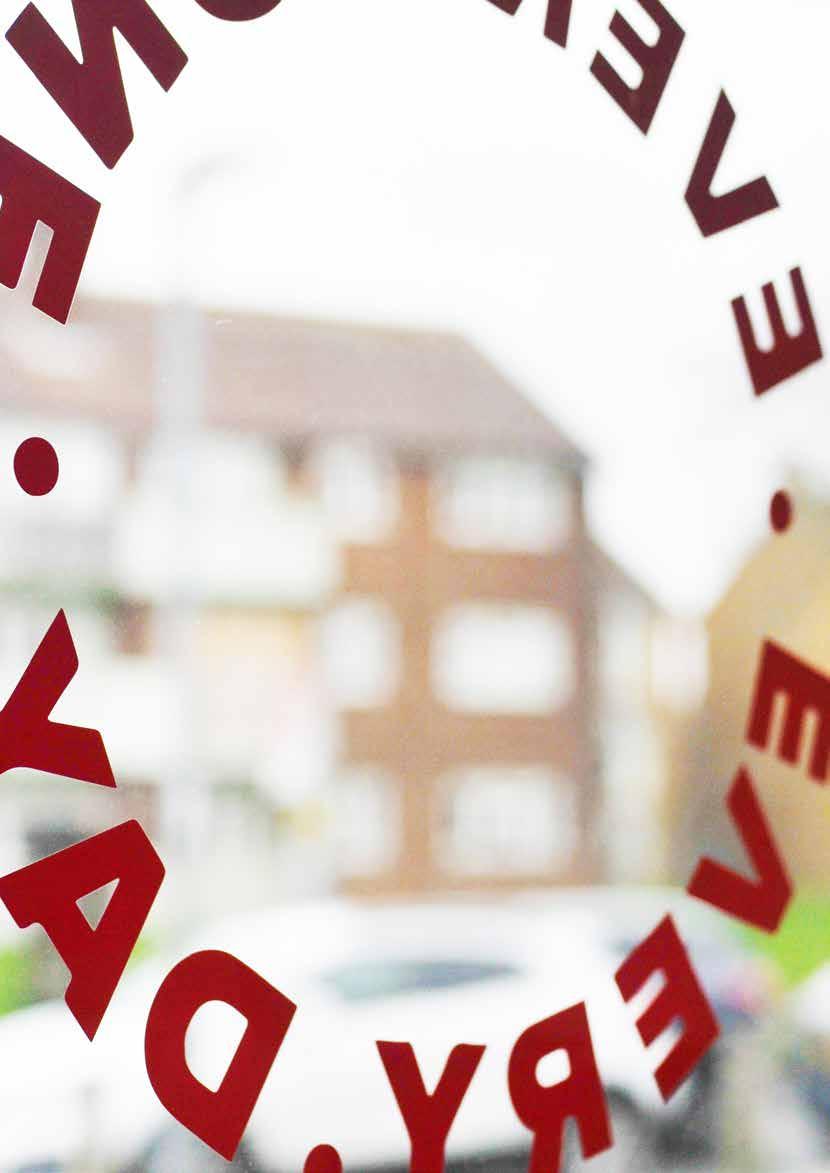
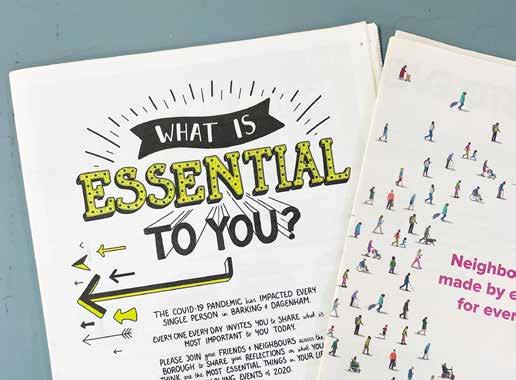
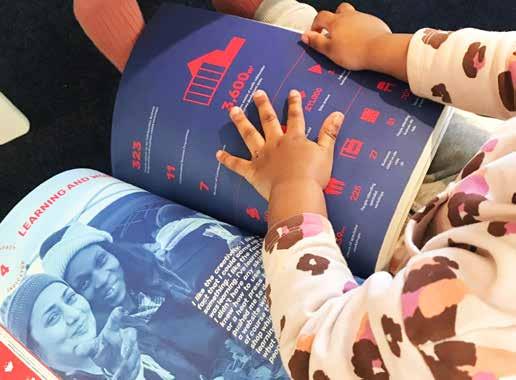
Every One Every Day is the primary, resident focused identity through which all project communications are promoted. The brand is applied through all codesign practices and content production with the overarching aim of producing inclusive and relevant designed outputs which promote participation.
The associated strapline ‘Neighbourhoods made by everyone, for everyone” is the primary messaging. The idea of collaborative branding is curated to ensure that all efforts are co-owned, co-produced and produced to be accessible, friendly, and easily adapted for different projects.
The newspapers
The newspapers contain all the information about Every One Every Day’s programmes, which are tailored to highly localised geographical areas centred around each shop.
Shop fronts
Shop fronts are the physical Every One Every Day brand presence in the borough. They are bright, clean spaces with large welcoming windows adorned with the strap line 'Neighbourhoods made by everyone, for everyone".
Any physical communications to engage residents and wider audiences in the form of posters, window vinyl, leaflets, information packs and reports to describe and depict in detail how and when residents can participate.
Any online communications to engage residents and wider audiences in the form of social media posts, GIF’s, Instagram stories and reels, blog posts and films.
Reports
A yearly report to communicate findings and developments in the participatory methodology. These are both printed and made available online.
Films
Several films have been produced to communicate with various audiences. Resident-facing videos simplify the message and invitation to engage with Every One Every Day spaces and have been used to promote specific events.
Newspapers and other printed outputs are an indispensable part of the communications strategy. The newspapers contain all the information about Every One Every Day’s programmes, which are tailored to highly localised geographical areas centred around each shop.
Newspapers are typically printed in batches of 45,000-60,000 copies and delivered to all households within a 20-minute walk of the location of each neighbourhood shop. Additionally, copies are delivered to local partner organisations.
In the last six years, more than 400,000 newspapers have been distributed to residents, local businesses, organisations, and other partners.
In addition to explaining what activities are coming up, the newspapers are a vital tool in communicating how the project has developed, sharing some of the key stories and aims emerging from Every One Every Day work in neighbourhoods.
Newspapers help to create a positive and optimistic narrative about neighbourhoods and the residents who are active within them, working together and shaping the everyday experience of their community.
Distribution
Newspapers are distributed straight to resident’s front doors, as well as to local organisations, services, and the neighbourhood shops via a distribution company.
Newspaper distribution is a key part of Every One Every Day’s inclusive communications strategy, as physical communications may reach people who have less opportunity, access, or education in digital and social media spaces.

The newspaper is a celebration of resident ideas, collated into a borough-wide programme of activities. It is co-produced by the Every One Every Day team and residents, usually in programme cycles that occur thrice annually.
Programme cycles include a development and production phase that is usually 4-6 weeks, followed by the programme, which ranges from 5 to 10 weeks long. They end with 1-2 weeks of developmental evaluation by the team. In summer 2022, the team experimented with a longer programme to respond to and encourage greater participation. Each newspaper contains ideas for projects and sessions generated by residents, showcasing their creativity and aspirations for their neighbourhoods.
What Every One Every Day staff nurture and co-develop ideas with residents to create projects that are rooted in what residents want to do, enjoy and connect with in their local area.
How Conversations and rapport.
The newspaper co-production process brings together all parts of the organisation, where participant ideas and the support of the platform co-produce the participatory vision.
To knit this into a digestible format, all projects and events are curated into a neighbourhood newspaper with clear information, invitations and participants’ ideas at the heart of it.
For the full co-production process please see page 98, this diagram depicts the whole-team approach to producing a physical newspaper that encompasses hundreds of people's ideas.
What Project Designers co-create with residents and connect their ideas and project plans up with wider opportunities.
How Co-design, project workshops and discussion to encourage project pollination.

What Designers work with teams and residents to produce high-quality design work for projects and sessions.
What Team co-designs order of pages in the paper, usually centred around common themes across new and existing projects, connecting to overarching newspaper themes and narratives.
What
All team work to produce a calendar of activities over an 5-10 week period, three times a year; Spring, Summer and Autumn.
How Google Drive, programming tracker and copy document.
What
All teams update a distribution address list for newspapers delivery. Designers produce physical supporting items for Neighbourhood Shops eg; A1 calendars for the spaces, vinyls with the programme schedule, posters etc.
How Co-design, design sprints.
How Design sprints, team co-design.
How Distribution service, design team.
Participation approach to surfacing opportunities, ideas and projects.

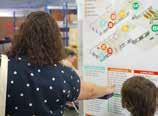
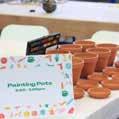
Graphic design layouts
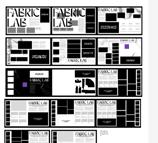
Layouts are created by graphic designers to curate the projects, opportunities in a brand-upholding way.
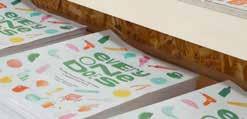
Copy document




Text written by team, residents and collaborators.
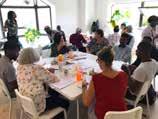
Programme tracker
Times and dates confirmed and scheduled.
Newspaper graphic design
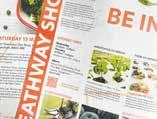
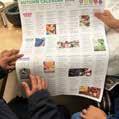
Collaborative copy writing

Signage
Calendars
Scheduling
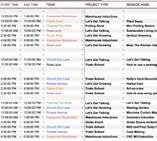






Every One Every Day uses a range of in person communications methods, including the newspaper, posters, shop front designs and leaflets to distribute across the borough. They are an invaluable tool to communicate with residents, especially those who have not visited a shop or spoken to a shop team member.
Every One Every Day shops are not retail environments. They don’t sell anything and are not run for the purpose of generating profit. They are designed to be visually engaging with large windows filled with different prompts, which serve to intrigue and entice passersby with the highly visible activities taking place within.
The design elements of the space encourage engagement with window display provocations such as; ‘What would you like to see happening here?
Within the spaces, the general look and feel are kept minimalistic to avoid prescribing the space. Residents are encouraged to contribute to the space with regularly changing window and wall displays which fosters a sense of shared ownership and care.
Every One Every Day produces many different project identities which are amalgamated in the newspaper as the key method of communicating the varied opportunities to participate.
Programme elements include any design consideration to engage or entice residents to participate. From vinyl on walls and scaled calendars to wayfinding signage and full information packs to take part in a Learning Programme. All elements are consciously communicated in text, image and where possible, infographic form to ensure design outputs are inclusive.
A full history of all newspapers and reports can be found at www.issuu.com/participatorycity.
Every One Every Day uses a range of digital communications methods, including websites, social media, and films.

Digital communications are a valuable tool to speak directly to residents, communicate research evidence, and organise activities.
Every One Every Day maintains several websites to communicate about the project, including a main website, one for the Warehouse, and other sites for business programmes and collaborative brands.
Websites and social media aim to replicate the sense of welcome and familiarity that residents experience in the neighbourhood shops by being inviting, friendly, and accessible. The look and feel of all online content is regularly updated to reflect new project ideas, narratives, and activities surfaced during co-production. This dynamism also helps keep residents engaged.
As of 31 December 2022, 151,340 unique visits have been made to the main Every One Every Day website as per the graph over page.
Every One Every Day also commissions films, which allow residents to share their experiences with the project directly, the impacts to their lives, and the vision of the initiative in their words. These highimpact communications are widely distributed via the website and Vimeo.
A full history of films can be found at www.vimeo. com/participatorycity.



An operations team provides basic infrastructure to enable a range of platform activities. The basic functions of the team includes office administration, premises and assets management, health and safety, finance, technology, and training.
The operations team manages the buildings in which all project activities take place, including Everyone’s Warehouse and the neighbourhood shops. As part of this, the team supervises a range of building improvements and modifications that make it possible for each space to accommodate diverse project activities. For instance, adding kitchens or gardens, or opening up spaces to allow for more flexible uses. In Barking, Every One Every Day converted a former Citizens Advice Bureau, and in Marks Gate, a former taxi office. Everyone’s Warehouse was previously a print works.
The operations team is also responsible for setting the competence and safety framework through which residents and staff access spaces and workshops, specifying opening and closing procedures and designing training programmes for residents to become keyholders of the spaces. Keyholders can access spaces without the need for Every One Every Day staff to be present, allowing for more opportunities for project activities, particularly during early morning or evening times when shops usually aren’t open.
The operations team also helps source and purchase project materials and resources. A sample transaction report for a month’s purchases might include wood for bird boxes, vegetable cubes for a fried rice session, seed balls for an Open Corners project, shearers for an allotment project, and screenprinting tools for a Open Project Night. Managing the in-take, delivery, and set up of these materials can be a full-team effort during a busy programme period.
Health and safety and risk management of all project activities is also under the purview of the operations. The team ensures that all project activities are covered by insurance and that robust risk assessments are in place for every activity and space.
Risk assessments include a review of whether the activity is accessible, well-lit, heated or ventilated, sufficiently spacious, free of obvious obstacles and dangers, fire risk assessed (if relevant), and licensed for food if necessary, amongst other checks. Teams must list any potentially risky activities and the control measures they are putting in place to mitigate risks.
Common risk control measures include briefing residents on fire evacuation plans, clearing up spills as soon as they happen, informing parents of their responsibility for their children, identifying any potential choke hazards with parents of small children, controlling the distribution of sharp items (i.e. scissors or knives), identifying and removing trip hazards at the start and end of each session, and more.
The team uses a number of technology tools to support platform activities. These are set out in the following table and include Google Workspace, design software, Mailchimp for newsletter communications, Hubspot for research, and Monday.com for project management. The team has also experimented with Mighty Networks for online collaboration, particularly during COVID-19.
One of the challenges in delivering a co-created and emergent set of interrelated project activities is planning accurately for operational needs. Throughout the project, the operations team participates in fullteam co-design sessions to help forecast operational needs and deliver support during the programme. However week-to-week there are always last-minute deliveries of project materials and unanticipated needs, so the operations team also manages weekly requests for deliveries, repairs and maintenance, purchases, and other support needed for project designers to deliver each session in a programme. This is done manually Google Workspace products.
Product Use Detail
• Graphic design

• Newspaper
Adobe and Inkscape
• Layouts
• Posters and outreach Materials
• Asset tracking
Asset Panda and Google app store
• Check-in and check-outs
• Premise checks
• Files
• Calendaring
Google Workspace
• Documents
• Spreadsheets
• Presentations
Used by the Design team and Project Designers for design work and to teach design.
Used by Operations Team to track assets, including checking-in/out and premise checks.
Free of charge due to charity status, including all sub domains and additional accounts.
Hubspot
• Resident engagement and participation metrics
Used by Project Designers and research team to understand resident engagement participation over time.
Mailchimp
• Marketing
• Automation
• Platform and email marketing service
Used by Project Designers and Business Team to communicate with residents via weekly email newsletters.
Monday.com
• Project management
Used by the design team for project management and by project designers for managing coproduction of projects with residents.
Mighty Networks
• Online collaboration
Used by Project Designers during COVID-19 to facilitate online sessions and collaboration
Squarespace
• Website design and management
Used by the Design Team to maintain all websites
The system costs about £1.4 million each year to run, nearly half of which is for personnel costs. The next largest budget area is running neighbourhood shops, which requires funding for rates, rent, utilities, maintenance and often significant improvements to make them suitable for project activities. Significant funds are devoted to communicating about projects and sessions, largely for the design, printing, and distribution of newspapers and outreach materials (window vinyls, fliers, banners, posters, etc). Project material budgets vary year to year depending on the number and scope of projects, particularly the scale of full-team and cross-borough events such as festivals.
During the first phase of the project, project materials and the budgets for equipment and machinery were allocated according to shop location. However, this was changed to become a shared budget during the second phase to reflect that projects were often designed and shared across multiple locations.
To help others interested in replicating the model get a sense of costs, we have shared some information about breakdown between various elements of the budget.

This is based on average costs of our five shops during one year of operation. Rates and rents are the largest variables, on the low end were only a few thousand pounds a year and on the higher end were £25,000 per year.
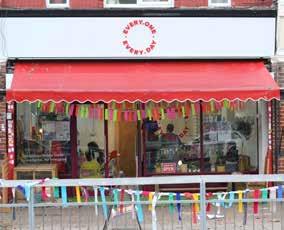

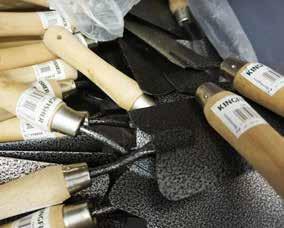
Developing a project ecosystem requires funding for projects and programmes as well as machine materials. The amount of funding needed for project materials varied according to the number of programmes delivered, but on average it cost about £50,000 for a year with three programme cycles.
Communicating about projects and activities is largely done through our newspapers, social media, printed materials, and email mailers. These costs are based on doing three programme cycles in one year.
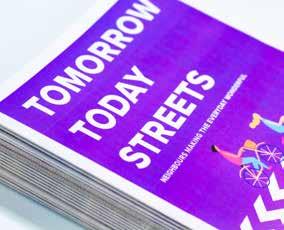

One of the challenges in designing and building Every One Every Day has been to operate a borough-wide platform that is capable of being adapted to individual neighbourhoods.
This means striking the right balance between deploying a centralised and borough-wide approach with specific elements unique to each neighbourhood. A degree of centralisation is critical and helps to make processes and logistics simpler. A unified aesthetic means that design work is easier to execute. Cross-platform standardisation allows equipment, signage, and furniture to be interchanged across the spaces. Using a common framework means that staff and project designers can more easily work in different shops with less adjustment time required.
Each shop has also developed unique characteristics that reflect the neighbourhoods in which they are located, including the neighbourhood context, or barriers to resident participation,such as availability of transport links etc.

The Ripple Road shop is situated on a busy high street next to a train station. There is also a bus stop right outside the shop. This accessible location and high visibility means that more new residents engage with the project, particularly as compared to shops that aren’t located on high streets.
The most common way for new residents to engage with the project is that they see some sort of activity happening in the shop through the front windows, become curious, and go in to ask about the space. The fact that the shop has a large kitchen means that many sessions centre around food and cooking. This underlines the understanding that residents are more likely to participate if they are aware of what opportunities are available to them (as opposed to a resident coming into the space for the first time and before even knowing that there is a kitchen saying that they want to participate in cooking sessions).
Residents are more likely to participate if they are aware of what opportunities are available to them.

The Thames neighbourhood shop is located in Everyone’s Warehouse, on the Thames road industrial estate.

By understanding all of the factors that form the fabric of a neighbourhood shop, project designers can better create the environment for participation. There is little pedestrian action in the area and thus low footfall. Programming and planning is integral to residents coming to the shop, as it is less likely that people will walk in off the street. The newspaper delivery and start of programmes lead to an increase in participation.
The Thames shop had seen successful saturdays, as opposed to quieter saturdays in other shops. This may be because there are not many other saturday opportunities for residents in the surrounding area, and even if there is, the activities are at Everyone’s Warehouse run by external organisations. Big all-day events such as Every One Every Day’s Make It!
Festival are often hosted at the Warehouse, which helps make the shop a familiar place for residents to come for a Saturday full of activities.
The Thames shop is a good example of the importance of adapting the model to the particular neighbourhood context. By understanding all of the factors that form the fabric of a neighbourhood shop, project designers can better create the environment for participation. It is important to understand all of the factors that form the fabric of a neighbourhood shop in order to best create the environment for participation in that particular context.

By understanding all of the factors that form the fabric of a neighbourhood shop, project designers can better create the environment for participation.

The Marks Gate shop is on a high street in a part of the borough that is fairly cut off by the highway. As a consequence, residents often stay in and around the area, resulting to a high degree of familiarity.

For this reason, Marks Gate has a regular group of strongly-bonded participants, as well as lower numbers of new residents. This means that project communications, such as newspaper distribution, are not strongly correlated with higher participation. However, they are still vital to strengthening and building the existing resident network, particularly among parents with schoolage children.
Parents often come to the shop because they are looking for child-friendly activities, as opposed to looking for opportunities for themselves. Many Marks Gate residents are familiar with the shop and come to it regularly to meet others and enjoy socialising. Because of this, programmes and new project activities don’t seem to drive participation as much as in other shops.
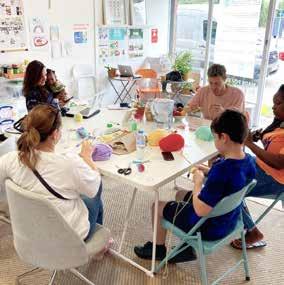
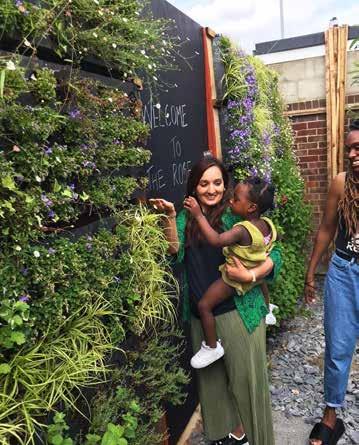
often come to the shop because they are looking for child-friendly activities, as opposed to looking for opportunities for themselves.

The Heathway shop is situated within the Heathway Shopping Centre, a large covered mall in Dagenham with an underground station. This means the shop has high foot traffic and many new residents visiting the space.
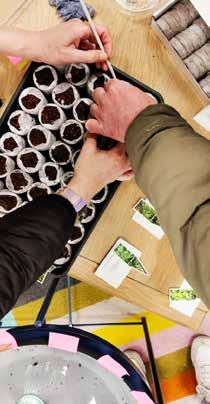
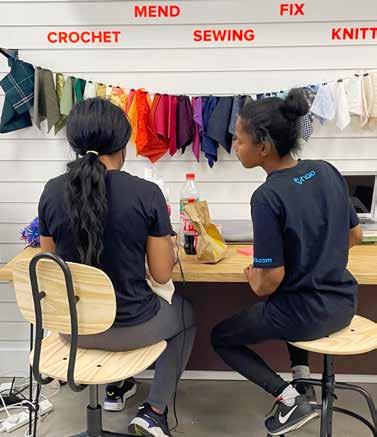
The shop’s large floor-to-ceiling windows means that the space is mostly entirely visible from the outside. This is important because people are more likely to stop and get involved when they can see the opportunities available.
A good example of this is the sewing machine area in the front of the shop that is often in use by a resident. When new residents see people sewing in the shop, their interests are piqued and they come in to learn more about the project. This results in a positive feedback loop whereby residents engaging in sewing activities create more interest in sewing, which means the number of residents using the sewing area steadily increases.

When new residents see people sewing in the shop, their interests are piqued and they come in to learn more about the project.

The rise of digital shopping has reduced the appeal of physical stores to retail customers. However, the Every One Every Day shop at the Heathway stands out as a prototype for how social infrastructure can attract residents back to local amenities through practical participation.

Located in a shopping mall, next to an underground station, and near a dense residential neighbourhood, this shop has the highest daily footfall compared to other neighbourhood shops. The shop’s design is based on a co-design and coproduction approach, where many features were built by and with residents, such as Sandie’s shelving and Dennis’ spool holder.
The shop’s design includes some noteworthy features that promote resident interaction, such as movable workbenches on wheels, which can be easily manoeuvred to accommodate various activities. The team experimented with different layouts to encourage different behaviours within the shop space, recognizing when some led to non-participatory interactions. The front of the shop displays emerging ideas and projects that developed from resident interest. The shop also has collection points for materials to be used in various sessions, such as HPDE for Precious Plastic sessions and patterns for sewing projects.
The Dagenham Heathway shop serves as a prime example of how alternative uses of city centres can foster community engagement and connection
The shop proudly displays the creations made by local residents, celebrating local talent. The high level of participation in the shop supports both ad-hoc and programmed activities. Participants are guaranteed a program of activities, which leads to a faster pace when developing emerging ideas. For example, vinyl printing clothes started as an ad-hoc session, but progressed to a regular weekly session hosted by a resident. The team built a specific area dedicated to this making activity, which had multiple attendees and regular skill-sharing opportunities.
The shop’s size encourages self-directed activity, with residents regularly using machines like the Silhouette cutter, digital equipment, and sewing machines during opening hours. The space also encourages residents to interact with each other and form connections over activities, which is unique to this shop.


Two organisational members used the Dagenham Heathway shop during the short time it was open. Bow Arts and Art Catcher utilised the shop to run creative activities when it was not hosted by Every One Every Day. Bow Arts used the shop to display local children’s artwork, while Katjia from Art Catcher used the space on Saturdays to run regular mosaic building sessions.
Developing a strong relationship with the local library allowed for participation opportunities outside of the shop space. Setting up the hydroponics unit was a way to extend participation projects into other spaces in the local community, increasing entry points for residents to learn about growing.
As retail spaces and shopping malls are being used less, community projects like this can provide numerous benefits for both the community and the surrounding environment. These spaces can be repurposed and revitalised, bringing new life and value to an area that may have previously been disused or used only for commercial purposes. They provide a place to share skills without a monetary exchange and create meaningful local spaces that promote social interaction and collaboration, which strengthens community bonds and promotes a sense of belonging.
In conclusion, the Dagenham Heathway shop serves as a prime example of how alternative uses of city centres can foster community engagement and connection. The shop worked as a hub to meet new people, share sustainable skills, and have a cup of tea with neighbours. It is clear that communities desire opportunities to connect with one another, and when an open and inclusive space is created, organisations and individuals will come together to shape it to cater to the needs of their local area.
Sewing and textile-centred sessions have formed a core part of the making activities that have taken place across Every One Every Day’s neighbourhood spaces. As the platform grew, so did the demand for accessible and free learning opportunities in this skill area. There is no shortage of sewing skills and sewing interest in the borough of Barking and Dagenham. For example, 18 percent of residents have selected ‘Sewing’ and ‘Repairing and Mending’ in the Every One Every Day sign up form in 2022, after the spaces reopened following the COVID-19 pandemic.
Thanks to the availability of sewing facilities in the borough through the platform, projects focusing on sewing and textiles have grown and evolved in response to residents’ interests and skills, with the newest iteration, Make Your Own, emerging out of codesigns with residents following 2022 Summer Programme.
Each neighbourhood shop is equipped with dedicated space for residents to come and sew, The widespread availability of fabric workshops has enabled residents to build, share, and learn new sewing skills, whether as part of resident-led sessions or through selfdirected learning.

These opportunities are also facilitated by the development of a distinct culture of collective

learning and participation, which is cultivated over time by residents participating in and hosting sessions in the spaces with support from the pool of resources, advice, and inspiration offered by project designers and the wider Every One Every Day platform.
While the setup and some of the specific materials differ, each workshop is designed to have the same core set of tools, materials, and equipment that enables residents to pick up some fabric and thread and start their own project. This includes: spacious workshop tables, sewing machines, dressmakers tools, fabric, and thread, as well as vinyl printing tools and materials.
The fabric workshop in Everyone’s Warehouse is most extensively equipped and stocked of these workshops, with several additional pieces of equipment including an embroidery machine, industrial overlockers and sewing machines. Residents who began their fabric making journey elsewhere will often progress to the Warehouse to scale up or further develop their ideas and skills.
The distribution of inclusive small-scale fabric maker spaces has led to a range of different outcomes not only directly impacting residents involved in the project, but also the borough more widely. These spaces have created learning opportunities for residents at a borough-wide level, meaning residents


are able to seek out opportunities in places that are local to them. This has in turn supported people to gain new skills, meet new people in their areas, and develop new connections around common interests. Because these spaces are openaccess and free to attend this has also created a culture of ‘just try it out’ where residents have had the space to undertake self-led learning, or learning alongside others outside of planned sessions.
Residents have made, altered, and mended clothing that otherwise they would have had to throw away or purchase new.
With these fabric skills residents have made, altered, and mended clothing that otherwise they would have had to throw away or purchase new. These opportunities give residents an alternative to buying new things or paying for tailoring. This has also contributed to people adopting and sharing more circular thinking and behaviours, sharing and upcycling skills, and how to use new techniques and innovative materials.



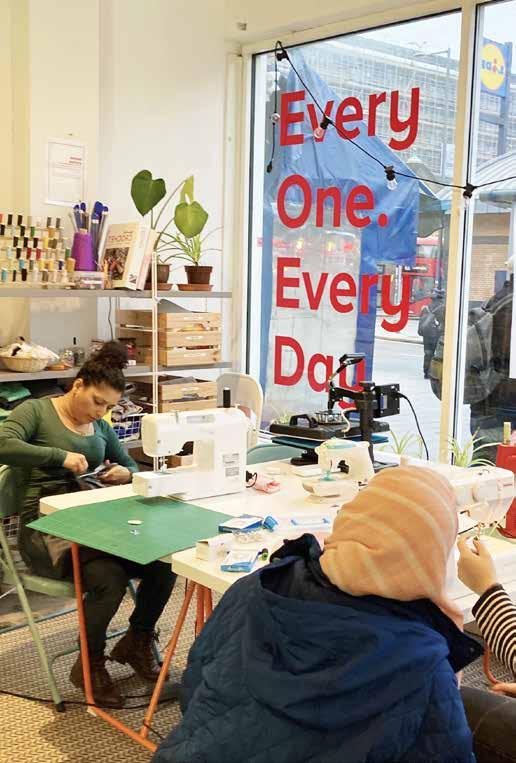
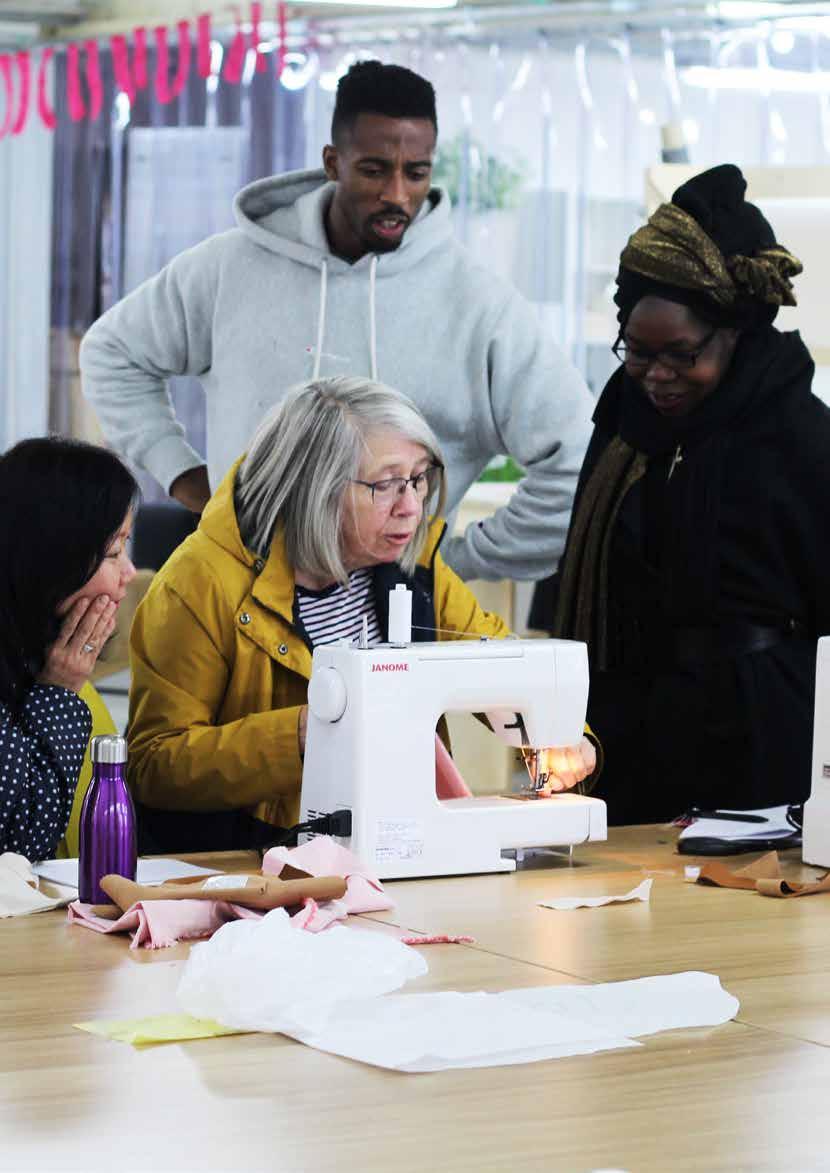


Residents gain access to participation opportunities through a range of access points, from open shop spaces to learning programmes to be able to operate technical equipment.
Programmes are a key tool in the participation ecosystem, enabling the co-ordination of participation opportunities and efficient communication via newspapers and other means.
Participation projects are a useful way of structuring the ideas emerging from residents which focus on achieving specific goals (for example around growing, learning or sharing).

Projects and learning opportunities are co-ordinated into programmes which enable efficient communication of the opportunities involved.
By providing easy access to learning opportunities, residents are encouraged to explore and experiment, expanding their knowledge and skills in a supportive and collaborative environment.





The process of co-design and co-production of neighbourhood projects with residents builds participation opportunities.




The participation system aims to create a huge diversity of participation opportunities for local residents.
As no single point of access will be suitable for all residents, Every One Every Day creates multiple opportunities to enter into the ecosystem. This helps ensure that all opportunities are accessible to as many people as possible.
Entry points range from participating in simple projects with low time and commitment, to opportunities to learn complex making techniques using specialist technical equipment and involving larger amounts of time and energy.
Participating in activities
Attending a project session, being part of the programmes and attending festivals.
Hosting and collaborating
Working with others to organise, support or host existing projects.



Helping to introduce residents to activity and gaining confidence to navigate independently.


Social media
Interacting through Facebook, Twitter, Instagram etc.







Popping into shops and the Warehouse

Passing by and popping into the shops to have a cup of tea and to find out more.
Connecting online with mighty networks
Creating an account on Mighty Networks to connect residents together, during COVID-19.
Hosting a framework project session
Hosting a session of an existing project such as Trade School or Great Cook.
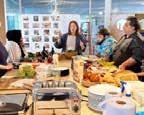
Replicating a project
Replicating a project that is tried and tested already, making it quicker and easier to start.
Big festival days
Co-produced festivals of 100s of activities, often centered around a specific theme such as the circular economy.
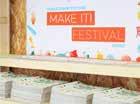
Training and inductions to use varied workshops in an open-accesss neighbourhood makerspace.
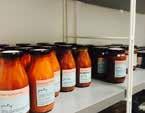

Spin out businesses and co-operatives form the business development programmes and collaborative brands.








Explore ideas with project designers and other local people to start new projects from scratch.
school
Two day programmes to stimulate interest in developing co-ops in Barking and Dagenham.
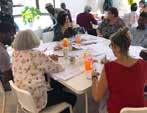
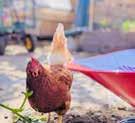
Collaborative programmes across food, childcare, clothing, ceramics, growing, media, making and test trading.

While its primary purpose is to create participation opportunities for residents, the participation ecosystem also acts as a platform for local organisations.
Every One Every Day has created a parallel set of entry points for organisations, encompassing







referrals, shared communications and resources, and full organisational membership, which allows organisations to become keyholders and access to to Every One Every Day spaces, workshops, and learning opportunities.
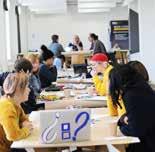
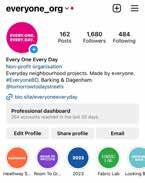
Using media to promote each others activity in support of residents.
Creating relationships and understanding with project designers getting to know the local organisations and businesses.
Professionals coming along to Every One Every Day activity to better understand the potential for they service users.
Organisational membership
Organisation and groups are invited to become organisational members and make use of the spaces and equipment in the same way the residents are.

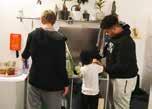
To and from local services and Every One Every Day often via social prescribing avenues. Sharing spaces and equipment with other local organisations, services and businesses.


Professional accompanying a resident
Helping to introduce residents to activity and gaining confidence to navigate independently.
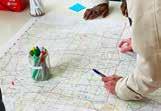
Partnerships for new initiatives and funding
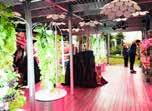

Working with new partners to create new projects and platforms and bring new opportunities for organisations and residents to the borough.
Here and Now






School of participatory systems and design. Research and dissemination workshops, camps, co-design and research partnerships.


Cities programme
Adaptation of the Participatory City approach elsewhere, working with development partners in Scotland and Canada.
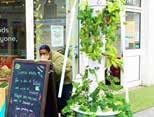
Using Every One Every Day spaces
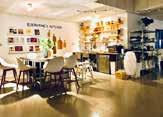
With professional support groups outside of inclusive participation programmes and public opening times.
Strategic partnerships
Longer term partnerships that will work across a number of initiatives and spaces.
Participatory City Foundation trustees
Members of the Board of Trustees to support and steer the development of the approach in Barking and Dagenham.
The neighbourhood participation ecosystem is an inclusive peer-to-peer, practical environment made up of an ever evolving network of projects, residents and organisations.
The informal learning environment aims to provide a self-navigable opportunity for residents to learn new skills through opportunities, projects, and programmes. These are made available to access via the deliberate locations of Every One Every Day’s Neighbourhood Spaces.
This informal learning environment draws on two main components of the Participatory System.
• Space and tools provided by the Participation Platform
• Opportunities accessed via the Participation Ecosystem.

Traditional learning opportunities for skill development require residents to have time to commit to a period of study, as well as the confidence to apply to these programmes and meet specific entry criteria.
By contrast, Every One Every Day aims to create a diverse and versatile integrated learning environment, designed to be inclusive, flexible, and highly exploratory.
Neighbourhood Programmes
Adult learning
Apprenticeships
University
Paid and funded courses Internships and placements

Inclusive informal learning opportunities
Work experience
Warehouse and Learning Programmes
Collaborative Business Programmes
Identified types of learning in a participation platform and ecosystem:
Learning type
Maker-centred learning
Learning and sharing practical skills
Peer-to-peer learning
Intergenerational learning
Adult learning
Family learning
Community learning
Experiential learning
Neighbourhood Programmes
Warehouse and Learning Programmes
Collaborative Business Programmes
As a concept, Every One Every Day envisages a future state in which the ecosystem of participation opportunities is a constant presence in the borough and in people’s lives, with activities available and accessible every day.
To achieve this, the platform requires flexible project design, production and delivery approaches coupled with far reaching communications capable of ensuring that all residents know of and are enticed by these opportunities.
To more deeply understand the opportunities, differentiating between programme types helps entangle the breadth of opportunities available, which specifically and consciously cater to participants with different situations and time to commit.
All shops are programmed with varied invitations, opportunities hosted by both the platform and local residents.

The Thames shop is programmed with varied invitations, opportunities hosted by both the platform and local residents, with a focus to introduce different Warehouse spaces.
Induction programmes introduce the different workshops, machines or tools of the Shared Workshops to local residents.



Learning programmes invite residents to develop their technical making skills at a participant’s own pace.
Collaborative Business Programmes invite commitment for a few months to take an idea through to business development.

Commitment required

Neighbourhood programmes refer to the overall compilation of all the programmed participation opportunities across the borough that specifically happen via the shop co-production process in the different neighbourhood shops.
Neighbourhood programmes cycles provide the main structure to the organisation of the platform and indicate a project designer’s primary priorities and functionality.
In practice, programming in cycles has been both an agent of communicating the platform opportunities to residents to engage, yet has sometimes been a barrier for residents as their timing to want to start a project has fallen at a time when project designers are concentrating on supporting those in preparing and delivering their projects.
The effect of this has been to structure the platform into clearly defined cycles of neighbourhood programmes and programme development with residents, followed by a newspaper production sprint, programme delivery and subsequent evaluation, analysis and communication of clear timings. In the final report, more detail on tested programming methods will be shared to combat this emergent barrier to participation.
The Thames shop serves a unique function in comparison to the other neighbourhood shops across the borough. While residents from the local Thames area can participate in the project just like they would at any other neighbourhood shop, the Thames shop serves as a stepping stone for residents to become more integrated and comfortable with the different areas of Everyone’s Warehouse.
To achieve this goal, the Thames shop runs inductions and sessions, such as sewing projects,from the Fabric Space, rather than just in the Thames shop area. This approach provides residents with exposure to a broader range of equipment and resources available at Everyone’s Warehouse, with guidance from project designers.
Neighbourhood projects in the Thames shop are generally co-designed in a similar way to the rest of the platform. However, there are more resources available in terms of space and equipment. By delivering these projects with residents, the Thames shop encourages and promotes more familiarity with Everyone’s Warehouse, as well as with the different workshops and spaces available for induction.
In summary, the Thames shop plays a vital role in facilitating residents’ integration with Everyone’s Warehouse. By providing additional resources and exposure to different areas, the Thames shop acts as a gateway for residents to become more involved with the project and the broader community.

Prior to the Covid-19 Pandemic, the role of the Warehouse Team were crucial in delivering inductions to workshops and machines.
The workshop inductions provided and means for access to the Shared Workshops without making the assumption that a resident would attend with prior knowledge. These were programmed in the Warehouse, were delivered by the platform and would last between one to four hours.
Shared Workshops are the workshops in the Warehouse which were identified as areas of higher risk and therefore required detailed risk assessments and associated precautions. The areas of the Warehouse that require additional induction for access can be found on page 107.
Shared Workshop inductions are broadly split into two parts. The first part is to orient each resident to the workshop, such as where to find tools, where to leave work in progress and setting expectations for the space, from ensuring windows are closed when a resident leaves to letting other residents in the workshop know that they are there. The second part is a Machine induction, introducing a resident onto the lowest risk tools and processes available to learn in that workshop, so that they can immediately return to the Shared Workshop to practice what they learnt during the induction.
For those residents that do attend with prior skills and knowledge, they are invited to prove their competency before being able to move more quickly through the Machine Induction processes.
For example: the Digital Lab induction covers
• Fire safety considerations and exits;

• Cleaning Boards which communicate the operations of the area;
• Where to store work in progress;
• Key things to be aware of in this space;
• What other items in this space require additional inductions;
• Introductions to a WhatsApp group of inducted members.
In addition to the induction to the Digital Lab space, residents also receive a specific induction to the laser cutter machine induction, which covers:
• Operating processes;
• Using Ruby software (for Trotec Lasercutters);
• Importing, cutting and engraving with preset files;
• Choosing correct materials;
• Where and how one can learn more.
Learning Programmes were introduced after the COVID-19 pandemic as a means to rebuild the engagement at Everyone’s Warehouse and as a response to some occurrences of workshop machine misuse.
Designed emergently, the Learning Programmes provided deeper learning opportunities for those wanting to develop beyond that offered in the Warehouse Shared Workshop Induction programmes and were also an organisational tool to ensure that those using and operating in the spaces were operating safely and according to Warehouse processes.
The programme content covered workshop operations and specific technical making for eight workshops in Everyone’s Warehouse. These were woodwork, ceramics, plastics, fabric, digital making, baking, cooking and gardening. The programme was curated to provide access to the workshops and provide a slower pace of learning than that of the Inductions method pre-pandemic. Organisationally, the Learning Programmes provided a means to describe developed programmes of which the outcome is tangible maker-centred learning.
Learning Programmes developed throughout 20212022, which include the Maker-in-Training programme and the Re:Works programme which was a collaborative programme designed with the Victoria & Albert Museum making use of their waste and exhibited at The Great Exhibition Road Festival in June 2022.
A full report on the approach and development of the Learning Programmes will be reported on in 2024.

Outlined in Tools to Act, the Collaborative Business Programmes are a vehicle for participation within the Participatory City framework, wherein residents work in groups over several months to design, make and test trade products or services. These programmes offer participants an opportunity to learn new skills and test trade their business ideas rapidly to learn if their products or services sell. The programmes are grouped into model types which describe the nuanced application of the programme design and collaborative principles.
The Collaborative Business Programmes help participants solicit rapid insights about products, find potential collaborators, learn collaboration and business skills, get experience in marketing and sales and develop the confidence they need to start a business.
The kick-off meetings of a programme are often scheduled into the Neighbourhood Programmes to allow time for communication to circulate via the newspaper and online presence. Due to the larger commitment required from participants on these programmes, they are often launched with an additional information pack, webpage and pre-scheduled information sessions for questions.
A full summary and evaluation of Collaborative Business Programmes between 2018-2022 is included in this report.

Early 2022 was the first time the project was able to fully emerge from the restrictions of the COVID-19 pandemic. The Neighbourhood Shops opened again, though only two days a week rather than three during a typical programme. The 2022 Spring Programme ended up being the busiest programme of the year, demonstrating a latent desire from residents to participate and take advantage of opportunities to meet and share with neighbours again.
In early 2022, there were also a number of adaptations to spaces and programming to adjust to changes in behaviour created by the pandemic. The programmes focussed more on outdoor activities and specifically growing and making sessions rather than cooking and food. More attention was given to making the entry spaces at the front of the shops directly engaging. Games, programme newspapers, book exchanges, planters, and tables and chairs were set up to create even more welcoming and inclusive spaces against the backdrop of two years of social distancing.
Some neighbourhood projects felt the impact of the COVID-19 pandemic more than others. The Open Fridge project, which aimed to reduce food waste, was difficult to restart because of concerns about sharing food. Chicken School and Bee School were ultimately discontinued due to the impossibility of sharing care for animals under lockdown conditions.
In the 2021 Autumn programme, there was a focus on nurturing ‘maker culture’ across the neighbourhood shops. The aim was to create more opportunities for regular making and hands-on activities outside of Everyone’s Warehouse.
Fabric studios, plastics recycling, ceramics tools, and other making equipment were brought into the neighbourhood shops. These workshop spaces were set up in the front of the shops to excite local residents and stimulate interest in becoming involved.
To build making skills and capacity, the Spring 2022 programme included the largest-ever programme of inductions and introduction sessions to the various making opportunities.
The research and evaluations arising from this period shows numerous examples of residents using the equipment in increasingly self-directed ways, with stories emerging of residents sharing their skills and knowledge with others and using the equipment and resources available to them in ways that not only create value in their lives (i.e. making and repairing clothes) but also in the community (i.e. skill sharing, building relationships, and growing networks of mutual support).
In response to resident feedback that gaps between programmes sometimes felt too long, a number of experiments were designed with the aim of making programmes more responsive and flexible. This led to a new approach to programming that created ad hoc opportunities for residents to co-design sessions that would be implemented as soon as possible (often in the following week), without the deadlines and pressure of being part of a borough-wide newspaper programme.
This approach led to neighbourhood shops being more active during the co-design cycle. A challenge in this approach was that sessions were sometimes less well attended as project designers relied on social media and word of mouth to promote these sessions, without the borough wide invitation of the newspaper.

During the spring 2022 programme residents were invited to be more involved in the design and layout of the neighbourhood shops. Sessions were codesigned with residents around layout, equipment, and improvements to the shop spaces.
The intention was to invite residents to take more ownership of the spaces and to maximise the involvement of residents in restoring the neighbourhoodW shops to being places of handson, practical peer to peer participation following a prolonged period of inactivity due to the COVID-19 pandemic.
Ideas can come from anywhere. From the people who live locally, from other neighbourhoods across the world, and from the many partners and collaborators. Some existing open-source projects are particularly good at surfacing people and ideas, and these have been used in the Every One Every Day project to kickstart activity and are referred to as stimulation projects. As a general rule only ideas that local people love and want to develop themselves get designed and tested in the neighbourhood.
Projects get co-designed through putting together combinations of several open source ideas, utilising local resources, people’s creativity and energy from the neighbourhoods combined with the application of participatory methods. This always makes every project, regardless of the idea’s origins, different and unique because it can only be made in that particular way by the people that live there.
Ideas are plentiful and their success and survival should depend principally on people’s participation in a particular location - this only happens if residents continue to experience the benefits directly and see it benefiting others.

Project types Project description Resident commitment Project example * Platform support
Entry projects Projects opportunities with low barriers, and simple invitations
Tea & Toast Big Festival Open table
Hosting framework projects

Projects with a framework for a resident to be able to collaboratively deliver a session as part of a larger set of connected project sessions
Stimulation infrastructure projects.
Prompting engagement via the physical equipment in shops or the local neighbourhood
Individual residents projects
Full co-design process with a committed resident, who has time, skills, confidence and desire. Often residents will surface others with similar interest
Collaborative projects
Full co-design process with committed residents, who have time, different skill, varying confidence and different desire and reasons
Trade School Great Cook Story Box Walking Bus
Open Fridge Warehouse In A Box - Plastics Station
Meet the Machines
Makit DIY Skills Bonsai
Woodlife Open Corners
Networked projects
Opportunities which come to the locality because of the platform, or due to relationships the platform has built with local and nonlocal organisations and services
1000 Trees
Re:Works Listening Barber
*Please see the Tools to Act project directory for a full list of developed projects.

A key element of the research project was to understand the conditions which need to be present locally for the participation system to integrate with other parts of the civic infrastructure in order to function properly and support broader developments.
Tools to Act described the early attempts of the project to build these conditions, through the partnerships and other relationships formed with local organisations as well as through the Coproduction Lab established with the Council.
The pandemic created an urgent requirement for local organisations to coordinate their resources and efforts to deal with job losses, medical emergencies, food access issues, and other immediate challenges being faced by local residents. Participatory City Foundation played its part as one of five local organisations tasked with coordinating volunteers, and assembling and delivering essential goods to residents unable to leave their homes.
This experience meant that the project emerged from COVID-19 with stronger organisational relationships and new opportunities to integrate the participation system into the borough.
Post-pandemic, these have led to two important developments. The first is a borough-wide cocnept and plan for social infrastructure. This plan was drawn up by Barking and Dagenham Giving, Barking Enterprise Centre, The BD-Collective, BD CVS, and Participatory City Foundation, the key social sector organisations whose work creates capacity more broadly for social sector organisations to make impact in the borough. This plan served to develop and cement cross-sector collaboration in the borough and created the potential for sector-wide solutions.
At the time of writing, this work has focussed on household debt and social isolation.
The second important development was a collaboration with Universal Services, the part of the Council responsible for a range of front-line services. The collaboration explored how to integrate the participation system with the formal service systems in the borough. This built on the work of Participatory City Foundation’s Co-production Lab in 2020 and 2021, which initiated a set of prototypes designed to test integration, from making referrals to co-designing new solutions.
The Co-production Lab designed a workshop for Every One Every Day staff and Universal Services staff to develop a range of prototypes across a continuum of integration approaches. The prototypes aimed to help residents navigate between the world of formal services and that of self-directed and informal practical participation opportunities.
The result has been a series of participation sessions delivered in council Community Hubs across the borough and Council staff introducing service-using residents to participation opportunities.
How do we send people to your services / what is the referral pathway?
How can we use your resources/you use our resources (for a fee)?
How can we help each other promote activities or services?

How can you come to our session / we come to your session and interact?
How can we accompany people to each other’s activities or services?
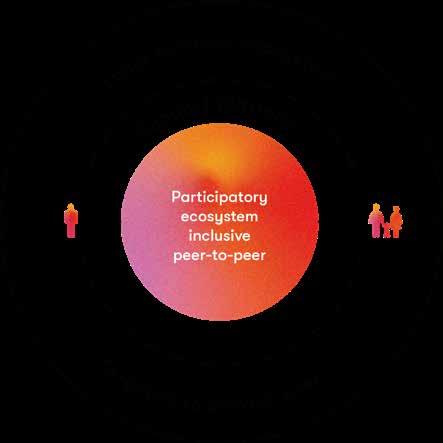
How can we co-design something new or redesign our activities together?





Establishing open and clear communication channels is crucial for organisations with different models to work together. Regular meetings and discussions can help to build trust and address any misunderstandings or misalignments.
Organisations should take the time to understand each other’s models, including their goals, values, and processes. This helps to identify areas of compatibility and potential areas of collaboration.
Organisations can work together effectively when they share common goals. By finding common ground, organisations can work together more effectively to achieve these goals.

Organisations should work towards a shared understanding of how they will work together. This includes agreeing on roles, responsibilities, and decision-making processes.
Organisations should work towards a shared understanding of how they will work together. This includes agreeing on roles, responsibilities, and decisionmaking processes.
Organisations should be flexible and willing to adapt their models to accommodate the needs of their partners. This helps to build trust and ensure that the collaboration is successful and sustainable.
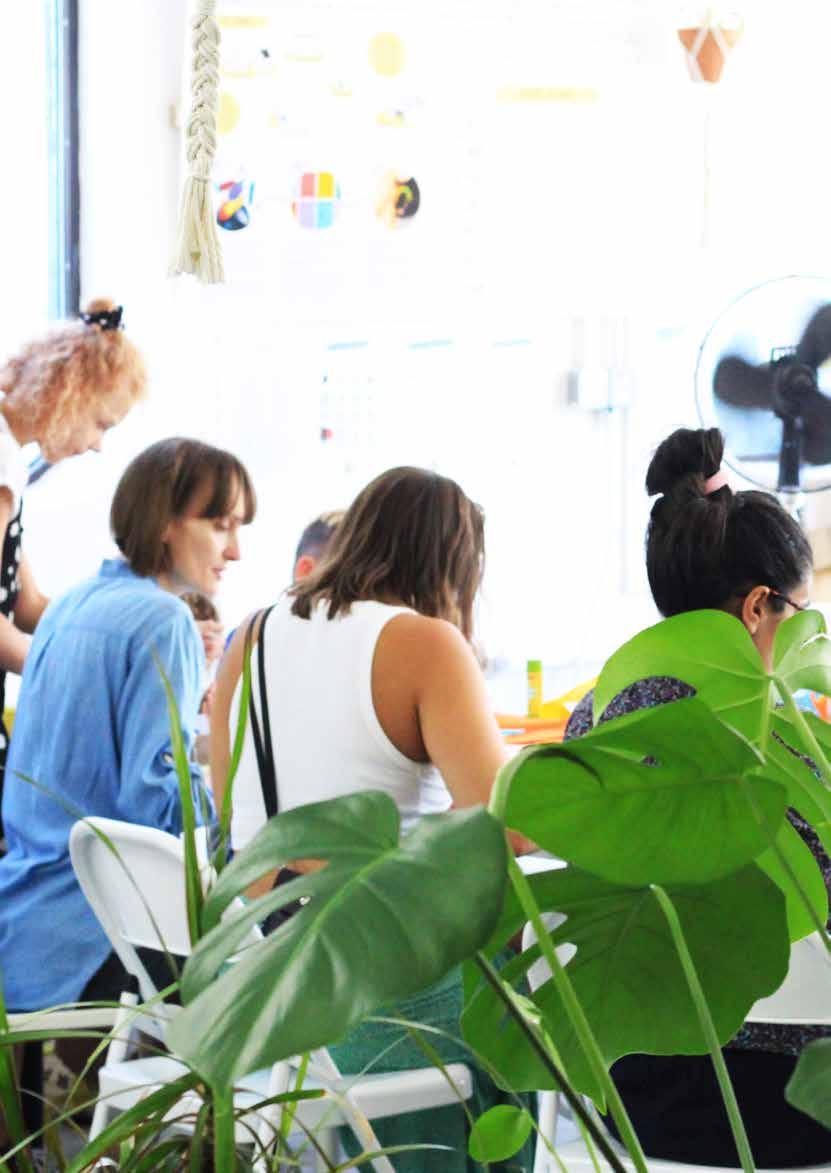
Entrepreneurship, ownership, and competition drive local economies and create the incentives that enable residents to participate in it. Accordingly, most approaches to local business development take these concepts as the starting point and seek to develop the skills and tools necessary for people to compete.
Most business development programmes, such as incubators and accelerators, set a high bar to entry, with participants tending to already possess a number of key attributes, including prior knowledge and experience, relevant skills, time, appetite for risk, and access to capital.
In contrast, Every One Every Day's Collaborative Business Programmes aim to create multiple opportunities into flexible and inclusive learning and business development programmes. The hope is that anyone with an interest can participate, regardless of skill, ability, or prior experience. This approach also fosters collaboration amongst participants to build bonds, develop social capital, and share risk and reward.
These programmes draw on the resources of the participation platform - spaces, machines, equipment, materials, and operational support - as well as the provision of technical skills taught by peers and experts.
These small-scale programmes create the potential for large-scale demonstrations of new products and services that are designed to contribute to a regenerative and distributive economy of the future, as well as the creation of neighbourhoods built around participation and connection rather than economic growth.
Since the Every One Every Day’s launch, 42 Collaborative Business Programmes took place with over 400 residents*.
This section of the report describes the approach and learnings to building Collaborative Businesses in Barking and Dagenham, and shares lessons that will be useful for others trying similar approaches. Programmes were evaluated on the basis of whether they created;
• Inclusivity and accessibility to enable diversity of skills and participants;

• Collaboration and participation outcomes, such as social capital creation and effective work cultures and structures;
• Business outcomes, such as prototyping, testing, and trading.

Designing accessible opportunities for any resident to learn new skills, develop products and services, and test trade them for business viability and income, with no or low personal risk.
Building opportunities that aim to achieve personal, collective and societal outcomes around increased skills, confidence, networks, employability, employment and social cohesion.
Access
• To machinery, spaces and materials
• To permits, insurance and licence

• To expert tutors and designers

• To a bank account and Point of Sale system

Team
• Meet collaborators
• Learn how to work together
• Learn how to make group decisions
Design
• Learn about developing an idea
• Learn how to design
• Learn how to make a prototype
Designing Collaborative Business Programmes, partnerships and systems that support residents in co-creating small-scale, local, inclusive, circular economies across the borough.
Developing, testing and evaluating the Collaborative Business framework and different models that have inclusivity, collaboration and low risk within the design. Develop case studies, models and tools for replication or adaptation.
Make
• Learn technical skills
• Learn how to make products
• Learn how to make for commercial use
• Learn how to make small batch productions
• Learn how to make labels

• Learn about health, safety and hygiene
Sell
• Learn how to do inventory
• Learn how to cost and price
• Learn how to talk about products and the brand
• Learn how to do product photography
• Learn how to set up and sell at a shop or market stall
• Learn about customer interactions
Evaluate
• Learn how to analyse sales
• Learn about product or concept iteration following feedback and testing
• Plan next steps & co-design follow up support


Collaborative business programmes are draw on the same design principles as neighbourhood project more broadly. However, in addition to these design principles, collaborative business programmes seek a range of technical learning outcomes requiring more specialist input. These are therefore included as additional design features.


Providing ‘Open Info’ and ‘Discovery’ sessions that allow anyone to sign up and join without having to commit from the start.
No prior experience or skills needed to join. Surfacing with residents what skills and knowledge already exist amongst them and what additional support they need to develop their ideas.
Low to no cost
Free participation opportunities and provision of loans for small batch production (about £30 per resident) that turn into grants if no sales were made.
Offering different times of the day including during the weekdays, evenings, and weekends to cater for varied lifestyles. Work shifts shared amongst residents to allow a flexible and shared work load.
Designing child safety, space for children to play, and making activities for children that are accompanying adults into programmes.
Multiple shared tasks that require collaboration, such as running a pop-up shop and selling each other’s products, or collaborative production or product development.
Rapid prototyping and real-life opportunities to test ideas and products with customers as soon as possible.
Open access to space, machines, equipment, and materials as well as permits, insurance, and financial management support.






Expert tutors and the appropriate accredited training to ensure quality and safety in product and service development.
The 42 Collaborative Business Programmes can be split into four different models, focused on brand, design, production, and retail.
While some programmes ran multiple times, no two programmes were designed and delivered in the same way. Each programme was built iteratively upon lessons from previous ones after a developmental evaluation process.
Some programmes had different names and some did not make it to the final selling phase. In most cases, this was due to either low interest amongst residents or due to the COVID-19 pandemic.
All programmes have collaboration designed in but each model tested a different aim and approach. As a result, the phases of Learn/Design, Make and Sell have varying degrees of collaboration amongst participants.
Individual products working under a single brand.
Products designed and sold together.
Model 3: Collaborative Production
Products designed by the platform or a designer and produced together.
Model 4: Collaborative Shop

Six different iterations of the Collaborative Brand Model were tested, including programmes focussed on retail, design, food, and childcare. Most programmes were between three and four months duration and involved groups of up to 15 residents learning how to design and manufacture their own products with the aim of testing them, preparing them for market, and test trading together under one brand.
Residents brought in their own ideas for new shelfstable food products and a food expert helped them refine their recipes and package them in order to trade together at a food stall.
Residents with their own retail products were invited to work with a designer to refine and package them for sale in a pop-up shop that residents ran togethewwr.
Residents making and selling a range of sauces under a single brand. Due to the COVID-19 pandemic, this programme did not go ahead.
• Development of unique products and ideas by individuals;
• Flexible production timelines and self-directed product development allows residents with varying abilities and commitment levels to participate;
• Gradual and light-touch collaboration. Residents only start to work as a team at the test trading stage, allowing them to build friendship and trust gradually;
• Rapid product testing and real-world retail experience that builds transferrable skills. Pop-up shops are stocked with a range of products from multiple residents;
A group of residents interested in setting up their own childcare programmes ran individual sessions under a single brand.
Residents learning graphic design skills and offering design services to clients. Due to the COVID-19 pandemic, this programme did not fully go ahead.
A collective of residents making and selling different kinds of knitwear under a single brand as part of a pop-up shop.
• Creation of high quality products with a good product market-fit due to the diversity of products, skill levels, and design skills;
• Coherent brand identity. Not all resident products fit under a single unified brand;
• Need for lots of responsive one-on-one support during product design and development due to the inevitable variation in skills and capacity in the group;
• High degree of retail skill experience from staff and residents is required to fit out a pop-up retail space quickly and beautifully;
• Limited ongoing test trading opportunities beyond the scope for the programme.
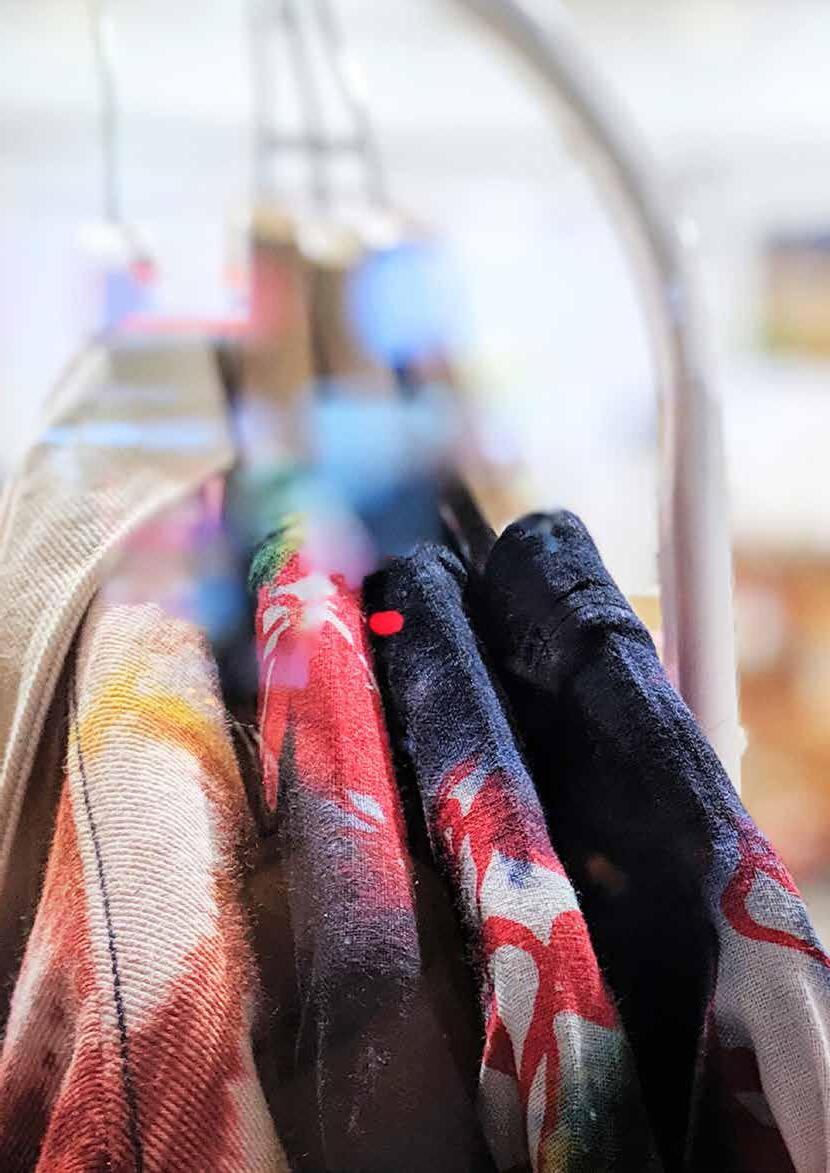
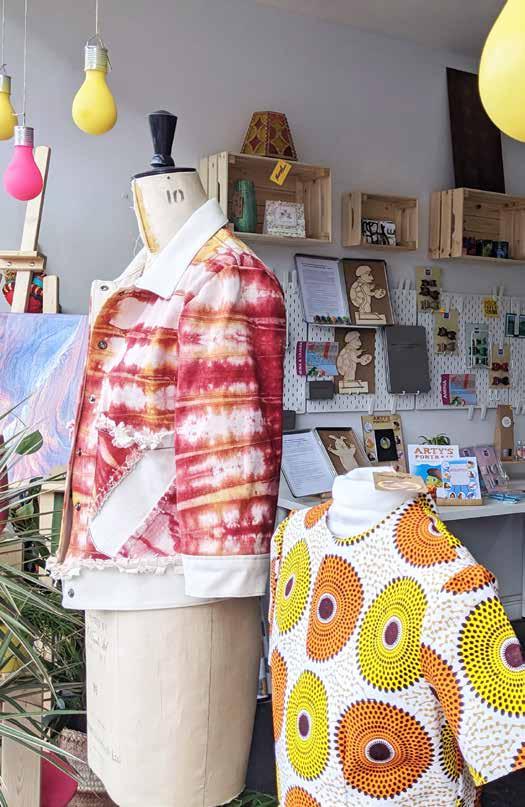

The model applied no selection criteria and was open to all. Support was given where needed, either by product experts, designers or peers. Residents had access to materials, equipment, and space through the Every One Every Day platform. The model also allowed lots of different residents to join in at a level and pace appropriate to them.
Residents were highly diverse in terms of age, skill level, and ethnicity. The majority of participants were women who were trying out a making skill for the first time. Residents often brought their children to join in for learning, making, or trading, which provided a strong indicator of its accessibility to this group of residents.
Example
During the first Rock Paper Scissors programme, parents self-organised to ensure their children were safe and looked after by sharing childcare responsibilities and separating the spaces into child-friendly and risk areas. They all took turns making and looking after the children.
Because residents worked on their own product ideas - often on their own time and in their own spacesparticipants only came together with regularity in initial meetings and during the test trading phase. This meant there were fewer opportunities for interaction in the three-month programme period as compared with other models. The benefit of this was that people could make in their own time and at their own pace; often mothers of young children would work on their products at home after their kids were in bed.
Product ideas and development were often improved by collaboration. Pantry and Rock Paper Scissors started with product idea sessions where residents brought their ideas to other residents and product experts for feedback.
There were examples of products being improved by substituting ingredients or materials for others that were more sustainable or healthy.
In one of the Pantry programmes, residents decided to contribute 10 percent of their product sales into a shared pot that was equally distributed amongst all to reflect that everyone was making an effort to sell each other’s products at the market stall, not just their own.
Many of the support networks created in the programmes continued to endure past the programme’s end and often spurred other collaborative opportunities outside of Every One Every Day’s activities.
Example
During Rock Paper Scissors, two local mothers worked on a children's book together and met a local artist through the programme which led to a collaboration in design. These mothers also participated later in Imagination Space to test childcare activities, and the friendships formed there led to a joint pitch for a local childcare business later. Now both mothers are on the Citizen Panel for participatory budgeting in the borough.
Participants were able to refine their products on the basis of customer feedback and sales analysis generated by the programmes. Some went on to continue to sell their products, either under the collaborative brand or under a brand they developed themselves. A few started or joined local businesses.
None of the collaborative brands developed a longterm viable business, but some continued to trade under other collaborative business programmes. This model works well to create inclusive opportunities to prototype ideas with no or low personal risk. The strength lies in testing different ideas, analysing feedback and iterating product and business ideas, giving as many residents as possible an opportunity for short term test trading in a friendly and fun environment that helps residents build confidence in their ideas and learn new skills. Even though the programmes were short, some participants were able to gather enough data to build a business case and plan.

Streamline and simplify the purchase and supply of materials by bulk buying to drive costs down and reduce the initial outlay. This also means residents will work with the same materials and are able to share learnings and produce together, as well as continue production (and in turn collaboration) beyond the programme.
Introduce product design criteria that can help residents choose more sustainable or recycled materials, designing essential products with a better market fit rather than luxury or niche products. Having some general guides to help in product quality and selection is essential for this.
This model could work well with a permanent shop space to run multiple programmes supporting different product developments, giving each programme a few weeks of test trading before the next cohort takes over.

Rock Paper Scissors invited residents to come with ideas for homewares and textiles products that could be test traded under a single brand in a pop-up shop. The three-month programme included a design, make and a sell phase. The pop-up shop was open for two weeks.
All residents were supported by product design tutors and students to turn their product ideas into prototypes and real products through design sprints, machine training inductions, and product development workshops. Small loans of £30 per resident were allocated to purchase materials for small batch productions, and residents learnt the basics of costing and pricing. These loans were repaid from sales revenue.
This collaborative approach meant that despite working on individual ideas, residents were able to iterate their designs based on constructive feedback from peers and often produced products which were more simple and streamlined as a consequence. This helped to create confidence and collaboration.
All residents met each other before the shop launch to learn about each other’s products and how to run a collaborative shop together. Many residents became friends after going through such a unique collective experience together. They supported each other emotionally as well through peer-topeer skill sharing.
The flexibility of the programme enabled participants to manage their time independently and work during hours that were convenient for them. For example, many participants were parents to young children and were able to work on their products at home at night.
Residents even adapted the space to enable children to be present, using floor tape to separate the production space into child-friendly and machines areas. This enabled the residents to take turns looking after children or producing products. The rota for the pop-up shop shifts was shared amongst all participants and small children often accompanied their parents.
Following their participation, approximately a third of participants have continued to develop their own brands, including launching their own businesses and selling their products at concept shops, market stalls, and online. Moreover, some participants have become leaders in training other residents in various types of making.

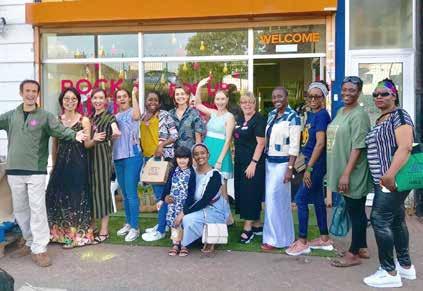
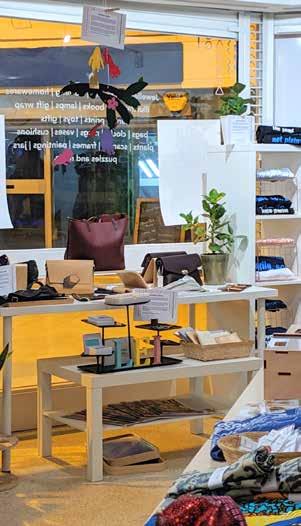
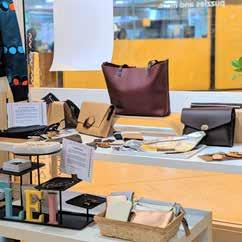
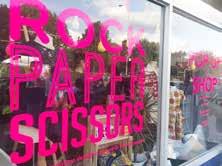
“ I think it is showing me that when you apply something and you’ve got the right support and you’re focussed, a lot can happen in six months... And how quickly and lifechanging some things can be. I’ve done so much in the six months, it’s unbelievable.”
- Participant

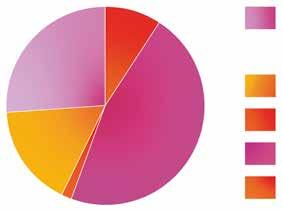
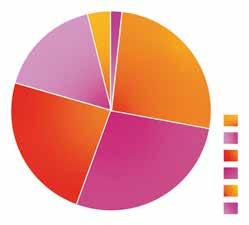

“The best thing about this was the timing […] I had just undergone a major operation, and I designed it all when I was recovering. […] for me to do this and have the opportunity to not be bored recovering in bed, because I was like I can’t move, I’m not supposed to do ABC, but my brain’s still working. And I’m a very active person, a very active member of the gym, I’m doing all these things, so to be stuck at home, it was the perfect timing.”
“Since coming here, every idea I’ve had they are like ‘try it out’. I haven’t heard anybody say ‘you can’t do that’! It helps me believe I can try anything!”













- Participant
- Participant
3 Programme cycles
102 Participants
47 Trading days
1132 Products sold







777 Types of products developed
3 Different locations for pop-up shops tested 206 Shop shifts shared
Revenue generated

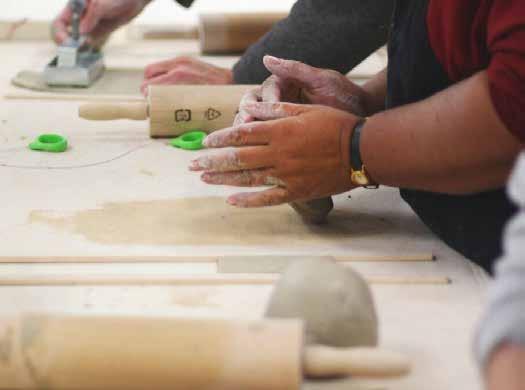
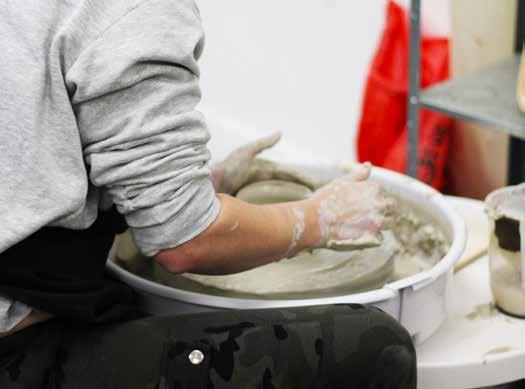
The Collaborative Design model prototyped six different types of programmes, including in food, ceramics, and woodwork. Most of these programmes ran for several months and took groups of residents through a process of designing products together to collectively test trade them.
With the support of food tutors, residents were invited to design fresh food products and menus that were then tested as catering offers.
Residents learnt how to design and make a range of ceramic homewares products as a collaborative to test trade.
Young people (aged 14-16 years old) were invited to learn how to design and make a woodwork product together.
Residents interested in making cakes were invited to start a cake-making collective, focused on fresh cakes or home-made cake mixes. Due to low interest, this never made it further than the Discover workshops.
• Engaged a diversity of people with different skills, confidence, and experience levels and shared roles and responsibilities amongst residents;
• Built close relationships and social capital amongst residents through a strong emphasis on collaboration and peer support delivered through shared decisions, production, and trading;
• Created a committed team that feels ownership over the brand and was more likely to continue production and trading together after the programme.
• Co-ordinating the team in a way which works for all residents can be challenging and makes it less inclusive for residents with varying availability and commitment levels;
• Setting and maintaining high standards for product quality can be difficult due to different levels of skills and aesthetic opinions amongst residents;
• Requires staff that are skilled in facilitation and collaborative working methods to support the development of a team that can make their own collaborative decisions without hierarchical structures;
• Replacing traditional mindsets about intellectual property and hierarchical structures with a collaborative approach and open source culture.

All programmes under this model were open to anyone wanting to learn how to design something, regardless of prior skills, experiences, or whether they had product ideas. These programmes brought together people from different backgrounds, skill sets, and ages, with low barriers to access, and got them to work together as a team, developing bonding and bridging social capital in the process.
Example
In all of the catering programmes, residents could bring food ideas from their culture and through a codesign process all those different ideas were developed into a unified concept or menu.
This model required individuals to work as a team and to find ways to be inclusive of anyone who wanted to join and be part of the team.
This model tested whether teams can be formed amongst diverse residents who were interested in testing a business idea. The significant amount of time spent as a team designing and making together created bonding and bridging social capital. Strong peer-to-peer connections were developed through frequent collaborative learning. Because residents were working towards a shared goal they had to collaborate from design through to test trading. Success under this model depended on collaborative team working and team effort.
Programme designers invested much more time in building strong team work in this model than in others. For example, all programmes had workshops where principles for team working were co-designed together that were often revisited throughout the programme.
This model allowed residents to input into all phases. Once they reached the production and trading phase, residents could decide to focus on specific tasks or roles based on their preference and availability. This was possible because they had a team and the team decided together who does what, often based on strengths or interests. Across most programmes, there were residents with less confidence and skills in computer work or public speaking, and this model allowed them to choose other tasks or pair up with someone more experienced whilst they learnt.
Example
In Slab, residents learnt about communication through a pair exercise. Two people were placed back-to-back and one had to describe a complex form and the other had to listen and make it with clay without asking questions. The exercise created understanding about different communication styles and provided an important opportunity to practice listening.
The Collaborative Design Model creates a business around a team, rather than one person’s business idea. As a result those teams felt more able to continue trading beyond the support of the initial programme as both time commitment and risk was shared. The catering businesses secured catering jobs inside the borough, whereas Slab struggled to continue producing without further training and trading opportunities.
This model allows residents to quickly prototype products and services and go to market to experience developing ideas and real-life trading with no or low personal risk. It is great for testing a collaboratively designed concept and gives enough data to develop it into a business model.
Partnering with experts to support or advise on product design and feasibility of scaling up production is useful, even if residents have design responsibility This is to create the best possible quality products and better business outcomes for the long term. Providing inspiration on what good looks like and how to produce in an efficient, yet collaborative way, often requires expertise or research.
There are different ways for residents to be involved in design, from designing product brand principles to product categories to specific design aspects like brand colours, patterns, or materials used.
Depending on the programme, different approaches are required. Food programmes generally allow for a high degree of product co-design, whereas in a making programme full of novices that do not yet understand the degrees of technical skills required for different products, product recommendations are useful.

For example in ceramic programme Slab, residents were taught how to make basic mugs but co-designed the handles and glazes.
Introducing a democratic process for decision making early on was critical, such as consent-based decision making. It took constant practise for the norms to develop into a team-working culture.

Everyone’s Kitchen was a Collaborative Design programme to develop a fresh food catering collective run by residents, which was later re-branded as Bowled. The idea for a catering programme came from residents who participated in Pantry, a programme to develop shelf-stable food products. Residents from Pantry tried catering for the first time at the We Make Our City festival and subsequently wanted to learn more about how to prepare and sell fresh food. A call-out was created that invited any resident to participate in developing a catering business. Residents who came to the intro sessions participated in workshops to imagine what might be in Your Bowl, a concept that accommodated multiple types of cuisine. This culminated in a practical workshop where residents brought their favourite home-cooked mains and in a collaborative process they created full dishes by adding different sides that can accompany the main. Twelve bowls were created, photographed, and tasted on that day, building a collaborative menu designed by the team.
Following this was a practice and testing phase. Residents used two larger events at Everyone’s Warehouse to test the menu with potential customers. During this phase, they shared and taught each other the recipes of the mains and practised making them as a team. The group also designed how best to serve their dishes. They set up an ordering and serving station with a back kitchen where team members had different roles. They created forms to receive feedback on taste, quality, look, price, and service as well as asking if anyone would use them for upcoming catering gigs. As a result of the collaborative design process, the concept and brand from Everyone’s Kitchen was changed into Bowled. This process was highly collaborative and fun, creating friendships amongst residents. However, when the bowls were tested at the events, challenges emerged around quantity and costs of ingredients as well as preparation time, and therefore some bowls were not viable from a business perspective. Those learnings were valuable for residents in terms of understanding what it takes to make it work, and menu principles were formed such as ‘simple to make.’
Following this, another newspaper call-out invited residents to join the catering collective Bowled by joining a two-day ‘Catering School’ with a tutor. In the Catering School, previous participants and new residents worked together with a tutor on designing
menu options, purchasing ingredients, preparing and cooking the menu, serving and tidying up, and as a team worked out timings, costing, and pricing. This gave all residents an opportunity to put their ideas into product design. Working with a tutor also ensured quality standards, taught hygiene, and introduced best practices on teamwork in the kitchen, as well as giving advice on production, costing, and pricing. Following a recipe-practising phase that was selforganised by residents, they started to test trade.
Once Bowled started to offer their services, they received regular business. They learnt how to take on an order, cost and price, and manage the team on the day. It was a huge learning curve for residents who had to figure out how to budget for large catering orders, transport the food safely and keep it warm, and maintain professional standards. They were charging London Living Wage for their time and managed to earn an income. Collaborative processes like digital costing tools that do the calculations for them, catering order sheets with task tick boxes, and collaborative shift rotas were designed to allow selfmanagement of the group. Making sure residents felt supported in learning how to use shared Google Folders, Sheets, and Docs was important as these tools were necessary to make it work and allowed transparency around equal workload. In these cases, the role of the programme designer was often to teach digital skills as well as developing tools like the costing and pricing tool.
Keeping the presentation of the dishes consistent and of high quality was a challenge, so residents worked together to start an internal recipe book that explained the cooking process step-by-step and included images of how the dish needed to look like when served. These programmes were highly collaborative as residents designed the concept, the recipes and menu, as well as the operational processes like kitchen management, serving, and food presentation.
Unfortunately, the collective had to stop due to the COVID-19 pandemic, but were later supported by another organisation in the borough that helped them develop different catering and food product businesses further.
“Normally to start a group there will be a lot of things involved like risk assessments and insurance…and I wouldn’t have even known where to start. But when I came here, and they said there is a kitchen that could be used for the community group, I was pleasantly surprised. I’d never seen anything like it before. It’s a really nice kitchen, and it’s really well equipped, and most places don’t allow you to have your children with you like they had - very welcoming.”



- Participant


What co-design as a team means and that it needs a different mindset
• Shared responsibility and shared ownership;
• It’s less stressful as you share the workload;
• It takes commitment to make it work as we’re relying on each other;
• It definitely is an adjustment - from individual creativity and control to collective creativity and working together - it’s a learning curve;
• It’s important to know when, where, what needs to be done and who;
• That we don’t want to let each other down;
• That everyone has personal triggers, eg. Food Hygiene;
• Finishing on a high note is important - achievements make teams;
• How important it is to build relationships before you’re in a stressful situation - let’s do something social first to become friends;
• It’s fun.
When asked about what the group learnt, Programme Designer Iris captured the following:
• Experiencing how ideas from concept stage are turned into actual products that we can deliver. Being part of all stages;
• The process from original idea to viable product and concept;
• How useful feedback from people is and the way we captured feedback;
• Bowled is different to Pantry in which the product development is in your control whereas in Bowled it’s a team effort.
“We
- Participant
all pitch in to help. People are concerned. It’s not pretense, people really care. Feels nice to know I am supported. […] I’m supported in the fact that if I can’t get something done, there is somebody who will do it for me. Or there is somebody who will know what to do or there is somebody who can help me do it. I am never alone, that’s what I’ve realised. I just have to be more vocal.”
“Discussing ideas with other people and being flexible is something that I have had to learn. I have enjoyed it a lot. [I am] working with people a bit better and discussing what I want to do. I am learning how to come across, how to be clearer with my ideas. Sometimes I have an image in my head and I do not know how to explain it to the other person so that they can see it the same way. Yes, it is interesting.”
- Participant
3 Programme cycles
41 Participants
10
Number of workshops
36

Number of products co-designed
2 Number of days of testing
8 Number of paid catering events

2 Number of inspiration trips
£1404
Revenue generated
In the Collaborative Production model, ten different programmes were prototyped, including programmes in growing, food, textiles, and homewares. Most of these programmes ran for several months and took groups of up to 20 residents through a process of learning how to produce pre-designed products that could be sold.
Because products were already designed, the Collaborative Production model allowed residents to focus on developing making skills for products. Product designs were acquired by either working with highly skilled designers who tutored residents how to produce their products, or by partnering with an existing business that was looking to scale its production capacity.
Residents learnt how to produce garments designed by a skilled designer.
Residents learnt how to produce cakes and breads that were test traded at events.
A partnership with the Victoria and Albert Museum which saw waste materials from the museum being used to teach residents to make benches and tables.
A series of programmes where residents learnt how to make sustainable, essential products with different materials. For one of those programmes, 20 young adults were employed via HM Treasury’s Kickstart Scheme to learn how to make essential food, homewares, and fashion products and test trade them at a pop-up shop called The Good House. The Kickstart residents developed the following trading brands: Geo, Wildly, Clayd, Loop, Thames 47. Other programmes included Clay:Works and Baked:Works for ceramic and baked products.
Residents explored indoor growing methods using hydroponic stations.
A partnership with design studio Wax Atelier to scale their sustainable wax products business by training residents to start a co-operative for production. A large group of residents joined the Discover and Learn phase and a smaller group of eight was later selected to join the production team, earning London Living Wage on a part-time, flexible basis.
• No need for specific prior experience or skills; any resident wanting to make or learn how to make was able to join;
• Removed the need to design and instead focussed on technical skills development, which was better for employability potential and work experience;
• Provided local production capacity and skills development in the borough;
• Allowed flexibility in production, by allowing residents to contribute based on skills, interests, and time. For example, some processes allowed piecework production, so residents could contribute as and when possible;
• Created higher-quality products since products were pre-designed and often market-tested. Programmes focused more on incorporating principles around sustainability, circularity, and open-source culture.
• Finding open-source product designs that are high quality and follow sustainability principles was difficult as there are not that many and often cannot be used for commercial purposes;
• When product designer(s) were part of the business collaboration, it was challenging to establish a culture of equal footing amongst designers and makers. Teamwork easily slipped into a traditional management and hierarchical culture;
• Required finding skilled tutors with technical skills, production experience, and ability to teach a diverse range of residents. Often times tutors did not have sufficient experience with adult education;
• Final production phases sometimes required selecting makers with most skill and potential, particularly if there were limited spaces, reducing aims of inclusivity.
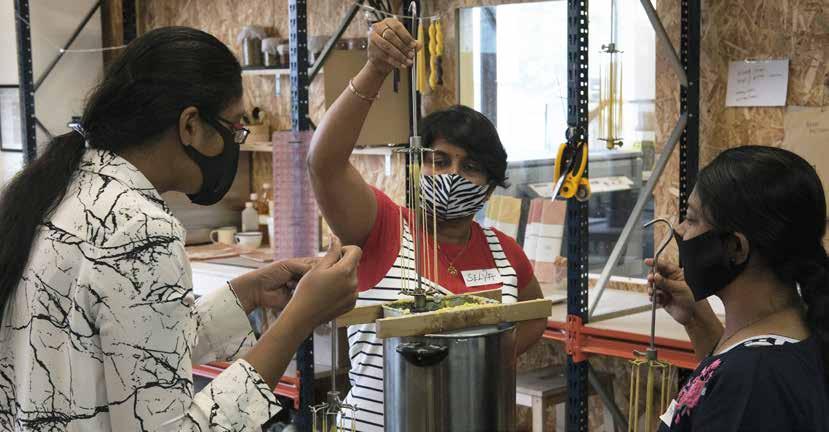

The Collaborative Production model required no prior experience and no entry criteria other than an interest to learn new technical skills and potentially join a production team. Learning was initially focused on the basics and then progressed to higher levels of technical proficiency.
Products that are simple to make and that could be made by piece work or flexible shifts worked best to allow inclusive participation. Most programmes had residents with childcare responsibilities as well as retired, unemployed, and employed residents. Residents set up flexible shifts to accommodate varying schedules.
By taking out the need to design and come up with quality products, this model was inclusive to anyone who wanted to learn rather than develop their own ideas. Often residents started to design their own products after participating in a programme as they had successfully acquired materials knowledge and technical skills.
The Learn phase created collaboration through shared experiences and peer-to-peer support on a unique learning journey. Generally residents worked well together, often developing more streamlined making processes. The resulting products all followed product design principles relating to sustainability and circularity, demonstrating how to make something that is good for people as well as the planet. This sparked a lot of collaboration around product experimenting in certain programmes where residents shared their existing skills and developed something new together. For example, in Wax:Works, some residents worked with the founders of Wax Atelier in creating new colour mixes and products.
Once the Learn phase was completed, residents often needed to self-organise to start producing and trading.
Wax:Works created part-time, flexible work for residents who joined the production co-operative. Many stayed on for about one year earning London Living Wage. Some also started their own wax businesses using their skills to design a brand and new product line.
For Wax Atelier, it created an alternative model for scaling their business with lower risk. The platform provided production and storage space, free utility, equipment, materials, and a start up loan to cover wages until orders were fulfilled. From a two-person business it scaled rapidly to a production team of 12 makers in a matter of months.
For residents who wanted to start their own businesses, the model did not provide enough general business skills as most of the business strategy and administration was done by Wax Atelier.
The Essential:Works programmes led to trading at The Good House, a pop-up shop based in Dagenham Heathway shopping centre, where products were sold to customers inside the borough. Other programmes in this model did not make it to market, sometimes reflecting that residents joined for learning reasons rather than trading motivations. Some programmes did not result in trading as they had no clear business model or viable market, for example the small scale of food growing developed in Future Food.
This model can create regular and flexible income and work if the products and recipes are already tested and have a market or trading channel. It is another safe way for residents to gain skills and experience in test trading business ideas, which can build the basis of a business case.
Whilst the focus in this model is on production skills, a key learning from past programmes is that teams need a high degree of team working and organisation skills to be able to continue producing independently. They also require skills development in business development if the desired outcome is an independent production collective.
Another recommendation would be to prioritise and source designs that are open source or collaboratively owned. This also needs to be captured in the partnership agreements with designers and makers. To pre-mpt any challenges further down the line about intellectual property of designs and commercial usage.
If this model is replicated in partnership with an existing business with the purpose of scaling or setting up additional production capacity, there could be benefits in separating the work spaces to allow different cultures.
For the collective to establish and maintain a selfmanaged, collaborative, and equal culture, it needs its own space and right to organise the way it wants. A clear understanding of the responsibilities and expectations of both parties can help.


Wax:Works was a Collaborative Business Programme run in partnership with design studio Wax Atelier in 2020 during the COVID-19 pandemic. Its aim was to test whether a production co-operative can be set up that is run by residents, and where designs and orders were provided by Wax Atelier. The programme started with a Discover phase, where 30 residents tried out making a dipped candle and waxed textiles and learnt about Wax Atelier’s vision for a production co-operative. There was then space for 20 interested residents who were able to attend all sessions to enter a three- week long Learn phase. In this phase residents received a small stipend that covered travel expenses to make participation easier. After the Learn phase, residents could apply to join the production team for the final Earn phase.
Twelve residents joined the final phase, which included a week of setting up a team and then a five week long production sprint that was paid at London Living Wage and helped Wax Atelier fulfil their Christmas orders. This initial Earn phase tested whether it was beneficial to Wax Atelier as well as residents to work together on production. Due to its success, Wax Atelier continued to work with the Wax:Works participants for more than one year before moving out of Everyone’s Warehouse into their own production space. Due to oversubscription, a selection process with decision points for residents was designed. To join the Learn phase participants filled out a survey to communicate availability and motivation to join. To join the Earn phase, participants were asked to evaluate their own skills and confidence on a bespoke Learning Journey Tool through which they assessed their own development. Ultimately, Wax Atelier selected 12 residents based on skill level, learning development, and ability to work as part of their team.
In terms of collaboration, residents learnt how to make products as a collective fulfilling orders coming in from Wax Atelier. Production was possible to do in flexible, part-time shifts, sometimes even from home, making it inclusive but less collaborative.
Participants had to make team decisions like how to communicate with each other. It was collectively decided to set up an online Slack channel, as not everyone had a smartphone and could use messaging services. It was used to share inspirations, learnings, rotas, and organise meetings.
Residents encountered a challenge around fair allocation of paid shifts when there was not a clear and process for organising extra shifts. It was solved by helping prioritise work tasks for participants with the lowest number of completed shifts. Team bonding was slow as work was organised around small team shifts, making it hard for the whole team to work together. Because of this, it often took a programme designer to facilitate conversations and work through challenges. It was also difficult to integrate a management structure based on quality control with a more collaborative way of working. Despite trying to keep democratic processes intact throughout the production process, meeting production deadlines required significant oversight and quality control by more skilled members of the team, and management structures reverted to hierarchy very quickly.
Initially the plan was for the production collective to work independently from Wax Atelier, allowing them to manage their own space and team in a more horizontal way. This was not possible as space constraints meant that the space was shared between Wax:Works participants and Wax Atelier, who needed to increase their admin staff to support their growing business. This contributed to tensions and unhelpful hierarchies within the group, and consequently the Wax:Works team became smaller the following year.
Some Wax:Works participants were keen to start their own collective. Every One Every Day provided a budget for product development and advertised a call-out inviting residents to join a new business programme. This also would have helped the existing participants learn business development skills, which they had less exposure to within the working arrangements with Wax Atelier.
Unfortunately, not enough new residents signed up to make this a viable programme. This together with reliable income from Wax Atelier, meant there were less incentives for residents to start their own business. Despite these challenges, Wax:Works generated strong business outcomes.
The programme successfully scaled a small maker business by providing training and skills development to a group of part-time and flexible workers, many of whom were able to leverage their work experience for future work.
“We are working on a new way of forming businesses and collectives. Rather than sending a CV, having an interview and receiving a Yes or No, we are working together and experiencing each other’s company. So whether we do go through to the next stage or not, we are taking away skills. Rather than gaining nothing, we’re gaining something.”
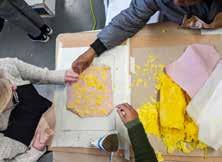
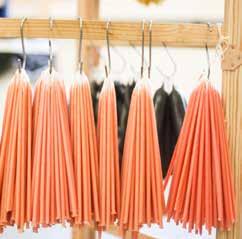

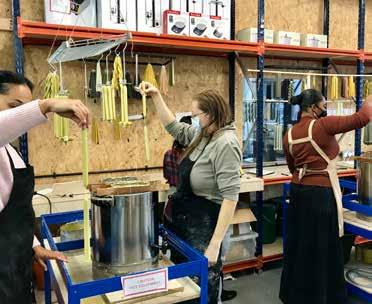

- Participant


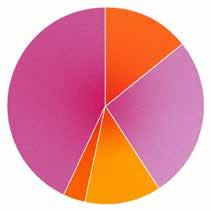
Programme registration data
“I love how we came together and bonded whilst creating beautiful natural products. In the world today we are losing the connection with one another on a deeper and more profound level, and the art of working with natural materials, following old ways of doing can create a wonderful atmosphere of togetherness. This is what has brought me to this co-operative adventure of Wax:Works.”
- Participant

“After enduring long term mental health conditions I realised that I needed a creative outlet, which I had long abandoned when life got in the way. Wax:Works affords me the opportunity to explore and develop my creative talents further, and it connects me to other inspiring members of the community. Wax:Works for me has been an Oasis in the midst of COVID-19.”
Participant
Discover phase


1 Week
Taster workshops
Learn phase
5 weeks
Decision whether to apply
Set up phase
1 week
Technical workshops
Learning journey documentation
Interviews and decision on final team
Team building
Earn Phase
5 Weeks
Fulfilling product orders
53 Participant sign ups
28 Participants in discover phase

20 Participants in learn phase
12 Participants in earn phase

2 Types of products made
7 Participants who started or developed their own business
16 Months of collaborative production partnership

Evaluation and team decision on the future
£8823
Revenue generated (5 weeks)
In the Collaborative Shop model, two types of programmes were tested, a co-operative coffee shop and a retail pop-up shop. These programmes invited residents to complete a learning programme to develop retail skills and then test these skills at pop-up shops with the possibility of developing a permanent shop.
Residents learnt barista skills as well as how to set up a coffee shop and cafe. Those who completed the learn programme could then apply to run the cafe, called Grounded, for a trial period of ten months.
A pop-up shop space for residents to sell their products together. The concept was an experiential retail space with free making workshops and an exhibition area, both themed around circular, essential products and sustainable making and repair. The Good House was open for two months.
• Offered multiple roles and responsibilities that required different strengths, from team coordination and communication to production and financial management. This allowed a diversity of residents to be involved based on abilities and interests;
• Provided part-time, flexible work and strong retail experience;
• Provides a valuable model for investors or existing businesses that want to achieve social outcomes focussed on diversity and inclusivity as well as financial outcomes.
• Incubated a team that shares responsibilities, rewards and ownership, and co-developed processes and practices to operate as a nonhierarchical, collaborative, and equal team.
• Subsidies required to cover costs of rent, materials, and wages during initial years of business;
• Balancing the provision of support with creating autonomy. The Programme Designer had to constantly assess when and how to support while also enabling independence;
• Helping participants maintain a learning and growth mindset beyond the initial programme to generate commitment to longer-term business outcomes;
• Creating incentives for participants to develop the business. The two programmes secured grants for subsidies, but did not set up economic incentives for participants to put in extra time for business development;


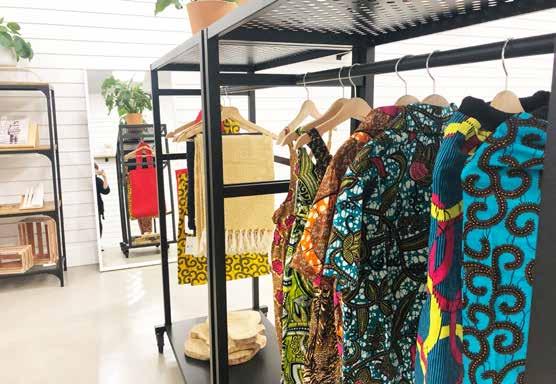

The Good House trading collective used the government Kickstart scheme to create opportunities for young people in receipt of Universal Credit to design, make, and sell sustainable and essential products. This was a rare model for Every One Every Day, which always tries to be inclusive of everyone.
In contrast, Coffee:Works was open to all residents and encouraged participation by enabling anyone to join the Discover Phase before c applying to the next phase of the programme. Inclusivity was further supported through financial subsidy for travel and time.
A selection process was used to identify eight team members to run the cafe. This process was co-designed with participants and was based on a combination of peer nominations, commitment, and ability to do shift work, as well as a demonstration of individual skills and key attributes.
Sharing responsibility for running the cafe created part-time, flexible work for participants who had a variety of other responsibilities, including other jobs, caring, and childcare. It also meant residents could do part-time work whilst still receiving benefits. For some this was their first employment.
The open and inclusive recruitment process, the shared goal, and the experience of learning and trading together developed strong bridging social capital amongst a group of diverse residents who were unlikely to have connected outside of the programme; The success of this model depended on how well residents worked together as a team. The programmes focused on building team skills, introducing collaborative or consent-based decision making processes, setting up working groups, and creating flexible roles, shared rotas as well as operational and HR processes such as handovers, reflections, and learning journey assessments.
The Good House tested whether a concept shop for sustainable and essential products together with a workshop and exhibition space would be viable. During the two months it was open, The Good House helped young people learn how to work together on a rota to sell products and teach others to make through a series of workshops. Whilst the traffic of the shop was high due to the welcoming atmosphere, the free workshops, the exhibition and its location within a shopping centre, sales were low and it did not create enough takings to generate a sustainable business model. It is hypothesised that the price points for goods sold in the shop were too high for the customer base of the shopping centre.
Coffee:Works and Grounded created a model for training and supporting residents to run a cooperative coffee shop. Because the coffee shop is subsidised by a developer to help generate commercial activity in a new development, the foot traffic is still too low to predict whether Grounded can become a long-term sustainable business.

Developing the right incentives for residents to feel motivated and committed to keep learning and growing the business. The approach of providing secured hourly wages for shifts limits participants interest in investing in the long term.
If Grounded is able to generate more sales through increased foot traffic, there will be an opportunity to provide ownership equity of the co-operative business.
Also, the concept of a co-operative business was not widely understood, but generated excitement and motivation. Working with a co-operative development agency or arranging mentorship with an existing co-operative is helpful to provide opportunities to learn about co-operative goals and culture, legal requirements, and collaborative management.

Coffee:Works was a programme for residents to learn barista skills and how to run a cafe. Residents who went through the programme could apply to jointly run a co-operative cafe for 10 months, earning London Living Wage. The programme invited 20 residents to join a Discover phase with coffee-making taster workshops. Following this, residents could apply for one of 16 places to join a four-week long Learn Phase and two weeks of setting up before launching the cafe. One month into trading, the initial team was reduced to a final eight who were selected to keep operating and managing the cafe for the initial 10 months.
This selection was based on a framework and selfassessment tool describing the skills, experiences, and attributes needed to be a great team member of Grounded. The framework included technical skills, customer service, teamwork and commitment, and outlined what was required at minimum, advanced, and expert levels. Participants were invited to recommend up to three fellow participants for the final team, and doing so reflect on complementary strengths needed within the team. Because the selection process was codesigned, residents felt agency in the process— although it was clearly very disappointing to those who were not selected.
This project was a partnership with local developer Barking Riverside Limited (BRL) to help open and activate a newly built community ecology centre for the surrounding area. Grounded launched in July 2021 and twice secured a subsidy from the developer to cover costs and wages until summer 2024, with the potential for continued support when the business became viable.
The group was quite diverse, with residents of different ages, backgrounds, skills, and confidence levels. Some joined because they love coffee, others because they were looking for employment. Some had lost their jobs due to the COVID-19 pandemic. For some, the cafe was their first job and a way to gain experience and additional income alongside benefits. Due to its flexible nature in sharing shifts, and having a maximum of two shifts per week, it allowed residents to fit this in with other responsibilities. Strong collaboration is needed to make the Collaborative Shop Model work.
This was achieved by designing a programme where residents worked together intensely over 7 weeks. In working together toward a shared mission, they practised learning together, supporting each other, solving problems, completing tasks, and making decisions collaboratively along the way. For example, they decided on the menu, how to set prices, where to store cups, glasses and stock, and how to assess and manage safety.
The model allowed for different strengths and peer support whilst also framing everything as a learning experience. For some residents, their learning journey started working at the cafe as their first job and now, one and half years later, they are creating and presenting monthly financial and health and safety reports, often times to the developer’s head of finance.
The Grounded team set up working groups (called ‘cooperative committees’) on hygiene, communications, stock and finance. They learnt iteratively how to selfmanage as a small team, and the different strengths amongst the team have often resulted in them taking leadership and responsibility over key areas such as operational spreadsheets, daily checks, rotas, or handover notes. Beyond the initial programme the Grounded team received support in developing more traditional business skills, such as writing a business plan and pitch, sales analysis, communication strategies and co-designing hot food options.
In 2022, The Wilds won the regional and national Royal Institute for Chartered Surveyors (RICS) Community Benefit Award, which recognised the resident-led cooperative cafe. At the time of writing, Grounded has been operating for two years. It has created part-time, flexible work for eight residents, trained 3 new staff members, and sales are increasing. As the population grows in the local area, there is the prospect of significant increases in footfall, which would help increase the customer base. In 2023, Grounded will seek to incorporate. To support this, Grounded received a local business development support programme and grant from BDGiving.
“These programmes gave us the confidence and some of the practical skills and practical experience in converting our ideas into a reality.”
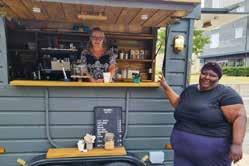
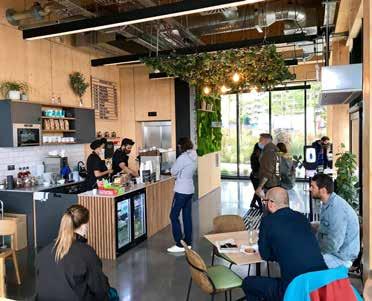
- Participant
“Everyone has input, so much knowledge and wisdom and their own experiences and what I love is how humble everyone is. I’ve also learnt that one should be understanding as everyone learns at different paces and different ways.”
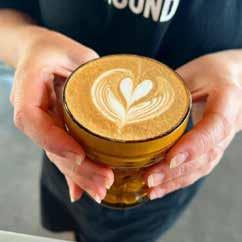
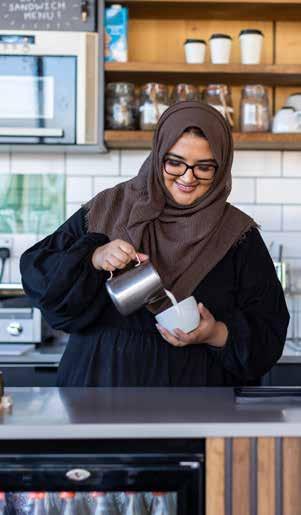
- Participant

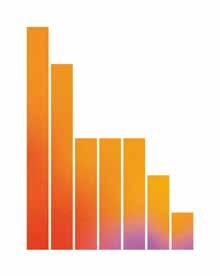

“A few of us on the stock team met up after the cafe closed a couple of weeks ago to count stock and discuss reordering. We talked together as a team about moving forward with new ideas, new products to sell, about customer feedback that had been received about certain items and it really felt like we were all super committed to making this work and understanding of each other’s input. At that meeting I felt like we worked so well together as a team and the processes that we had developed and put in place with stock counting and ordering etc. Over the past few weeks were really coming together. It felt so good!”
- Participant


1 Programme cycle
20 Participants in discover phase




14 Participants in learn and launch phase
8 Participants in final team
3


New staff members trained since launch
22 Months of trading since the launch
3 Successful business plans or funding pitches
£66,056 Revenue generated (July 2021 - April 2023)
1
Collaborative Business Programmes built strong relationships and bridging social capital
The programmes bring together diverse groups of residents with shared interests in learning new skills. Participants work collaboratively, providing mutual support and building friendships. This creates a sense of community and social capital, both bonding and bridging, which is highly valued by participants.
“I have loved working with the group and feel like we have grown so much together as a team. It’s been so lovely to forge friendships and although at times there have been ups and downs, I see us all as a little family now. It’s a wonderful thing having the help and support from everyone in the group and I hope I have been a helpful and supportive team member too.”
4

These models helped participants learn important business skills quickly and with little risk and financial investment
The programmes offer an opportunity to learn important business skills quickly, allowing the fast prototyping of concepts and products, and gaining insights by test-trading, without the need to take on personal risk. The inclusive design supported hundreds of residents try something new, gain confidence, refine their products, test trade, and convert their ideas into a reality.
“Doing the Coffee:Works Learn Phase and then actually working in a cafe, was one of the most amazing periods of my life. It’s the next level of learning and experiencing the learning into real life practice. These programmes gave us the confidence and some of the practical skills and experience to convert our ideas into a reality.”
Collaborative Business Programmes built strong participation outcomes, particularly peer-to-peer learning and collective action
Programmes were designed to see if a group of diverse residents could collaboratively learn and work together. All programmes had aspects of peer-topeer learning and required groups to make decisions together, organise tasks and responsibilities amongst themselves, and benefit from working together.
Collaborative Business Programmes fill an important gap in social infrastructure between neighbourhood activities and formal education and support opportunities
The programmes help residents learn skills, gain confidence and build networks. These programmes are more accessible and inclusive than formal education, allowing participants to develop and test ideas for products and businesses that are good for their neighbourhoods. They are designed to be inclusive so they can fit around people’s lives, removing barriers to involvement for groups who often are unable to participate. Approximately 30% of participants joined more than one programme with one resident joining 16 programmes.
To generate more business outcomes, partnerships and integration into the existing learning and business systems of a place is necessary
Every One Every Day’s Collaborative Business Programmes have created business outcomes, but follow-up support is clearly needed to help participants and their businesses take the next step. Partnerships with potential funders and integration into the existing business development support entities is necessary to make these businesses self sufficient and sustainable.
The platform approach could be further iterated to provide continued business development support and collaborations among start-ups at an affordable cost and lower individual risk. Some early tests were made through the Co-op School, a programme that introduces co-operative and community interest company models and its benefits to residents.
“I think it gives you confidence, it helps to raise you to a new level. Before that, you think you couldn't do something, but once you start going on that learning journey, you start feeling like you can do it and then you get ideas of other things you'd like to do and do more and just to raise it up more of a level. So, the support needs to be on every level, to help with that. If you see what I'm saying? Because there's a lot of support at the beginning, but then going on, it needs to, definitely, keep going.”
Each model builds upon the others, testing different aspects, and none of them is superior to the others
The first programmes tested the Collaborative Brand Model, which demonstrated a highly inclusive way for individual residents to learn new skills and develop their own product and business ideas. The Collaborative Design Model was built to test whether a more collaborative approach could work, where residents would design product and business ideas together as a team. Both models emphasised designing as an essential element within the process.
This highlighted challenges regarding product quality and designing as a skill that needs to be learned in addition to technical skills. Hence, the Collaborative Production Model was developed to test an approach where residents focused on learning technical skills and production methods. The Collaborative Shop Model tested whether the inclusive and collaborative approach could create a more permanent shop business, where residents also needed to learn more traditional business skills like business planning and production models.
The integration of this approach within the overall participation platform, specifically the emphasis on iteration, enabled the emergence of new models and approaches over time and in response to external developments.

An example is the adaptation of the approach to the conditions thrown up by the COVID-19 pandemic, which drove a rethink about what was produced by the local economic systems, as well as how they are produced. The result was a new set of product design principles which guided the development of the Collaborative Production and Collaborative shop models.
The framing of ‘Collaborative Business’ excites residents but also raises expectations that are not always met
Some residents' expectations were not met by their experience of the programmes despite experiencing participation outcomes.
This raises the question of whether naming the programmes 'Collaborative Learning Programmes' could excite residents and drive participation in similar ways, whilst managing expectations and focusing on learning rather than only business outcomes.
In total, 58 Collaborative Business Programme call outs were made with 42 programmes going ahead. Some programmes ran multiple times, but no two programmes were designed and delivered in the same way, rather each programme was built iteratively upon lessons from previous ones after a developmental evaluation process.
Design and prototypes of Collaborative Business Programmes
Some programmes did not make it to the Selling phase, in most cases this was due to either low interest amongst residents or due to the COVID-19 pandemic.
Iterations and scaling of programmes and models

Rock Paper Scissors x 3
Pantry x 3
Imagination Space x 2
Everyone’s Kitchen
Launch Lab Sprint
Bowled x 2
Knit
Sauced
Graphic Slab

Super Cake
Capsule Collection
Future Food
Collaborative Brand model
Collaborative Design model
Collaborative Production model

Collaborative Shop model
Contraction due to COVID-19, design of Essential Living
Re-emerging with a focus on Essential Living and livelihoods
Focus on learning programmes
Essential:Works
Wax:Works
Essential:Works - Kickstart Programme: Homewares, Food, Fabric



Essential: Works Maker meet ups
Re:Works
Wax:Works
Baked:Works
Paper:Works

Key Coding Learning Programmes Collaborative
Coffee: Works and Grounded
The Good House Maker-in-Training: Ceramics Wood Fabric Gardening Plastic Baking Cooking
Maker-inTraining Digital
Food:Works

The Every One Every One Day project aims to foster a sense of community through shared activities. Making food has been a key shared activity throughout the project.
The Great Cook project, which focuses on learning new cooking skills, batch cooking, and eating together, has become a catalyst for many other food-related projects. These projects have introduced residents to other cultures through food and helped them develop basic and advanced cooking skills.
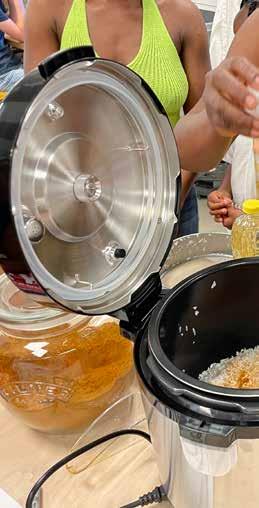
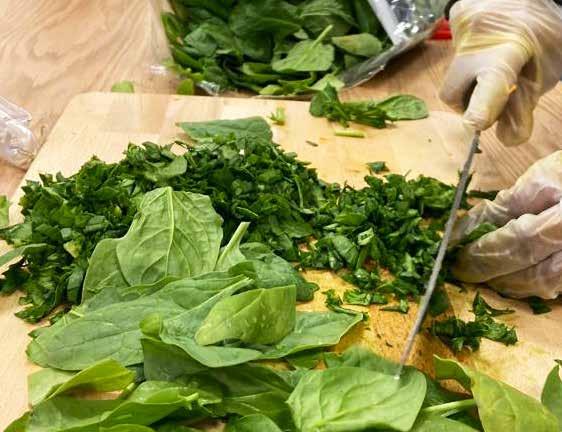
While the Barking neighbourhood shop and Everyone’s Warehouse had community kitchens, the Heathway shop and the Rose Lane shop did not. However, the teams behind these shops collaborated with other local hubs and organisations that had kitchen facilities, or they came up with innovative ways to hold cooking events within the shops.
For example, the Heathway shop launched Plug-In, a project that used an air fryer to cook and bake foods. The Rose Lane shop teamed up with the Marks Gate community hub to strengthen relationships within the community and provide a larger space for activities.
The Great Cook project, which focuses on learning new cooking skills, batch cooking, and eating together, has become a catalyst for many other food-related projects.
The Thames shop team worked with a local hub, Sue Bramley Community Centre, to create the Farm2Fork project, which taught residents how to grow and harvest using an aeroponics unit. The project also had a circular element, with leftover vegetable scraps being turned into compost.
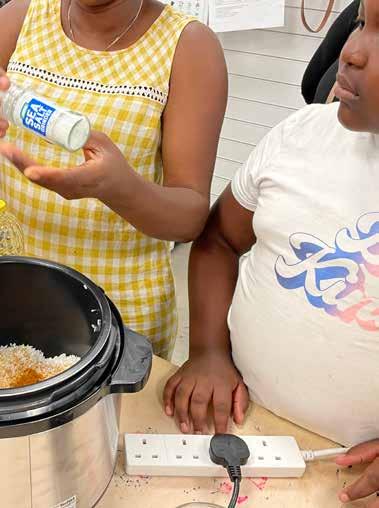

The Make It! Festival incorporated an Open Table this year, where The Good Food Collective catered for the event with healthy and fresh recipes. The Big Picnic, a cross-borough outdoor celebration, also encouraged residents to bring a dish to share and utilised local green spaces.
Eva, a local resident in Marks Gate, introduced Polish recipes through the Great Cook project, leading to conversations about other dishes from Poland and inspiring residents to introduce foods from their own heritage. These projects have been a wonderful way for residents to learn about different cultures, build connections with others, and strengthen cohesion within the community.

These projects have been a wonderful way for residents to learn about different cultures, build connections with others, and strengthen cohesion within the community.
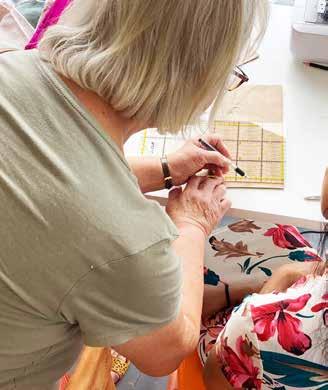

Make Your Own is a textile and fabric-based project that has been developed from several projects, such as Oh Sew Easy, Handmade Wardrobe, Share and Mend, and Upstuff, under the Every One Every Day initiative. The project shares similar key elements with the aforementioned projects, including skills-based learning at all levels and a focus on reducing waste. However, Make Your Own has a distinct focus on circularity, and it sources most of its materials from waste, deadstock, or leftover materials from other projects.

The project emphasises skill-building to mend and alter clothes, and it encourages experimentation with new techniques and ideas. Make Your Own also aims to foster a sense of collective ownership among residents and to address skill-learning needs with frequent and accessible participation opportunities. The project intends to create a vibrant and diverse community of sewers and learners, who can bring new life to old items, create new friendships, and contribute to a more sustainable future in the borough.
The idea to start a sustainability-focused sewing project came from conversations between project designers and residents during the 2022 summer programme. Many residents started coming to use the sewing workshops in the Heathway and Ripple Road shops on a regular basis to work on their own projects. Following the Summer Programme, the teams in Heathway and Barking set up co-designs with residents to tease out ideas that would form the basis for the Make Your Own project going into the next programme.
The project emphasises skill-building to mend and alter clothes, and it encourages experimentation with new techniques and ideas.
During the autumn programme, there were 12 resident-led Make Your Own sessions, and several residents participated in these sessions. To ensure that everyone had access to the machines for their own sewing projects, the Heathway team experimented with an induction to the sewing workshop. The induction was co-designed with a resident who already dedicated a lot of their time to supporting residents to develop their sewing skills in the shop. The team also set up a Whatsapp group chat for users of the sewing and textiles area in the hope of encouraging residents to selforganize around the use of the sewing area and to create a place for residents to make new connections with other keen sewers.
Make Your Own not only provides opportunities for residents to participate in collective skill learning and sharing but also enables them to save money on purchasing new clothes and on tailoring services. The project equips residents with the tools and knowledge to alter clothes and other household items themselves. Since the project began in early Autumn 2022, several residents have used the sewing area to alter their clothes and household items.
For instance, one resident who visited the shop to take part in an induction later returned to work on their own clothes, while another resident who visited on an almost daily basis for several months spent their time working their way through 27 pairs of trousers that needed altering after having lost weight.
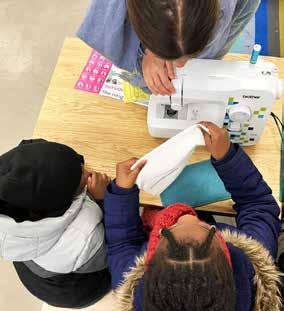



The project equips residents with the tools and knowledge to alter clothes and other household items themselves.

The Tomorrow Today Streets project, developed in collaboration with Ikea’s Live Lagom Programme, was launched in June 2020 to help connect residents with their immediate neighbours. Although restrictions were tight and there was a high sense of vulnerability, it gave neighbours the opportunity to connect online and build relationships before they could plan things in person. The project model was developed with the intention of reducing isolation, looking forward and planning for better times, as well as creating resilience within neighbourhoods in case this was to reoccur.
Following an application process the Every One Every Day team then matched up neighbours that were close by to form street and then worked with them to contact other neighbours to start planning together - initially online then in person. Project starter kits were developed and distributed to participating streets. The starter kits included useful items that could support the residents with their sessions. Each Tomorrow Today Street had a Project Designer assigned to it, who supported them with all aspects of the project.
The Tomorrow Today Streets project was launched in June 2020 to help connect residents with their immediate neighbours.
Over 60 streets applied and the connections built during this time were beneficial for many. Once the restrictions were lifted, some of the streets had Street Parties -of varying sizes dependent on the confidence of the residents post COVID-19 pandemic.


Oglethorpe Road formed a Tomorrow Today Streets street team of three neighbours. The team came together in June 2020 and spent the next five months getting to know each other, connecting and building the team. They attended workshops, promoted Tomorrow Today Streets to their neighbours with flyers and newspapers, created a Facebook group for their street and a WhatsApp group chat for the team for easy communication. All the planning resulted with building a beautiful community garden on a green space on their street on a sunny day in October 2020. This was all done as a small group-respecting social distancing with the support of two Project Designers.

Children joined in after school by helping to fill the beds with plants and took away Spider plants that one of the team members gave out for free.
Neighbours passing by stopped to find out more about the garden and Tomorrow Today Streets project and helped fill the raised beds with soil. Children joined in after school by helping to fill the beds with plants and took away Spider plants that one of the team members gave out for free. The community garden helped people come together and create something positive despite the difficulties of the past year.

A key aim of the Every One Every Day project is to spread the adoption of participatory methods and approaches to other places.
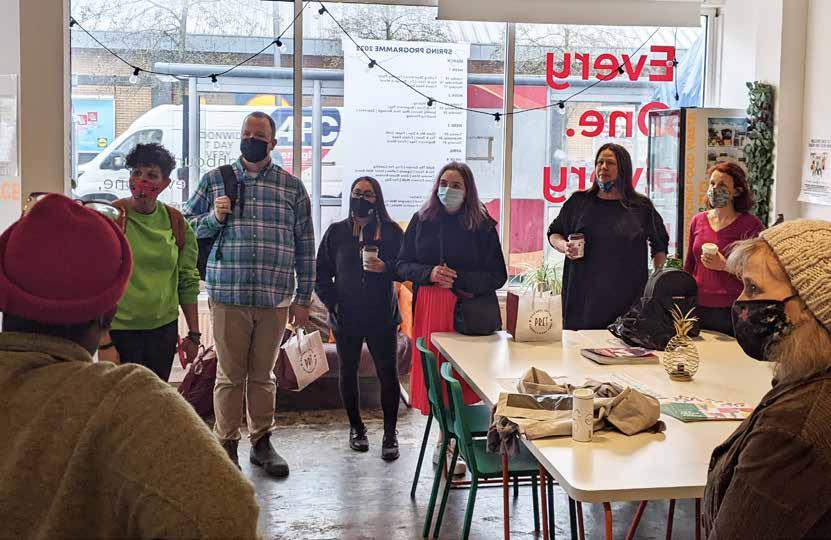
The Cities Programme aimed to help other cities, organisations and institutions to implement local participation strategies by drawing on the learning and experience of delivering Every One Every Day in Barking and Dagenham and the partnership work in Canada, Scotland, and with IKEA (see below).
This would be supported by publishing a comprehensive, initiation-to-implementation learning approach which takes city teams through each stage of establishing a local participatory platform and ecosystem.
This tool kit is a primary focus of the work being carried out by the team in 2023 and will be published at the conclusion of the project mid-2024.
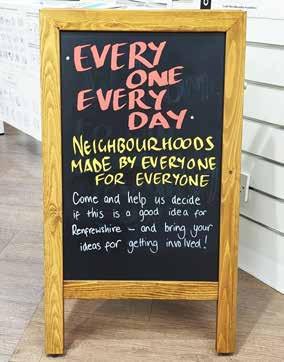
Participatory Scotland is a partnership with Corra Foundation, a registered charity and funder in Scotland that invests in local communities. The partnership aims to build the funding, learning, and conditions to implement the Participatory City approach in Scottish cities and towns.
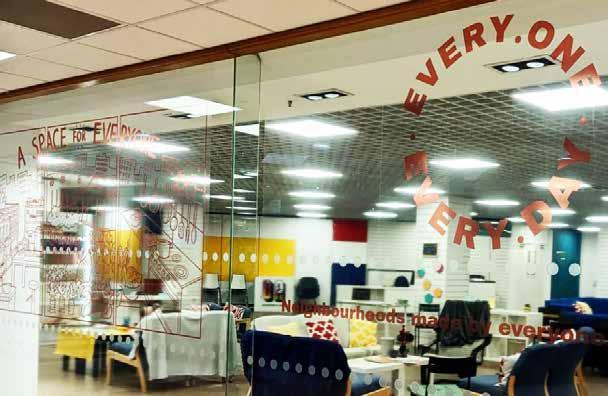
Prior to the COVID-19 pandemic, the plan was to conduct feasibility studies in six localities, with the aim of a few localities going on to develop full-scale participation systems. The pandemic forced this plan into an 18-month hiatus. In 2022, one locality, Kirkcaldy, entered the feasibility stage.
A temporary shop space was opened on Kirkcaldy high street to introduce the concept of practical neighbourhood participation to local residents and to connect this to local themes, ideas, and opportunities. The results of this feasibility stage are currently being reviewed and will inform the future direction of Participatory Scotland.
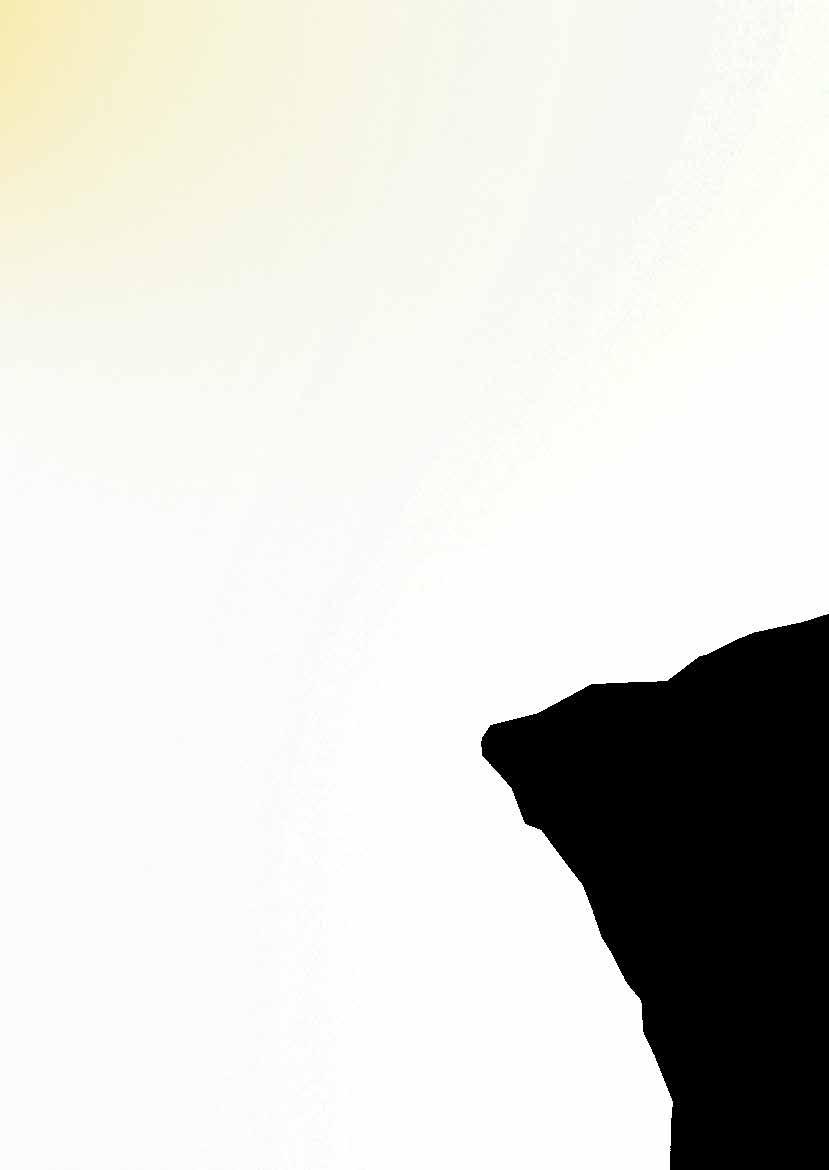
Every One Every Day Kjipuktuk / Halifax is the first adaptation of the Every One Every Day project to be implemented outside of the United Kingdom. It is based in the city of Halifax, Nova Scotia, and is hosted by the Mi’kmaw Native Friendship Centre, a community centre that provides culturally relevant programs and services for First Nations, Metis and Inuit Peoples, in the urban context. Halifax was one of three potential Canadian cities exploring becoming a fully-fledged participation platform.
Despite the challenges of launching a project during the COVID-19 pandemic, the project opened formally in March 2021. Since then, it has hired a team of project designers and support staff, opened its first neighbourhood shop, and co-designed four programmes with local residents.
The approach in Kjipuktutk / Halifax has adapted the design developed in Barking and Dagenham to its own unique context; Specifically, working to integrate the participation systems approach into a broader ambition to create opportunities for learning and action around Truth and Reconciliation at the neighbourhood level. This means working within their team, local organisations, and residents, to activate their Truth and Reconciliation Framework and support the emergence of projects that invite respectful sharing and learning around First Nations, Metis and Inuit culture.
As the first site outside Barking and Dagenham to adapt elements of the Participatory City approach, the experience of partnering on the implementation of Every One Every Day Kjipuktuk / Halifax has generated considerable learning about the necessary components of a city learning approach, including the support required at both the strategic and practitioner levels. It has also illuminated the unique challenges of working across geographies and contexts to implement approaches that aim to support and grow participation culture.
A range of learning approaches have been implemented including;
• A study trip to Every One Every Day in Barking and Dagenham including experiential learning alongside the Participatory City Foundation team;
• Coaching from PCF staff including Tessy Britton (founder of Participatory City Foundation and originator of the participation systems model) and experienced project and programme designers;
• Shared tools, materials and strategies for local adaptation.
Every One Every Day
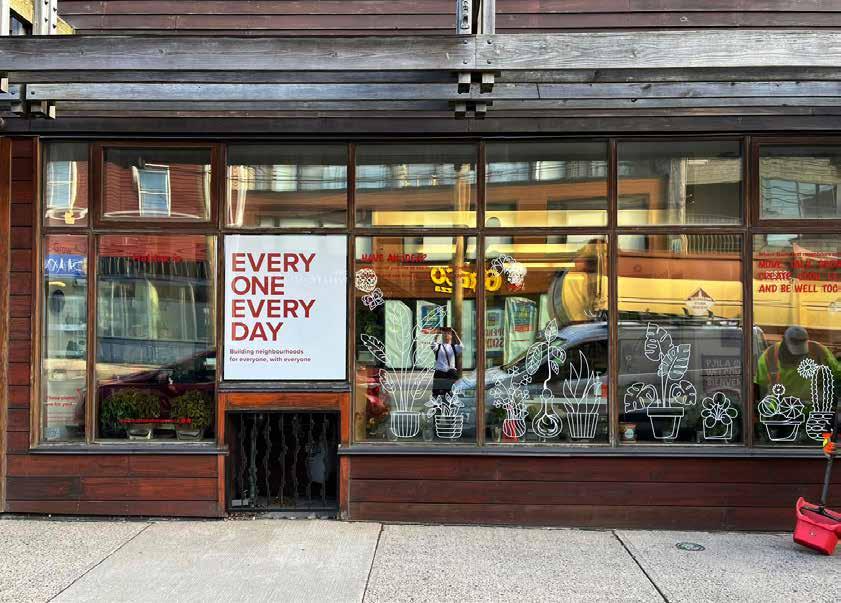
Kjipuktutk / Halifax is based in the city of Halifax, Nova Scotia, and is hosted by the Mi’kmaw Native Friendship Centre, a community centre for the urban aboriginal community.


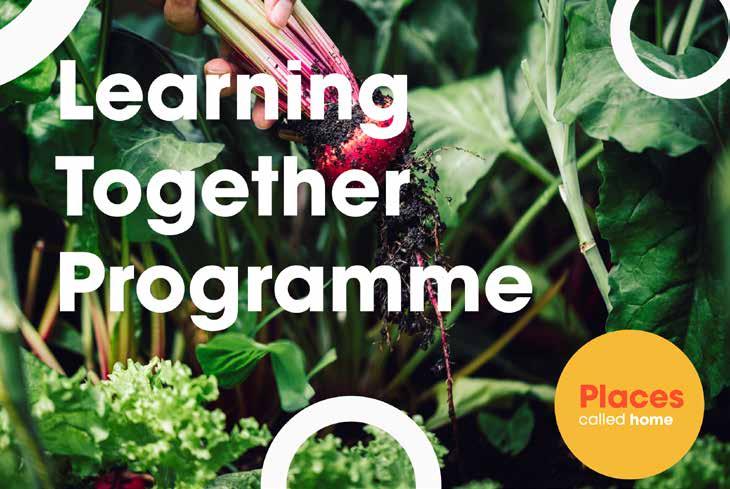
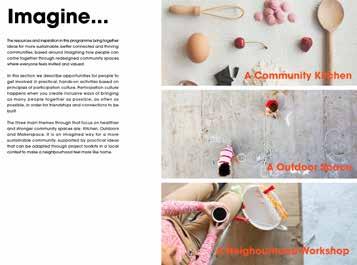
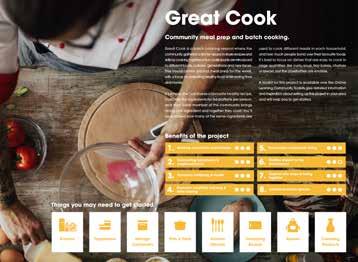
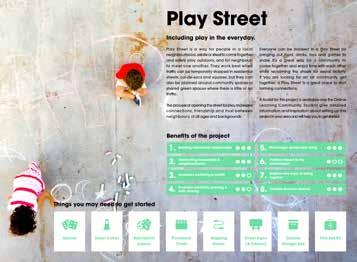
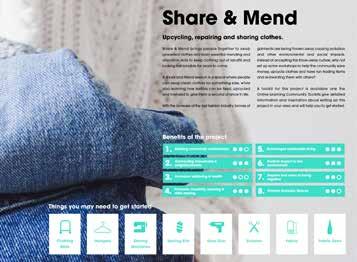
Places Called Home was a partnership between The National Lottery Community Fund, IKEA, Middlesex University, and Participatory City Foundation, which piloted an approach to inspiring, enabling, and resourcing local communities to adopt practical participation projects as a way of creating the neighbourhoods they want.
The project ran between June 2021 and July 2022, and saw community groups across the United Kingdom apply for resources and support to implement a series of neighbourhood toolkits designed by Participatory City Foundation and based on the Tomorrow Today Streets project models.
Participatory City Foundation staff then supported applicants in a series of online workshops to implement the tools locally.
Over the course of the project over 270 residents and representatives of groups downloaded resources from the sharing platform, with 70 people joining online workshops to understand how to implement neighbourhood projects.
This pilot was a valuable exercise to help understand the core requirements of an online learning environment that helps others adopt the participation model.
The findings have been incorporated into the learning strategy which is being developed by Participatory City Foundation during 2023-24.

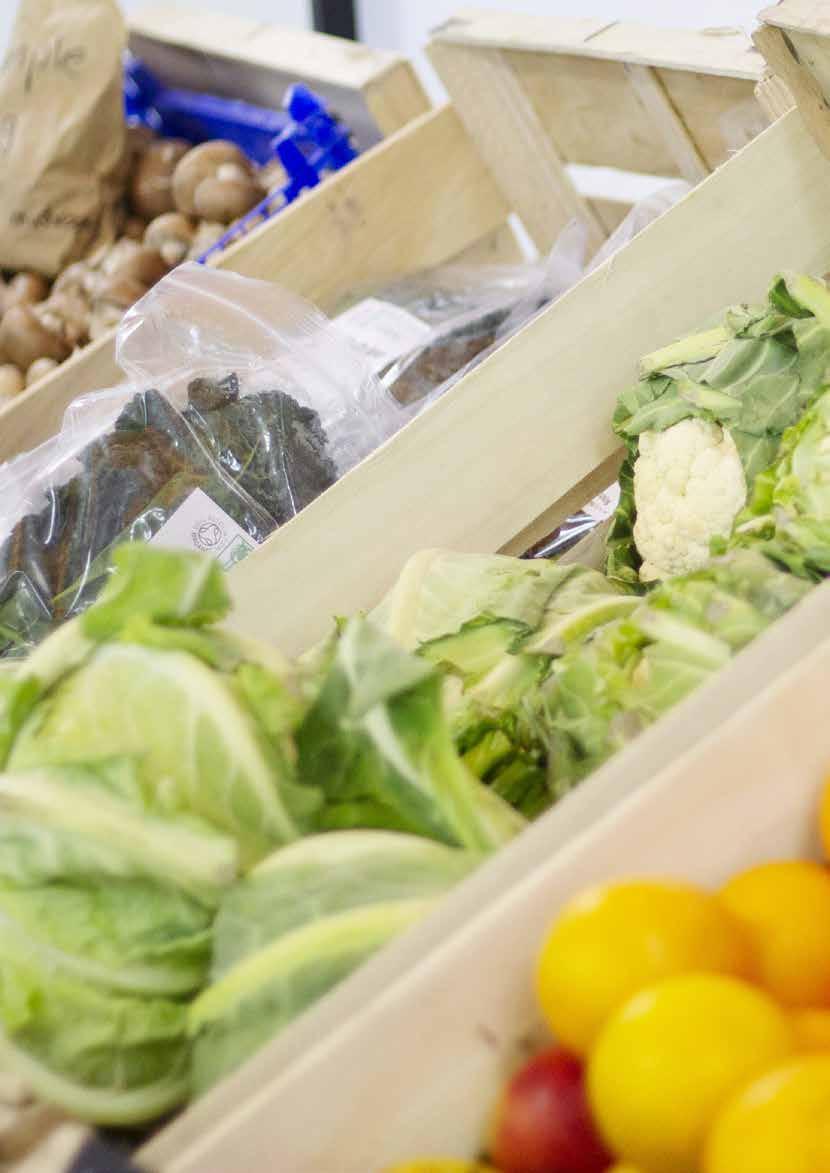
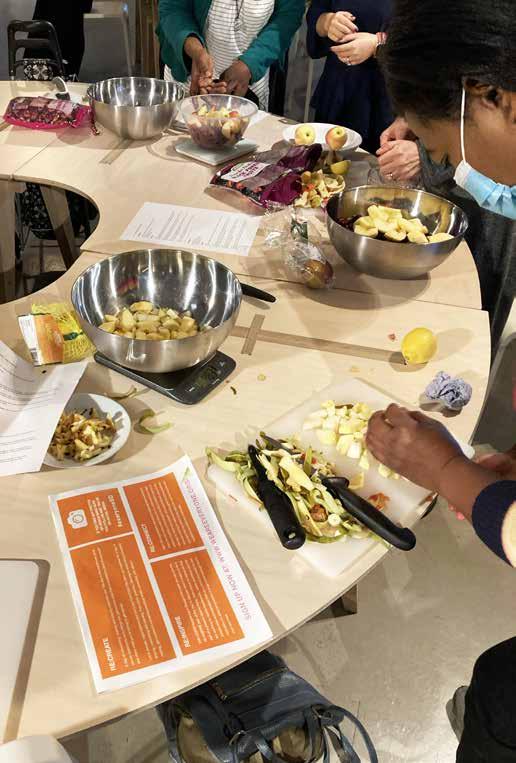




In order to evaluate the value generated by participatory projects for residents of Barking and Dagenham, this research has been careful to contextualise people’s experiences and journeys of participation. This was necessary to gain a better appreciation of how participation is shaped and operates within particular socioeconomic and cultural contexts specific to individuals.
To do so, this research has sought to understand people’s individual participation journey, alongside a thorough understanding of who participants in Every One Every Day are, what motivates them to participate, and what their expectations and aspirations are for participation.
The approach has enabled the development of a typology of participation, which helps summarise the relationship between outcomes and individual circumstances.
This approach has been selected for its ability to avoid generalisations regarding the outcome of participation for residents and to be able to develop a coherent account of the relationship between individual and collective agency.

The following section presents and discusses findings from one-to-one interviews focussing on resident participation journeys.
There is a detailed discussion of initial motivations, drivers, and expectations, followed by a description of how these evolved over the course of participation. Finally, it discusses the main reasons residents continue to participate in project activities. This leads to a proposed typology of participation of residents involved in the project. All data presented have been triangulated to corroborate findings and improve the reliability of results.
This section of the report discusses the findings of the latest qualitative fieldwork conducted by Every One Every Day in the London Borough of Barking and Dagenham during the autumn of 2022. The aim of the research was to better understand the role and value created by participatory projects at the individual level and also at the community level, in line with the research goals outlined in Section 1.
The qualitative fieldwork was designed to examine in detail the journey of resident participation in order to gain a deeper understanding of the broader outcomes generated through the project, and to provide insights into the impact of the model on urban communities.
As the project entered its fifth year, it became apparent that new research questions were required to advance the project’s understanding of the link between this form of participation and the development of social capital for individuals.

To achieve this objective, questionnaires and interviews were designed to capture individual journeys of participation by residents, taking care not to generalise resident’s motivations, expectations, and ambitions in relation to their involvement in Every One Every Day.
Data from different research methods were triangulated to uncover differences and similarities among residents’ participation patterns and how these relate to other variables, including personal motivation, time, and levels of involvement in the project, as well as expectations, drivers of participation, and ambitions for change.
By observing how each participant’s journey developed, the effects and outcomes of participation for residents were identified, enabling the development of a new outcomes framework.
Furthermore, a connection emerged between participation and the social issues that matter for participants, demonstrating how participatory projects can create positive social change. A core category linking individual and social outcomes was identified, allowing conclusions to be drawn regarding the ultimate value of implementing participatory projects to improve the well-being of individuals, communities, and societies at large.
As the first extensive experiment into participatory systems in urban settings, the project and its findings presented here provide readers with unique insights into the effectiveness of participation approaches as a tool to develop inclusive, sustainable communities that are aligned with citizens’ desires and aspirations.
The following section provides information regarding the qualitative fieldwork sample of participants. It starts by describing the demographics of the participants, then presents the main results about their motivation for participation, and the benefits they have experienced through participation. The data presented here is drawn on the interviewee profile and structured interviews that participants completed before being interviewed. The data is reported as descriptive statistics and then graphically represented either in tables, bar charts, or pie charts.
Over a period of two months, 30 participants were interviewed for the qualitative research fieldwork. The majority of the people interviewed identified as females (79 percent) and heterosexual (76 percent). Most of them were married or in a relationship (66 percent), and had children (66 percent).

38 percent of the people interviewed reported that they were self-employed, while 14 percent were employed part-time and 10 percent were employed full-time.
The remaining participants interviewed were retired (10 percent) and unemployed/looking for a job at the time of the interview (10 percent). 17 percent of participants preferred not to reply to the question.
In addition, respondents were asked to identify their ethnicity and religion to determine to what extent the sample of participants reflected the diversity of the borough. According to responses, the majority of research participants were white, either white other or white British, followed by Black Africans, Black British, and Asian and the majority were Christian.
The majority of the people interviewed (72 percent) reported no disabilities.
What gender do you identify with
Male (20.7%)
Female (79.3%)
Non-binary (0%)
What is your marital status?
Registered civil partnership/ married (42.9%)

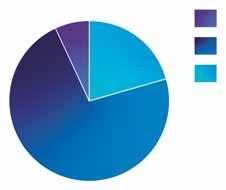
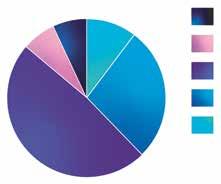

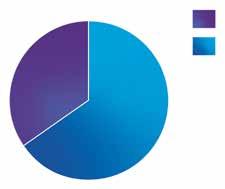

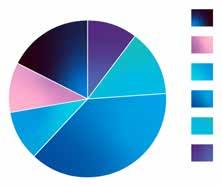
Single (25%)
Engaged / in a relationship (21.4%)
Other (10.7%)
Employment status
Full-time (10.3%)


Part-time (13.8%)
Self-employed (37.9%)
Unemployed (10.3%)
Retired (10.3%)
Prefer not to say (17.2%)
What is your sexual orientation?
Heterosexual (75.9%)
Homosexual (0%)
Lesbian (3.4%)
Bisexual (3.4%)
Prefer not to say (17.2%)
What is your ethnic group?
White(48.3%)
Mixed (6.9%)
Black or Black British (27.6%)
Asian or Asian British (10.3%)
Other (0%)




Prefer not to say (6.9%)
Do you have children?
No (34.5%) Yes (65.5%)
What is your religion or belief?
Christian (48.3%)
Sikh (0%)
Muslim (13.8%)
Jewish (0%)
Hindu (0%)
Buddhist (0%) No religion (24.1%)
Other (13.8%)

Do you have a disability?
No (72.4%) Yes (20.7%)
Prefer not to say (6.9%)


How long have you been involved with Every One Every Day?
Initially what motivated you to get involved? Teaching something
Networking and building connections
Getting my children involved in social activities
What is your relationship to Every One Every Day?
Organisational member or local business









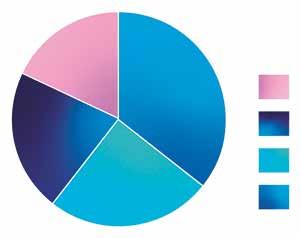
What are you doing with Every One Every Day?
Hosting sessions
Attending activities Learning
Co-designing sessions
Pursuing an interest What
Which shop space do you currently

Yes (50%)
No (28.6%)
I do not know any hubs (21.4%)
Do you visit any hubs across the neighbourhood?
When you visit the spaces, with whom do you usually go?


With my friends and neighbours (39.3%)
With my family (7.1%)
Alone (53.6%)
When do you usually visit the shops or the warehouse?
Whenever I can (53.6%)
To attend specific events in the programme ( 28.6%)










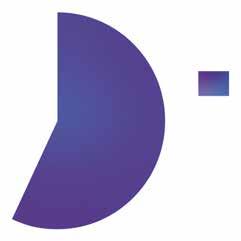

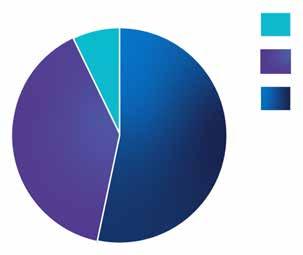
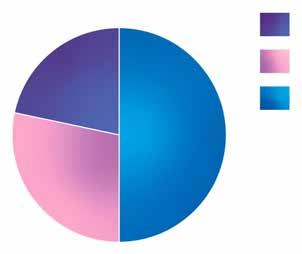
To join in during and outside programmes (17.9%)

How often do you visit
Everyday (3.6%)
Multiple times per week (32.1%)

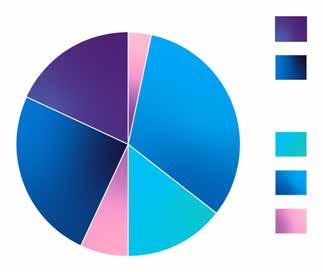
Weekly (14.3%)
Fortnightly (7.1%)











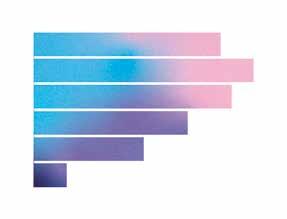
How do you get the most up-to-date information about the activities?
Website and Social Media

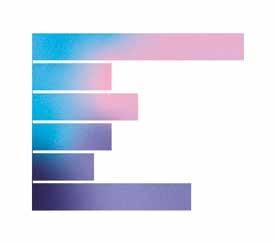
Newspaper
Whatsapp Groups
Word of Mouth
A combination of these




Do you feel like you have enough time to get involved in our activities?
Yes (64.3%) No (35.7%)
When you visit the shops, what do you usually do?
Getting involved in activities with others
Chatting with members of the team
Meeting friends and doing activities together
Enjoying self-learning opportunities
Sitting alone without engaging in conversation/activity
How much time do you usually spend in the shop or warehouse?
Short visits (32.1%)

All day (14.3%)
Long visits (53.6%)
Which of the following benefits have you gained from participating at Every One Every Day?

Mental health and wellbeing
Physical activity
Socialisation
Networking
Increased self-confidence
Community connection
None of the above
Which of the following benefits do you wish to develop from participating at Every One Every Day?
Mental health and wellbeing







Physical activity
Socialisation
Networking
Increased self-confidence
Community connection
None of the above
Interviewees had been involved in the Every One Every Day project for between four months and five years. Most had been involved for between one and two years (36 percent), followed by those who have been involved for three to four years (25 percent). 21 percent of respondents have been participating since the beginning of the project.
One third of respondents said they visit the shops or the warehouse two to three times per week, 18 percent a few times a month, and 14 percent once a week. More than half of respondents (54 percent) indicated that they spend between one and two hours within the spaces when they visit, one third spend more than three hours, and 14 percent spend the whole day if they are able to, generally coming both mornings and afternoons.
Nearly two-thirds of participants (64 percent) believe that they have enough time to participate in the project’s activities, while 36 percent believe that they do not. Almost all the people interviewed knew about Everyone’s Warehouse and half of the respondents knew and also visited the hubs across the neighbourhood.

A significant number of people cited their interest in the activities and events occurring in the spaces, as well as the proximity of the spaces to their homes, as two key factors that bring them to the spaces to participate.
A considerable majority of people interviewed were initially motivated to participate by the prospect of learning new skills from others and by the possibility of meeting new people. In addition to these two primary areas of motivation, participants also highlighted the opportunity to teach and share their skills with others and to learn how to start a business
Residents who took part in the research activities were mostly shop participants (43 %) and warehouse keyholders (43%). 14% were organisational members.
Emails were the most commonly cited means of participants receiving information about participation opportunities, with interviewees also mentioning newspapers, WhatsApp groups, and the Every One Every Day website.
Most participants visited the spaces alone, while others brought someone along, either a friend, a partner, or their kids from time to time. Over half of participants indicated they typically visit the spaces whenever they have time or feel like doing so, and just under a third (29 percent) when there is an event or session they are interested in.

Interviewees reported having experienced three main benefits of their participation;
• Meeting new friends;
• Feeling happier, more confident and creative;
• Feeling more welcomed and included in the community including an increased sense of trust and belonging.
When asked to consider what additional benefits participation would bring to them in the future, the most commonly cited benefit was networking with individuals with whom they will be able to exchange ideas.
In summary, interviewees were motivated to participate by the opportunity to learn something new and make things together with other residents, as well as the opportunity to meet new people, and improve their social life.
The majority of participants had enough time to devote to the project, as they were either selfemployed or part-time employees, and were generally
able to manage their own time since they were working outside of standard 9-to-5 jobs.
Further to this, it appears that the combination of the vicinity of the spaces to their homes and the existence of activities of interest within the spaces is crucial in allowing people to participate.
Learning and sharing skills with others is a major driver of participation. Interviewees reported being eager to connect, socialise, and learn from one another. Participatory projects provided people with opportunities to develop relationships and skills.
As people establish new relationships and expand their social network, they gain a new sense of belonging and trust towards each other, which overall enhances social cohesion.
According to the interview data, the majority of first-time participants did not have any specific expectations when they started participating. Instead, their decision to enter Every One Every Day spaces was primarily driven by curiosity.
As resident Amelie stated:
“I just came to see what it was like, and what they were offering. I didn’t have any expectations at the beginning, and when I came, I wasn’t disappointed because they had something for everybody, they even had things for the children.” - Amelie
Similarly, Grace, another participant, said:
“I think I was quite curious. So, I didn’t have fixed expectations. I rather went out to see what’s on offer.” - Grace
Another participant Laura:
“It felt like it was a place to come and do things and get involved with things, which would help with my mental health. I could see that it had lots of facilities, and it had lots of things going on in the shops and here (the Warehouse). So, yes, it seemed like the kind of thing I was really interested in.” - Laura
Once residents became aware of the project, their motivation to participate began to form around three main drivers.
• To learn something new out of curiosity, because they had never had the chance to or because they want to develop their skills in order to advance a business or past-time;
• To share knowledge and skills;
• To engage in the local community, meet new people and find company.

Sienna describes her motivations around learning as follows:
“I like gardening, but I don’t know how to do gardening. I have an enormous garden, and I’d love to learn or somebody else to teach my son how to do gardening. Or, you know, being able to use all these industrial tools in the woodwork area, that was quite exciting to me, because those are new skills that I don’t have, but I’d love to build. I was, kind of, hoping to hone in some of those skills,” - Sienna
Many participants held a strong desire to share their knowledge and skills and found an outlet to do so through participation opportunities with Every One Every Day. Again, according to Sienna;
“I think, personally, I really loved the idea of being able to offer up some of the skills I already had. That was on one side, because I already knew how to cut and sew, I know how to make a garment from scratch, I also cook quite a lot,” - Sienna
For other interviewees, socialisation was the primary driver of their motivation to participate.

For Freya, who had recently moved to the neighbourhood:
“My expectations were to start socialising with people, meeting people, making new friends, and also to get to know my neighbours,” - Freya
As will be seen, participant expectations tended to develop over time as their understanding and appreciation of what was available in the spaces grew. Increasingly, participants began to connect their expectations from the project to broader ambitions in their own lives.
This enabled them to self-navigate to the opportunities which were most attractive and important to them.
Lola explains how her expectations have changed since she first participated:
“I think the first time I came it was like, fun time, you know. Now it’s more about learning skills, it’s a professional commitment. Now, for me, it’s about learning,” - Lola

This section examines the motivations that move residents beyond their initial curiosity and interest in the project towards more regular participation as part of their everyday lives.
From the three initial motivations described above, participants described six additional factors that sustained and developed their motivation to participate:
Some interviewees stated that participation with Every One Every Day has simply provided them with the chance to “do something,” “get out of the house,” and “become involved in activities they could look forward to after work.”
Olivia, a young woman in her thirties, reported that she chose to participate:
“Because I’m not home sitting, watching TV all day and all night. I’m out and about doing things,” - Olivia.
Similarly, Amelia, a woman who had just retired, stressed her motivation to get involved to do something practical and useful:
“And it is something to come out to do, to look forward to after work because there are always activities, something you could get your hands messy with,” - Amelia
Other participants pointed at the link between this form of participation and mental health benefits. Hannah, a woman in her fifties, who had been struggling with mental health issues, stated:
“For me, it was purely to get out of the house, where I’ve been down in lockdown and my mental health suffered. I didn’t really go out very often, but now the involvement in the project it’s given me the confidence to go out more,” - Hannah.
For local mothers, participation enabled them to introduce their children to new activities, particularly activities that they would not usually do at home that might help them in their lives. The wide availability of children-dedicated areas and toys across all spaces was also mentioned as a driver of participation for mothers with young children.
“I like that my children can learn new things, as they don’t know anything, and as a mum I should teach them what is good for them for their future. So, if they learn something here, new things, they can apply it in their life. So, they’re learning how to cook, for example, my 6 year old boy learned how to make pizza and fried rice. Now, he knows how to cut an onion. If he’s home he would never learn because he’s a baby, we do not allow them. But here he learns because he enjoys doing it, and because other people are doing it, and he wanted to cook as well,” - Rana.
For residents wishing to learn skills who find themselves excluded from many opportunities due to the high cost or time commitment, the extensive availability of professional tools and equipment both in the shops and Warehouse was crucial to sustaining their participation. As the quotes below show, the accessible and practical design of Every One Every Day spaces created a unique, self-directed learning opportunity for residents.
“Participating is brilliant for me, because I gain new experience and I have the opportunity to learn something new for my professional development. And above all, it’s free, which is very important because in this area people struggle with money,” - Lola.
“At Every One Every Day we have access to spaces across the borough that are
fully functional, full of the most amazing resources that you could imagine, where we can use everything for free. It’s, like, wow, we’re super lucky.” - Sadiki.
Specifically, Everyone’s Warehouse, with its machines and workshops, encouraged participants to develop and deepen their participation. The Warehouse was a driving force for residents who wanted to take their skills to an advanced level and attracted a range of different people with varying goals; from those who needed access to professional machinery in order to develop or run their business, to those whose aspiration it was to experiment and express their creativity through self-led participation, experimentation with others as well as structured learning experiences. A similar purpose was served by the shops for participants interested in sewing or other learning opportunities.
Mason described how he uses the fabric workshop to develop his skills and experiment with new designs:
“Usually I make bags, I also sew clothes for myself. But I also like to experiment and create new things, so sometimes I wish to try out some weird designs in fabrics that I do not think people would wear, and I make them for myself.” - Mason
A phrase used by many interviewees in describing their reasons for participating was ‘to give back to the community’. This underlines the importance of the neighbourhood-based character of the platform. As Oscar, a male participant, stated:
“I came here because I saw the opportunity to give back to the community. And with the projects, this is something you can do, I’ve seen it. I mean, it’s just something important, so I’m not going to stop coming here.” - Oscar.
Margot expresses a similar sentiment:

“I thought I could also give back to the community through this space. So, that’s why I became a key holder, so whenever someone needed someone else to be inhouse, and if I was available, I would just pop in as I’m just so close to here. So I thought, ‘yes, why not’.” - Margot.
And for Rose this concept was tied to the idea of reciprocity - that if she was benefiting from the project, she should also contribute:
“So basically because I enjoy cooking, I enjoy soap making, cream making and I want to be able to give that back to the community.” - Rose.
The highly accessible nature of participation opportunities through Every One Every Day was also identified as a key factor in supporting ongoing involvement. Welcoming, inclusive spaces in which residents do not have to make significant commitments as a condition of attendance meant that participants were able to adapt participation to their lives rather than the other way round. The flexibility of participation opportunities appeared to be a major enabler of participation, particularly when participants did not have another overriding motivation to do so.
“From the time you enter the door, the environment is warming because downstairs, there’s chairs. So if you’re tired, you can sit down and relax. They have plants, so downstairs is like a little sitting room. So you can sit down, relax, then when you come upstairs, you have the coffee table with your coffee and your food. If you want to have a cup of tea or if you want to bring your own tea, you can sit down and you make your tea, have a snack, then relax. If you want to sew, it has the machine, it has threads, it has scissors, it has everything you need. And they have like scrap material that you can go and practise with.” - Amelia.
Almost all participants in the research cited the hospitality of the spaces as a significant reason for becoming regulars. Participants found spaces to be welcoming in relation to their physical layout, and because of the approach of team members, with whom they felt comfortable engaging.
“Every One Every Day it’s almost like a home, where you can come, you can have tea, you can have coffee, you can sit down, you can have your kid playing in the back while you’re doing some work. It’s like being at home, but being able to also be with other people. Yes. It’s a home.” - Margot.
“I enjoy coming to Every One Every Day. I love the team and the environment really. Since when I first came in I was intrigued by the shops, what they have done with the space, so every time I see something new I am interested to see what happens there. I love the team, you know, I just love getting involved, really, and popping in when I can. I just love coming to Every One Every Day. It’s just changed my life, especially the people I’ve met along the journey.” - Arthur

“I enjoy coming to Every One Every Day. I love the team and the environment really. [...] It’s just changed my life, especially the people I’ve met along the journey.”
A typology of participation was developed based on the data gathered from participant profiles and interviews about residents’ expressed expectations, motivations, and interests. This typology is proposed as the basis for ongoing iteration of the participation model and future research into participatory approaches. In presenting this typology, it is acknowledged that most participants participate for multiple reasons that invariably intersect with one another.
• To socialise
• To meet new people and expand networks
• To find collaborations
• To enable children to socialise
• To pass time and/or do something in spare time
• To learn something new
• To learn a particular skill or to develop a particular interest
• To advance in work or career

• To learn how to develop a business or organisation
• To access equipment and resources to run a business or organisation
• To enable children to learn
Participation for health and wellbeing
• To get more active
• To improve personal mental health

• To re-engage in the community after the pandemic
Participation to make a difference
• To people to affect change locally about something you care about
• To give something back to the community
• To teach others

As set out in this report and preceding research, the Every One Every Day project has consistently demonstrated that practical participation can have very beneficial effects on individuals and communities.
The mechanism through which this occurs was explored in detail in Tools to Act, which investigated how outcomes are achieved through practical participation and developed an updated outcomes framework.
Building on these findings, the latest fieldwork aimed to explore the connections between the diverse outcomes generated and their direct impact on promoting positive societal change. This helps to evaluate the full value that participatory systems approaches can bring to individuals, neighbourhoods, and societies.
To develop this understanding beyond the scope of the prior research reports, this research has sought to contextualise participation experience through typology of participation patterns. This in turn, has enabled a further iteration of the outcomes framework, which, by describing the progression of outcomes from the individual to the community and wider society, can assist in developing participatory strategies which can be implemented to promote positive social change in other places.
In the analysis of one-to-one interviews conducted with residents involved in the research, it emerged that participation with Every One Every Day has led to a variety of outcomes, which start at the personal level and extend outwards to neighbourhoods and society more broadly. Individual outcomes accumulate to neighbourhood and community outcomes, which collectively drive a variety of social benefits, leading to place-based impacts in the form of beneficial change.
This model builds on the outcomes framework shared in Tools to Act and underlines a core aspect of the model; that thousands of small scale actions built into people’s everyday lives generates large scale social impacts and positive social change. The following section breaks down this model through an exploration of the outcomes achieved by this model with reference to the typology of participation.
This brings about a further discussion on the relationship between participation patterns and their outcomes. The data presented and discussed in these sections will assist in drawing conclusions about the role and value of participation in creating diverse social benefits and, more specifically, social capital.
• Individual outcomes
• Acquiring knowledge
• Knowledge sharing
• Increased mental health and happiness
• Increased sense of agency and ability
• to make decisions
• Improved social interactions and communication skills
• Expanded networks
• Decreased loneliness and social isolation
• Collective learning
• Collective making for the public good
• New support networks
• Improved neighbourhood environment
• Diffusion of knowledge
• Trust and neighbourhood belonging
• Reciprocal engagement and cooperation
• Community development
• Social networks
• Social cohesion, mutual understanding, and reduced conflict
• Increased awareness of and connectedness to nature

• Increased awareness about healthy nutrition that shifted in food habits and helped reduce the cost of living
• Enhanced understanding and empathy
• Increased creativity
• Increased sense of community inclusion
• Confidence and experience in working in teams
• Developed a sense of life purpose
• Increased trust and reduced bias
• Improved family relationships
• Reduced financial hardship
• Economic growth
• Sustainable development
• Fairness of opportunities
• Social mobilisation
Individual outcomes refer to benefits experienced on a personal level by participants that have an immediate and direct impact for them. These were identified during the interviews and are summarised below.
This was one of the most important outcomes identified by interviewees. In many cases learning a new skill was the primary given reason for people’s motivation to participate in project activities.
Sharing knowledge with others was identified as a major outcome from participation. Many interviewees were glad to have the chance to make a contribution to their community by passing on skills to their neighbours. Participants who shared their skills with others expressed pride in hosting sessions and guiding the learning of others. Some expressed that this had given them a sense of purpose in their life.
Many participants identified mental health and well-being benefits as a result of participating in the project. Many described feeling happier with themselves, more relaxed and confident following participation experiences, with positive impacts reported in particular for those experiencing depression and social anxiety.
Establishing close relationships with team members also helped participants feel welcomed within the community, overcoming a perceived barrier to doing so due to mental health challenges. Participants who experienced positive mental health impacts emphasised how the project has changed their life for the better, helping them to re-connect with others and fight social isolation, anxiety, and depression.
Increased sense of agency and ability to make decisions
Interviewees reported that participation improved their confidence in their skills and abilities, and therefore increased their sense of agency. In direct correlation with this outcome of agency was people’s growing sense of pride in what they were doing and their increasing confidence that they are capable of accomplishing what they set their minds to achieve.
Participants have also cited the project’s social interactions as a significant benefit. The majority of interviewees reported that they have improved their social lives and their ability to interact with others as a result of involvement with the project.

Participation provided residents with multiple opportunities to meet and bond with people, often outside their familiar social and neighbourhood circle. As they did so, many participants expressed surprise and delight at the discovery of how much they share with their neighbours. This provided them with actual connections to neighbours who wanted to work on the same ideas and a sense of possibility about what could be achieved. This finding is significant as it is the basis for residents’ ability to develop collective agency, and therefore relevant to the participation system’s ability to create wider social change.
Many interviewees described being affected by social isolation, which affected their ability to interact with and establish new relationships with others, including their neighbours. The accessibility and inclusivity of participation opportunities helped to break isolation barriers and reconnect them into their immediate neighbourhoods.
Interviewees reported an increase in their sense of connectedness to nature through community gardening and other related activities that have provided participants with the opportunity to reconnect with nature while living in an urban environment. Interviewees reported becoming more aware about environmental issues and actively participating in activities that aimed to create a better local environment, for instance by reducing waste, up-cycling, or creating more green spaces across the neighbourhood.
Increased awareness about healthy nutrition that shifted in food habits and helped reduce the cost of living
Several participants in the research reported that project activities related to food have increased their awareness about healthy eating, and their interest in growing their own vegetables and cooking their own food. Interviewees also reported a shift in food habits, evidencing people’s desire to explore ways to reconnect with the environment as well as to reduce living costs.
Participating in practical activities within a highly diverse and multicultural neighbourhood had a significant impact on fostering connections with individuals from diverse sociocultural backgrounds. Through this experience, many individuals who were interviewed expressed how they developed a deeper understanding of different cultures and gained valuable knowledge from their interactions.
This positive effect extended beyond interpersonal connections and also influenced the interviewees’ perception of their neighbourhood and borough. Some began to see their neighbourhood in a more positive light, envisioning it as a place of opportunity and potential.
For some interviewees, participation was a highly creative experience and allowed them to explore and develop their ideas. Many interviewees reported that involvement in project activities had instigated a new creative hobby or business for them, which they were able to further develop through participation.
Interviewees reported that this type of participation made them feel more welcomed and included in the community. Specifically this was a function of the way participation opportunities enable participants to make a contribution to their neighbourhood, for instance by sharing their skills and participating in the co-design of activities.
Some interviewees, especially those participating in business programmes, noted that they developed teamwork skills and new experiences by taking part in project activities.
Some interviewees stated that participation had enabled them to feel they had a new purpose in life, as a consequence of feeling like they are part of “something bigger” or “contributing to something important.”


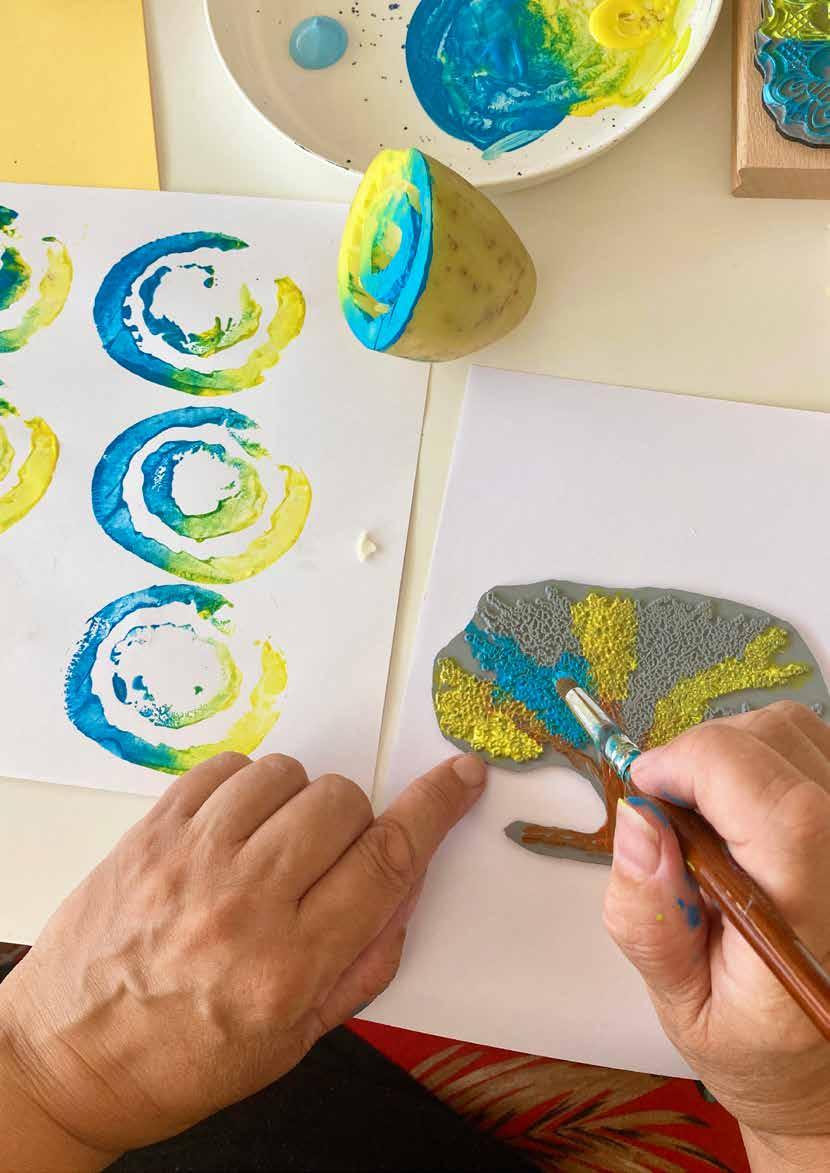
Community outcomes are the effects of individual participation on the wider community, including family members, friends, and neighbours.
Many people who took part in the project learned new things and shared their knowledge with their children and other residents. They also encouraged their friends to join, seeing it as a chance to learn and grow. The fact that people were able to learn and share with others in their community demonstrates that the project is promoting learning together.
Collective making for the public good
The project gave people the chance to work together on practical activities like cooking, gardening, and making things. This brought people together and helped them connect with each other. Many of the things they made were shared with others in the community. People said that the project taught them about the importance of sharing.
The project encouraged people to socialise and meet each other, especially their neighbours. Many interviewees said that because of the project, they were able to make new friends who supported them during tough times.
People who took part in the project, particularly in gardening and growing food, helped make the neighbourhood healthier and greener. Interviewees reported that this made their neighbourhood environment better to live in.
The project brought people together to work and learn from one another, which helped them understand each other better. Almost all interviewees said they felt more open towards other community members and had a greater sense of trust in them than before. When people trust one another, they are less likely to have biases. This can reduce biases and preconceptions.
Taking part in the project made people feel better emotionally and improved their relationships with family members. They reported an increased sense of happiness, and this positively affected their relationships.
The project helped people learn new skills and start their own businesses, enabling them to support their families financially. Families directly benefited from their family members participating in the project’s activities.

Social outcomes describe the benefits of participatory projects at the wider societal level and are the accumulation of the individual and community outcomes generated by the system.
People in the community learned new things and shared their knowledge with others, which helped everyone benefit. This form of collective learning is understood as the capacity of the community to take on new knowledge for the benefit of wider society.
Participants developed trust and loyalty towards one another, which is a prerequisite for overall community well-being. A feature of this is the development of a sense of neighbourhood belonging, openness, and tolerance towards other groups, which is vital for creating a harmonious and thriving society.
Participatory projects have a co-operative nature that encourages a culture of reciprocity and commonality among community members. This culture benefits the wider community as it involves producing something that everyone can benefit from. By working together in this way, community members can develop a sense of common purpose and mutual support, which can help to create a more cohesive and resilient community.
The project in Barking and Dagenham has had a significant impact on community development. By enabling residents to come together and collaborate, the project has provided residents with the means to improve their quality of life and effect positive change. It has also raised awareness about public issues; including the environment, health, access to food, and knowledge transfer across communities. Most importantly, the project has given participants a sense of purpose and direction, which many were eager to find. In fact, the project has inspired some participants to create long-term initiatives that aim
to make a positive local impact. For example, one participant was inspired to create a project focused on supporting vulnerable groups in the borough. These types of initiatives are crucial for promoting sustainable and inclusive community development, as they involve active participation from residents who are invested in creating positive change.

The projects offered a range of social activities that allowed people to connect with one another and form diverse social networks. These networks enabled individuals to collaborate and work together towards shared goals.
The project played an important role in fostering a sense of belonging amongst participants, as well as bringing together individuals from diverse backgrounds. As a result, it promoted greater social cohesion, mutual understanding, and decreased conflict within the community.
The project’s activities have provided participants with a diverse set of skills that have helped them grow professionally. In particular, those who participated in the business programmes were able to start or expand their own businesses. This has had a positive impact on the economic growth of the Borough.
The residents of the borough have shown their commitment to promoting sustainable development goals through their participation in co-designing activities that address modern concerns, particularly environmental issues. This demonstrates that people have developed a new perspective on society and life in general, which has led to an increased understanding of alternative, more equitable, and sustainable living options.

The project has provided a wide range of free activities that have enabled residents from one of the most deprived areas in London to access resources, skills training, and education without any financial barriers. The interviews conducted with participants have highlighted the importance of this initiative in providing local residents with the opportunity to access professional tools and machines, as well as training that they would not have been able to afford otherwise. This has clearly demonstrated the potential of the project to widen opportunities for those who may be economically disadvantaged.
Several participants expressed their interest in mobilising other members of the community to address issues of concern, such as the environment, nutrition, mental health, social isolation, and sustainable and healthy living practices. The project’s potential to create social mobilisation within the community stems from its ability to bring residents together, provide a platform where residents can come together and share and discuss ideas, and provide opportunities to put these ideas into practice.
Most participants were surprised to discover that they shared common ideas with others from diverse socio-economic backgrounds and were willing to work together to effect positive change. Some participants were particularly eager to establish these relationships to have a greater impact on their community.
The findings on the variety of individual and community outcomes that participants of the Every One Every Day project experienced, as well as the consequent benefits they have brought to society, demonstrated that participation plays an important role in building and reinforcing human and social capital within communities where it is implemented.
This section summarises the findings from the research analysis of the relationship between a range of participation variables and outcomes. The aim was to identify patterns and correlations in order to draw conclusions and hypotheses about how to develop and strengthen participation models.
• There were few observable differences in outcome patterns based on participant profiles
• Where these were observable they appeared to operate indirectly, for example by
influencing
Participant variables
Participant profile
• Of these the most notable were employment status and caring responsibilities which had
the effect of limiting the frequency and intensity of participation possible
• However, it should be noted that such participants still experienced the direct and immediate benefits of participation as well other positive outcomes as the length of their participation extended
• There was a significant correlation between the intentions and motivations expressed by participants and the outcomes they went on to experience
• This is in keeping with the underpinning theory of change behind the approach which states that the outcomes are the result of participants having a uniquely diverse set of opportunities available to them to which they can self-direct according to their preferences
Participant motivations
• In many cases motivations also predicted the spaces participants’ tended to use with shops being a primary location for those motivated by the desire for connection and to socialise, and the Warehouse being the space used by those seeking longer term goals in relation to learning and skill development
• This is a critical finding which underpins residents’ agency in this model to shape their own experience when the opportunities and resources are made available to them
Intensity variables
Location of participation
• The frequency of participation varied greatly across the residents involved in this research and was influenced by their individual motivations and the amount of time they were able to devote to practical participation.
• There was no observable relationship between specific frequency patterns and the outcomes achieved through participation
• The frequency of participation varied greatly across the residents involved in this research and was influenced by their individual motivations and the amount of time they were able to devote to practical participation
Intensity variables
• There was no observable relationship between specific frequency patterns and the outcomes achieved through participation
Length of involvement
• However there was an indirect relationship observed in cases where the ability of participants to attend was impacted by external factors, and affected their ability to join sessions they hoped to attend to complete learning, or training
• The extent to which participants engaged with the project could impact the pace at which they achieved their highly individualised objectives
• Different spaces were found to drive different types of participation outcomes
• Most notably the scope of self-reported learning and skills, including business skills, was broader in Warehouse participants than for those in shops
Access variables
Location of participation
• For participants at the Warehouse and on business programmes, the availability of making infrastructure including machines and programmes played a significant role in motivating them to continue to participate
• Proximity to one’s house or significant local amenity such as one’s children’s school, as well as a specific interest in an activity were significant factors in driving levels of participation and consequent outcomes
• As described above, the data show that residents’ participation was shaped to a great degree by their motivations
Activity variables
Timings of participation
• It is perhaps unsurprising therefore, that residents who were driven to participate by a specific learning or business goal and tended to organise their participation around relevant opportunities and were less likely to simply turn up at spaces with the aim of meeting people
• There was no observable difference in outcomes achieved based on the times of day when residents participated
• The relationship between the type of participatory activity and reported outcomes is complex due to the clear finding that motivations to pursue specific objectives were predictive of greater scale and scope of outcomes
Type of participatory activity
• On this basis it is hypothesised that as an environment in which residents self-direct to the activities most valuable to them, the key relationship is that between resident objectives and available opportunities (or ability of residents to create the opportunities they are interested in)
• When these elements are aligned it is likely that the scale and scope of outcomes will be greater
• The development of an increased sense of agency for participants was associated with two principal factors
• Increased confidence through skills development and the confidence developed through neighbourhood ideas to fruition
Individual agency
• Expanded networks with other residents through which generate a sense of possibility about what can be achieved
• These are characteristics of all opportunities created by the participation ecosystem and therefore provide an indication of how these experiences result in an increased sense of agency for participants
Outcome
variables
• There was clear evidence that participation in general was beneficial for well-being, and in specific cases was associated with reported improvements in mental health conditions including social anxiety and depression
• The reasons given by interviewees for how participation achieves these outcomes were varied and included;
• The chance to meet new people and socialise; creating meaningful and lasting connections
• Engaging in practical, enjoyable and useful activities outside the home
• Finding motivation to try something new
• Giving new impetus to personal and career development
• A feeling of making a contribution and a difference and connecting to something bigger
• A sense of possibility and potential about the borough leading to greater optimism about the future
• As indicated by these findings, which demonstrate the broad-based relationship between the nature of participation opportunities and mental health outcomes, there was no discernible connection between specific types of participation and increased outcomes. It’s been determined that these were associated with all types of participation.
• There was clear evidence that participation opportunities resulted in significant learning and skills outcomes for participating residents
• In interviews this was ascribed to a combination of; the diversity of available opportunities and the fact that these were highly accessible (including being free to join)
• Skills development was also associated strongly with the finding of increased agency for those who reported experiencing this outcome, as well as consequent community and social benefits. This was due to a number of factors including:
Skills
• Increased confidence in entering the job market or starting a new business
• A sense that they were now better placed to make a positive impact on their local community.
• A sense of excitement about sharing their new-found knowledge with others, including their families
• Increased awareness of issues they felt were important and consequent motivation to effect
social change
Outcome variables
• Further corroborating the findings from Tools to Act, there was clear evidence of the impact of practical participation for increased trust in others, a prerequisite for the creation of bonding forms of social capital
• This trust was formed by the experience, reported by interviewees, of discovering shared values and objectives with their co-participants, as well as in the recognition that everyone had something to contribute
The following case studies explore in detail some particularly illuminating resident participation journeys and seek to examine the link between individual, community, and social outcomes. They draw heavily on the literature on the significance of social capital as a driving force for broader positive societal change. The case studies also serve to highlight other potential areas of future research.
The case studies presented here demonstrate how participation is capable of generating social capital in individuals that is then associated with a range of multi-level outcomes at community, and society level.






Membership
Aisha is a young woman who decided to become involved in Every One Every Day for a variety of personal reasons. Having experienced multiple positive outcomes from her participation, she represents a strong example of a resident who has benefited personally and professionally from her participation.
Her journey with Every One Every Day started as follows:
Years
“I got to know about Every One Every Day through another charity organisation called British Heart Foundation and they are the one who introduced me to Every One Every Day because I was suffering from depression and anxiety.”
Aisha initially discovered Every One Every Day as a means to socialise and engage in various activities, recognising the potential positive impact for her well-being, particularly in relation to her mental health struggles.
Her primary motivations for getting involved in the project were to enhance her happiness, boost her confidence, and meet new people. However, once she started frequenting the neighbourhood shops, she found herself inspired by the multitude of learning opportunities available and the chance to participate in activities she had never tried before.
The welcoming atmosphere of Every One Every Day, which Aisha describes as a "safe haven" where she can enjoy herself while acquiring new skills, encouraged her to step out of her comfort zone and explore uncharted territories. Initially, like many other residents, Aisha didn't have high expectations upon joining the project. As her familiarity with the project grew, her expectations about what she could accomplish grew also.
“Before I got involved in Every One Every Day, I've always been applying for jobs and not getting anything or not getting past the interview, so, it kind of got me upset, it shut me out. So, when I heard of this opportunity [Grounded] I jumped on it. It's a whole new thing because I always wanted to start my own business, but I didn't know how to go about it. So, I’m making my way around here, learning how to do my own taxes and stuff like that. So, it's a whole new world to me.”
Aisha emphasises the profound impact for her of participating in Coffee Works, a collaborative business programme that aimed to establish a cooperative café, had on her a collaborative business program that aimed to establish a cooperative café. She highlights how this opportunity was instrumental in equipping her with equipping her with valuable skills and business training and; most importantly, enabling her to secure a job that she had long desired. Aisha describes the impact this had on her, “this opportunity encouraged me to open up, to follow my dreams, passion, and my heart by being involved in something new.”
“I was always wondering, any time I'd go to Starbucks or Costa how they made this coffee. And then it was only when I started the course and started working at Grounded that I realised, 'Oh, it's actually not that hard.' Because we had, like, a 6-week course on how to make coffee and different coffee beans and which countries make coffee and stuff like that. So, before that I didn't even know or have a clue.”
She describes how participation in Grounded had a significant impact on her personal life:
“Things like, teaching people how to make coffee, just being yourself, you know, I was really quiet, so to be able to speak to someone was hard for me to do, and coming here and working at Grounded, I was able to speak to people because, you know, Grounded is a retail, kind of thing and you're always speaking to someone. So, for me to be able to do that was great, I never thought in a million years I would do it.”
Aisha goes on to explain that her involvement in Grounded and other participatory activities, “brought out more confidence in me, it brought out not to be shy and just follow my heart,”. The project overall appeared important to Aisha as:
“It keeps me out of my comfort zone, makes me do stuff that I don't normally do, meet new people, I was able to make new friends, meet members of staff because they are really cool and really fun to be around. And, you know, when I first joined here I was really quiet, really shy and over the years I was able to come out of my comfort shell. I'm still in a learning process, but from the first time I joined to now I can see a bit of difference, which is really good.”
From Aisha’s journey of participation it is clear that the project was a starting point from which she could continue developing herself as she wished to:

“The whole Every One Every Day project has opened new opportunities for me. Within the first year or so that I joined Every One Every Day, I was invited to speak at Parliament about my experience with depression and how I was able to overcome it. I still struggle of course, but it's not as bad as it was when I first started. So, yes, the project was really good for me.”
When examining the factors that contributed to Aisha 's ability to combat her mental health issues and develop her self-confidence, several key elements emerge. Firstly, her keen interest in acquiring new skills, particularly in the realm of business, played a significant role. Engaging in novel activities that she had never tried before also proved crucial in her personal growth. Additionally, her capacity to foster meaningful relationships with colleagues and fellow participants in the project was instrumental.
Aisha further highlighted how her experience with Every One Every Day transformed her sense of belonging within the community. Through the project, she was able to broaden her circle of friendships, embracing individuals from diverse backgrounds. This expansion of her social network provided her with a greater sense of connectedness and support.
In summary, Aisha's journey towards improved mental well-being and increased self-assurance was fueled by her drive to acquire new skills, her immersion in novel experiences, and her ability to forge connections with her peers. The transformative impact of her
involvement with Every One Every Day extended beyond personal growth, reshaping her sense of community and expanding her social horizons.
“I feel more connected, I don't feel just by myself or lonely, I feel connected to other people, I've got more friends which is nice because I've never had a lot of friends growing up. I’ve also made a few friends from various backgrounds. It's nice to have that, you know, different culture kind of thing, so you get to learn one another's culture, one another's background, one another's religion and all that stuff.”
This increased sense of belonging and inclusion, particularly for someone from a minority ethnic group in the borough is critical to fostering trust and cultivating social cohesion which are themselves crucial components of social capital. This has transformed Aisha ’s perspective on the borough:
“Now the borough is changing a bit, it's like new. I never thought that we had anything like this before, then when I started joining here I'm like, 'We're lucky to be the borough that has this kind of thing because I don't think any other borough in London or in the UK has all of this.”
The impact of Aisha’s increased sense of confidence in herself, her skills and the contribution she can make was evident in the role she assumed during the COVID-19 pandemic:
“Because of the lock down all the shops were shut down and they had to stop the workshops that they have, but in a way it was actually really good because even though everything was shut down, I was able to help the Council, not just me but a few volunteers within the borough were helping the council do packages for the people who weren't able to leave their house, do their shopping. So, I was getting the orders in, packaging and getting ready for the drivers to deliver them to the specific houses. It was really good, it didn't make me, like, fall back into my depression because I wasn't at home the whole time, I was here helping out, helping the community, helping the borough basically. So, it was really good.”
Aisha's participation journey demonstrates the value of practical participation, both for personal growth and societal transformation. This case study vividly illustrates that participation can yield a range of

outcomes, each tailored to the unique circumstances and aspirations of individual participants.
For Aisha, the project was a catalyst for breaking out of social isolation and alleviating depression by connecting her with new people and engaging her in project activities.
Moreover, it provided her with the opportunity to acquire a new skill set as a barista and secure a job within her neighbourhood.
The project played a pivotal role in reshaping Aisha 's perspective on life, bolstering her confidence and agency and enabling her to pursue her dreams and passions. Her eagerness to continue learning and gaining experience in Grounded coffee shop reflects her ambition to one day establish her own business.
These individual benefits have been reflected in her new found positive attitude towards her neighbourhood and her neighbours, with Aisha reporting increased trust and a greater sense of connection.
Aisha's multi-faceted outcomes from her participation demonstrate the significance of practical involvement in cultivating more inclusive, sustainable, equitable, and cohesive communities for the future. Her journey has contributed to the following social benefits:
• Enhanced human capital through the development of new skills and knowledge;
• Increased social capital through the establishment of networks, trust, belonging, and connectedness;
• Socioeconomic development through employment opportunities and aspirations for future entrepreneurship, and improved wellbeing for individuals, communities, and societies by addressing mental health concerns and fostering a sense of agency.
Hannah’s case study exemplifies a shop participant who has built participation into her everyday life. She frequents the shop regularly, typically visiting two to three times a week, and devotes a significant portion of her mornings and afternoons to the project spaces. Her active participation began shortly after the end of the COVID-19 pandemic. During the lockdown, Hannah experienced heightened social isolation and loneliness, and it was through the project that she found a means to reintegrate into the community and rediscover a sense of purpose in her life.
Reflecting on her initial engagement with the project, Hannah describes her experience in the following way:

“I did hear about the programme when it first started, which was 5 years ago, but at that point, I wasn't confident enough to go in. But after the pandemic, I think, I needed to do something. I was really struggling mentally, and going to the shop and engaging with team members helped me a lot. At first they were really welcoming because I was a bit scared to go in there, and look at me now! I'm fine now and I'm hosting sessions as well.”
Motivated by a strong desire to combat social isolation, Hannah gathered the courage to enter the shop and initiate conversations with team members.
Initially, Hannah felt hesitant about participating, and worried that her mental health condition would be a barrier for her. However, the welcoming and inclusive environment within Every One Every Day's spaces proved to be a revelation for Hannah. It helped her to place her trust in others and provided her with a safe place to openly discuss her own mental health struggles and allow her to form connections with fellow residents who were navigating similar challenges.
As her confidence improved, Hannah swiftly embraced numerous practical activities and shared her own skills by hosting sessions. She acquired newfound skills in gardening and sewing, and expanded her culinary repertoire by learning to cook diverse cuisines. Hannah's active participation in the project not only facilitated her reintegration within the community but also fostered a profound sense of acceptance and self-worth.
Through her involvement, she has been able to rebuild social connections, feel a sense of belonging, and cultivate a heightened sense of personal value:

“Every One Every Day is just a space for me to go to feel accepted. Everyone's so lovely and they try to encourage and develop your skills to make you a better person. The program has increased my self-esteem, encouraging me not to be afraid of failure due to my mental health condition.”
She stated that, as a result of building her confidence, she was able to volunteer for a local charity shop, something she would not have been able to do without her involvement in the project:
“The project has given me more confidence and now I'm volunteering in a local charity shop as well as running sessions which I thought I wouldn't, not in a million years.”
Furthermore, she highlighted the beneficial impact of participation for her family relationships:
“It's definitely changed my life for the better because obviously I wasn't going outside the house before. It's given me a reason to go outside the door and also to be accepted with mental health issues back into society. Also my family benefited from this change as now I am more relaxed and able to manage my anxiety.”
As a result of participating in the project, Hannah has also gained a better understanding of other people. Particularly, she stated that:
“Interacting with others has helped me be more tolerant of people and also not to be so wary of talking to people from different cultures. It taught me that no matter where you come from we should all be able to get along together.”
In her involvement in Every One Every Day: Hannah is mobilising other community members to make the borough a greener and more pleasant place to live; in doing so, she is actively contributing towards this end with her gardening skills:
“We've spoken about the borough’s untidiness and the fact that, you know, some of the projects that we do, like making some gardening spaces, would help make the Borough nicer. I like to think that making something look nicer could make someone's day. A flower can make someone's day better, flowers sometimes make people smile, and just seeing something beautiful, not a boring and dull place, can make someone's day nice.”
Hannah's story demonstrates the potential for this form of participation to be a route out of marginalisation towards reconnection with and contribution to community.
Initially, she had felt isolated and disconnected from her community, but her participation in the project provided her with a newfound sense of belonging and purpose. She formed new friendships, acquired valuable skills, and even had the opportunity to take the lead in developing and implementing her own projects. This experience not only bolstered her self-confidence but also opened doors to new possibilities for her future.
By acknowledging and embracing her talents and contributions, the project enabled Hannah to discover a meaningful role for herself within the community and make a tangible difference. Hannah's heartfelt connection and appreciation for the transformative influence of practical participation highlights its capacity to foster a sense of purpose in individuals, and facilitate a connection to making a difference in the wider community.
As a recent arrival to Barking and Dagenham, Lyda first became aware of the project when she walked past the Ripple Road shop which was located close to her house. She went in and inquired about the project. At the time Lyda, a qualified yoga instructor, was looking for opportunities to develop her yoga teaching skills through volunteering, and was delighted to find out that Every One Every Day could give her the chance to develop a project idea centred around yoga. She soon arranged the first of many yoga sessions to be held in the shop:
“I was looking for volunteering opportunities at the time and I just happened to walk past the Barking shop because it’s very close to where I live. And so I just dropped in, and I kind of found out a bit more about what they were doing, found out some information and then I emailed the shop to offer my services as a yoga instructor.”
In describing her initial motivations to get involved in the project, she said:
“I wanted to give back to my local community, to do some volunteering and to provide a service, I suppose, for my neighbours. Yes, and get to know people as well in the community because I moved to Barking two years ago, and I never really got to know anyone in the area. All my friends were in other parts of London and my colleagues as well, so yes, I’d say it was mainly to sort of give back to the community and to get to meet people.”
Lyda’s enthusiasm for the project stemmed from her genuine desire to share her knowledge and expertise with others, as well as her eagerness to continuously learn and develop. Like many other residents involved in the project, Lyda had various personal motivations that drew her to participate.
As a newly qualified yoga instructor, the project presented a valuable opportunity for Lyda to gain practical experience in teaching yoga classes. Additionally, the prospect of leading knit and crochet classes immediately captured her interest, fuelling her enthusiasm to explore new avenues of learning.

Being a newcomer to the neighbourhood, the project also served as a means for Lyda to connect with local residents and actively engage in community activities. These factors combined to create a compelling incentive for her involvement.
Beyond her personal aspirations, Lyda was driven by a deep-rooted desire to contribute to her community. She aimed to make a positive impact and actively work towards making the neighbourhood a better place for everyone. This intensified her motivation to participate, reinforcing her commitment to the well-being and development of the community she now called home:
“What I was interested in was making yoga available to people who might not otherwise participate in yoga. So perhaps people who might not be able to afford to go to a studio or might not feel comfortable going to a gym or a yoga studio because they don’t see other people like themselves there. And I think in that regard, the shop really helped with that because I did have a really wide variety of yoga students that I wouldn’t-, not the kinds of people that I’ve taught before. So at one point, I had a Black woman in her 70s and both of those things, kind of elderly people and also people that are not-, unfortunately are not that well represented in yoga studios and in gyms.”
As Lyda explained, the opportunity through Every One Every Day helped her improve her teaching skills, but it also had positive effect on her personal development, as she explains below:
“I think I did increase my confidence and my skills in being able to teach yoga because I’m still quite a new instructor. I think I got better at kind of communicating and public speaking because that’s, sort of, part of it. I think I got better at sort of speaking to different types of people and adapting my yoga style and my teaching style to different types of people.”
Lyda also experienced mental health benefits:
“I think it’s been really beneficial for me also to get out of the house, meet some new people, and do something nice for other people. So I guess it’s kind of positive socially, good for my mental health. I think it was more, sort of, emotional support. Doing something a bit different, challenging myself.”
Prior to joining the project Lyda had been working from home and admits to feeling isolated. The project helped her to find connection with others:
“I think I had a slight improvement for my mental health and feeling less lonely, I suppose. Less kind of cooped up in my flat with just me and my laptop, so the project helped in this sense.”

As Lyda goes on to explain, her improved well-being had positive effects on her relationship with her partner as well:
“I guess my involvement in the project indirectly benefited him as well. Because I work from home, if I go for a week without speaking to anyone except him, I start getting a bit sad and a bit irritable. So going out and going into the shop and doing this kind of thing counteracts that. So, I think it helped in my home and the people I live with.”
Lyda’s story provides an insight into the journey of participation of a resident who has successfully grown both personally and professionally through participation whilst also strengthening the community around her. Lyda derived personal satisfaction in creating something in her community and found great joy in seeing her yoga skills making a difference to others. This experience illustrates how the combination of a resident’s personal desires and expectations and the opportunities provided by the project can combine to help individuals and neighbourhoods flourish.
Maya is a Warehouse keyholder who lives in the immediate vicinity of the building. Her participation journey demonstrates how the multiple opportunities created by the project enable residents to pursue a range of interests and goals. Maya was drawn to the project by the potential of the Warehouse, with its workshop facilities, machines and tools, as well as the semi-industrial kitchen and mini-maker space.
“I learned about the project from the newspaper that was delivered to our house, and then I heard about it from some of the mothers in the neighbourhood. As I live very close to the warehouse, about 5 minutes away, I came over during an open day. Ever since, I came over with a friend, to use the kids area, the communal kitchens, and we, kind of, did after-school activities on our own because there’s really a nice play space for kids in the warehouse. Then, I learned about some collaborative business programmes that were being offered and signed up for them. I was looking to get my children involved in social activities after school, learn a new skill and get to know people in the area as well.”
Maya’s primary expectation of participation was to meet neighbours and share activities:
“I thought it was a really nice place to just be able to hang around, you know, to do something together with people living locally. So, I think my expectation, mostly, was just to connect with the locals.”
Once involved, Maya’s interests diversified as her understanding of the opportunities increased.

As a creative person who was interested in developing her business skills, the warehouse presented a unique set of opportunities:
“It was about being able to use the equipment and the space, for me, the warehouse was really that because I’m a creative person and I wanted to learn new bits. So, just having the access to a space, to a shared space that I could use all the equipment that I wouldn’t otherwise be able to use. So, all the bits
that I wouldn’t be able to do anywhere else, and then being able to use the space for free, which was just amazing. It was also the teaching and the sessions that were organised for us to be able to use the equipment that also really helped out as well.”
Over time, Maya gained experience in ceramics, hydroponics, sewing, gardening, candle-making, laser cutting, and woodworking. She completed Warehouse inductions to many workshops and strengthened her resume with a range of training, all whilst building and strengthening connections.
“I met lots of people, I got really, really involved with lots of projects, learned lots about, you know, lots of stuff. There have just been so many things happening, so many lessons learned, and so many friendships formed.”

Maya joined the Wax:Works business programme and began to experience the benefit of combining the acquisition of new skills with developing business experience and training. This gave her confidence that her skills and passion for handicrafts could be a viable business.
Maya now makes and sells candles and wax products drawing on resources and knowledge she gained through the programme. She explains that Every One Every Day was instrumental in enhancing her confidence and motivation so that she was able to pursue her passion and launch her business:
“My expectations developed. I could see the potential for understanding business a little more, you know, because, there were guys, when we were running the programme, that were teaching us lots of things about different forms of communication, and empowering us, that anything that we wanted to do is really possible. Not that I had expectations of it but it grew into it that it was possible to also build an income on just starting, meeting together, not having any expectations, and then becoming actually involved in the business, which helps me right now as well because I run my own little business. So, all the things
that I’ve learned over there, that wouldn’t be possible without that.”
Maya explains that the project her helped her professionally and personally:
“The project helped me on a professional level, for example on the level of skills, I’ve learned lots of skills that I wouldn’t be able to learn otherwise, which were free for people that are struggling a little bit. Also, in my own experience, it’s not like I had money for training and things like that. So, I definitely learned new skills. It also helped me on a personal level, with my mental health, with my self-confidence, you know, being open and socialising with local people, and getting to know lots of friends. So, you’re building that community, so that definitely impacted that side, and also being able to do lots of training, like, that would go on your CV. So, your first aid, and fire training, and things like that, you know? So, that’s definitely on a, kind of, professional level and personal. Really, really, really impacted great, and I’m using those skills right now, and I will be using them all my life.”
Maya’s experience is an example of how important this approach can be for people who would normally be excluded from opportunities to develop themselves and make a contribution through lack of time, means, or both. In places where services are under pressure and training opportunities are scarce, a flexible learning environment such as that created by participation projects and programmes can make a huge difference. Maya was unable to afford to pay for training or access to professional equipment but was nevertheless able to obtain exactly these opportunities through the project and to unlock a new economic future for herself as a result:
“I mean, for me, the immediate benefit was the financial one, because it allowed me to financially support myself and my family with the skills that I’ve got.”
At least as important for Maya as the financial impact, was the connection she was able to build with her local community in ways that aligned with her desire for a more environmentally conscious way of living:
“I think for me, it was the friendships and building community, being part of something bigger than just family, and being able to talk about it and being proud of what Every One Every Day was doing for the locals. I loved, also, how we were conscious when it comes to the environment and lots of projects based on that. That was really one of the biggest things. The sense of community, I think that’s what Every One Every One Every Day does for that area. It’s just really, really amazing. Once you become a part of it, you really don’t want to miss it.”
Building on this notion of community, Maya describes how the project made her feel part of something bigger with a sense of purpose:

“I think it’s the overall sense of belonging, you know? Belonging to something, bigger, a sense of purpose. I think that’s what is missing in life, you know, for so many people. It’s not a financial gain, it’s just something bigger than that and something that grows inside you, the possibilities, the openness to everyone and that sense of sharing the same values. I think that was a major thing for me. That really changed me. And the idea of co-op, I’ve got it inside, you know? We are different because we can really create something. The more of us there, the bigger chances of success. That idea, the values of Every One Every Day, once you’re there, everyone that you speak to is sharing it and it’s really, really cool.”
In her interview, Maya further emphasises how amazed she was to discover how much she and her neighbours shared despite their many differences and how this became the basis for what brought them together. A sense of working towards the same goal, and a common good, that benefited the community:
“I was surprised to know that we shared similar values. We talked about diversity a lot, and how we are different but yet we are able to cooperate and participate, and we’ll have respect towards each other, which is great. I met people absolutely different from me, from different places in the world, different skin colour and different upbringing, different backgrounds. I think we each had a little bit of a struggle somewhere in our life, on our journey. But still there was something inside that connected us. Because even though we were very different, you know, we wanted to learn about each other and share what we know.”
The common ground Maya found with her neighbours became the basis for ambitious plans and aspirations for their community.
“I would say definitely we were talking lots more about how our planet is changing and what we can do in our local community. They were collecting lots of plastic, and hard plastic. So, I spoke to people that I know from the area about that, that you can even donate some of the hard plastic in the warehouse because they would use it.”
As a mother of young children, Maya’s participation was greatly enabled by the inclusive environment for families created at the Warehouse and described what it meant for her children to share her participation experience.
“My children loved going to the warehouse. They loved the space where they could run around. Also the fact that they were able to access a green area in an industrial space, learning a little bit more about plants, being able to use the area for kids. They were eating blueberries and raspberries from there. In the warehouse, there’s a kitchen as well, and my boys were meeting other kids over there. So the social aspect and the access to nature were the most important things for us as a family. There were really good vibes there and I think everyone loved it there, it was just the acceptance, that was great.”
For Maya, the experience of the collaborative business model allowed her to recognise and see the potential in bringing people together:
“It gives me an idea how the world can run a little bit differently than what we’ve been told, that there doesn’t have to be a boss on top and then the little minions do all the work, that we can all be the boss, and have a sense of ownership, or something together. Collaborating and also looking at each other’s strengths. And I think that really opens your eyes in general about how the world can be, you know, how community can be built, how business can be built differently.”
This has transformed her own sense of what she wants from her work:

“I said I will never work for someone anymore! I want to work with people rather than for someone. And I know that I have so much to say and so much to give, so I want to be part of something rather than doing for someone only. I want to do things slightly differently.”
Maya summarises her experience in a quote that encapsulates the potential for participation to develop social capital and the consequence sense of agency amongst participants;
“It’s like, every minute of my day is mine. I decide about it. The time is mine, not everything needs to be by the book, I can make the book. I can write the book myself. So, that’s definitely something I will always cherish about Every One Every Day, and I will always be so grateful for being able to be part of it.”

Sadiki’s involvement with Every One Every Day began at the project’s inception, when she joined as one of the founder members of staff, and continued as a resident after she left the team after two years. This longevity of involvement makes her story especially compelling as it showcases how, over a substantial time period, the initiative can become integrated with residents’ lives, driving multiple layers of impact.
“So, when I was introduced to Participatory City 2017, it was super new to the borough. I was working for Barking and Dagenham Council, and I’d just separated from my husband. I was at that stage where I was, like, ‘Who am I? Where am I going? What am I doing? What am I meant to be? I’ve only ever been a wife and a mum.’ To become part of a team that lets you know you can do anything, and be anything, and you can create and share skills, it was very inspiring and it motivated me to choose my future path. I do think it is because of being here, and being through having that connection. I think more so because I was employed. We had a very strong work ethic to participation, and collaboration. So, that opened up my mind a lot. You’d see a mum with newborn twins, but she’s there using the sewing machine and the kids are fine. It’s just seeing these things that are not the norm, and thinking, ‘Well, do you know what, if she can do it, of course I can do it.’ So, it’s inspiring. It’s thought provoking.”
During her three years with the team, Sadiki played an important role in the development of new ideas and resident networks. By the time she left in 2020 she had developed the confidence to set up her own local charity which drew on participatory approaches to provide resources and services to young people from diverse backgrounds with the aim of tackling food and period poverty and other forms of social deprivation and exclusion.
Her charity has since undertaken community projects across the borough from various locations, including Every One Every Day spaces, and is steadily growing, receiving recognition and funding, enabling it to expand its team.
Sadiki has integrated participatory research approaches into her model inspired by her time with Every One Every Day, engaging young people to co-design solutions and creating activities centred around their input. Her participation in Every One Every Day has not only given her the confidence to launch a new initiative to assist others but has also had a positive impact on her personal and professional life, as well as her family members, and her community:
“We have an amazing opportunity to do something new here. You take that opportunity in order to change something in your life. Let’s say that the thing that you change also goes on to affect your children, your partner, your family. So, Every One Every Day has the potential to create a bigger change.”
“Martin’s Corner was a place where my family would never have gone before. My youngest daughter met one of her closest friends in the Ripple Road shop, they did a children’s makers programme and I was there once with my daughter. That same close friend, she still has now. So they’re in sixth grade now and that’s a connection that she made way back when, just by being in that space, and we wouldn’t have been in that space if it weren’t a participatory opportunity or an Every One Every Day space.”
As a former staff member, resident, and organisational member, Sadiki has multiple perspectives and has experienced multiple layers of benefit from the project.
She describes several of these, including the opportunity to meet new people, share skills, and feel supported and connected within a collaborative environment:
“Through participation you get to know people. You get to share skills. Wherever your background is, when you’re in a space that’s full of so many ideas that it just opens you up. When you’re participating, there isn’t anything that you can’t do really, because in this environment you’ve got a buddy. There’s somebody else working in that workshop, there’s somebody else that’s doing what you’re using over at the end.
There’s somebody that knows the cooking area really well. So, you don’t ever feel incapable or alone, because you’ve had that bit of training, you know that area, you’ve had the induction, you’ve made connections with other people.”
Sadiki also witnessed a growth in agency, ownership, and independence from her experience of participation, which helped her build trust and confidence in others while sharing control:
“I feel like I have much more trust and confidence in others.”
On a practical level, Sadiki acquired valuable skills in time management and the utilisation of various equipment and technologies. Overall, her participation enabled her to feel capable and confident in her ability to learn and explore new avenues.
Sadiki’s family has also experienced benefits from her involvement with Every One Every Day, as her children have been exposed to the project’s spaces and culture and have consequently embraced the collaborative approach, which they now share with their friends.
Sadiki’s journey exemplifies the potential of this approach to inspire a deeper, more inclusive civic engagement:
“Happiness. Future. Freedom. I suppose, for everybody it means something different, but Every One Every Day started my own journey of where I wanted to be and what I wanted to do. And I didn’t know that before I was well and truly participating. It does mean happiness.”

Employment status self-employed
Membership type Organisational Member
Years of participation 1 - 2 years
Average monthly visits 12 times
Average visit length 3 hours
Aaron had always been motivated by a desire to do something with and for the local community. During lockdown he found the Every One Every Day newspaper in his letterbox, and was intrigued by the activities and opportunities available.
So, I opened the newspaper, and I started seeing things like plastic, gardening, and other interesting activities for our community. So, I was waiting for the COVID-19 season to be over, so when it was over, I was probably one of the first people that came in that same day or same week, and since then I’ve never stopped.
Since Aaron joined the project his participation journey has been personally transformative, leading to numerous personal and community benefits.
Aaron explains that he became a regular participant because he saw the space as an opportunity to bring out the best in himself. His interests deepened throughout his participation and from his initial curiosity to learn about plastic recycling and plant irrigation, he started attending woodworking sessions and other activities. He describes why he decided to become a regular participants as follows:
I’ve just thought, ‘How can I give back to my community?’ So, I found out about Every One Every Day, and learned so many things. They’ve been like family to me. I have to come there every week, probably once or twice a week. The drive there is to give back to the community. There are quite a lot of people there that are ready to support whatever you’re doing. So, yes, that has always kept me coming back there. And then because I’m an eco-friendly, socially minded person, I just want to be part of it so I can always give back through them to the community.

By actively participating in the project, Aaron experienced a multitude of benefits that positively impacted him as an individual, his family, and the community.
Aaron acquired numerous skills, such turning waste plastic into usable sheets which can be used to make products, and plant irrigation techniques. This led him to develop a passionate interest in raising
awareness about environmental issues within his local community and galvanised his resolve to be a driving force for positive change, inspiring others to adopt sustainable practices:
My goal is to create a cleaner environment, a cleaner society. A plastic-free society, and people friends of the earth. The project gave me the confidence to walk up to people and talk to them about plastic.”
Reflecting on his journey, he mentioned the role Every One Every Day played in making him realise the power within himself to create change. “I never thought I could contribute so much.”
Engaging in the projects and contributing to the community positively impacted Aaron’s mental health and self-esteem, giving him the confidence to act on his own choices and decisions and fostering a sense of agency. He describes increased confidence to communicate and develop meaningful relationships with others, broadening his social network.
I’m able to share with other people, and that’s helped me to integrate with so many people from different backgrounds. This has actually helped me to see life in a bigger perspective and see more into life.

Aaron has also participated with his partner and children, all of whom, he says, have benefited from the project. His wife learned new skills, such as cake making, and they collectively engaged in activities like knitting and sewing, which they now share with the community.
My family has learnt things. My children come there to learn things from knitting to clothes making, to sewing. They actually do these back home! It has actually helped my whole family to engage them into something.
Aaron described the role of the project in strengthening community ties, through projects such as the street party:
Every One Every Day has brought my whole community together as one. It has brought us to this kind of situation where we can now trust each other more and believe more in ourselves.
Further to this, Aaron described how participation in the project sparked the idea of setting up his own business:
This experience actually helped me to gain more knowledge, and it has helped me see the potential of starting a business.
Aaron’s participation journey exemplifies the multiple positive effects of participation on the individual, community and societal level, as well as the project impact on creating social capital, fostering social cohesion and overall, in creating positive social change.
By actively engaging in community projects, Aaron was able to build trust, reciprocity, and cooperation among fellow residents, expanding his social networks and promoting collective action for common goals. Aaron describes Every One Every Day as follows:
A place where we come to improve ourselves, where we add more growth to ourselves, me, my family, and friends. From our household, it’s been a positive path to our life, to who we are.
Aaron’s journey with Every One Every Day showcases the power of community-led initiatives in generating positive change. Through his active participation, Aaron not only developed valuable skills but also empowered himself and others to make a difference. The project’s collaborative and participatory approach enabled him to create meaningful relationships, build community ties and further his personal vision for a cleaner, greener neighbourhood, making Every One Every Day a pivotal platform for personal growth and community development, exemplifying how individuals can get inspired to affect positive change on a societal level.
Employment status
Unemployed
Membership type
Shop participant
Years of participation 3 - 4 years
Average monthly visits 8 times
Average visit length 1 - 2 hours
Amair is a resident from the north of the borough and was introduced to Every One Every Day by a colleague he was doing some volunteering with. As a participant with a disability struggling to find employment, Amair has found in the project an opportunity to “learn and grow”. Motivated by the prospect of acquiring a new skill that could potentially benefit him in the future, he decided to get involved in the project:
I wanted to find something that I can develop as a skill, but also something that I could live on. Because if I develop that as a skill, I could turn that into a business, you know. So, that’s my motivation.

The opening of the shop in Marks Gate, near his house, has helped him attend regularly and as a result Amair has discovered a particular love of growing, getting involved in sessions taking place in the shop garden:
I’ve learned many things, but mostly I love gardening, so I’ve learned how to garden, but also how to prune, and how to weed.
Using these skills Amair has been able to grow his own produce. At the time of the interview he was using the Marks Gate allotment to grow fruit and vegetables, encouraging other members of the community to join in, as well as teaching his daughter-in-law and niece his skills.
These newfound abilities have given Amair confidence in himself, leading him to host sessions such as how to grow garlic, ginger, and onions, to share his knowledge with others:
The project gave me something that I didn’t expect to gain, confidence in myself.
Amair also describes how the project enabled him to learn about and connect with other cultures in his local community.
I want to take part in sessions about stuff that doesn’t really come from my country. Lately, I’ve been learning about Polish baking.
In addition to gaining new skills and becoming more confident, Amair emphasised the positive impact of the social connections he made. He was able to form valuable friendships and learn to respect and trust individuals from different communities.
These outcomes indicate the potential of the project to foster social cohesion and social capital. Amair takes immense pride in the connections he has made and the trust he has built with others, appreciating the courage it takes to get to know people from diverse backgrounds and the positive impact it has on his well being:
I think I’ve developed trust, because I have got a friend who is from a different cultural background. He’s an older gentleman and he gave me some seeds which we planted together at the allotment. The more I worked with him, the more I started to trust him. I made a friendship with him, and I’ve learned to respect him and he respects me.
For Amair, the inclusive nature of the project has also helped him to break down gender stereotypes and enabled him to get involved in activities which he used to think were the preserve of women.
I couldn’t picture myself knitting because I thought that it was a woman’s job. But here you meet men who can knit better than their wives! It is kind of difficult to challenge [one’s own views], but I have been able to do some stuff I didn’t think I ever would, like basic cooking and mending..
Amair’s journey with the Every One Every Day project has been transformative in multiple ways, with particular significance for the understanding of how social cohesion and social capital are developed through the experience of participation.
He has gained valuable skills that enabled him to grow his own produce, fostering a sense of selfreliance and accomplishment. This newfound confidence and knowledge have not only enriched his life but also enabled him to actively contribute to the community.
Participating in various sessions and activities, Amair learned essential gardening techniques and agricultural practices, which allowed him to connect with other community members who shared similar interests. These shared activities became a platform for social interactions and the formation of valuable friendships across cultural divides.
Furthermore, the project’s emphasis on collaboration and collective learning enabled Amair to connect with people from different backgrounds, creating opportunities for social cohesion. By working together and engaging in meaningful activities, Amair sensed increased trust and respect for his neighbours, bridging social divides and promoting a sense of belonging.
One poignant example of the project’s impact on fostering social capital is Amair’s friendship with an older Muslim gentleman. Through shared experiences and conversations at the allotment, Amair developed a deep bond with his new friend, transcending cultural differences.
In conclusion, Amair’s example demonstrates that the outcomes produced by Every One Every Day, including skill development, intercultural exchange,


This research builds on the previous literature and deepens the evidence for the various outcomes produced by inclusive practical participation. As the analysis and case studies demonstrate, the experience of this type of participation can play a crucial role in creating diverse outcomes for individuals which, through accumulation and extension, can become the social capital which people need to effect the transformation that communities and cities need to meet the challenges of the coming decades.
This powerful evidence is summarised here as a multi-level impact framework that highlights the connection between these individual effects and the broader social benefits that flow from them at scale.
Taken overall, these build a compelling case for the importance of participatory social infrastructure within urban communities and highlights their value in enhancing the well-being of individuals, communities and societies as a whole.











These findings demonstrate the significant role of practical participation in increasing social capital within urban settings.
Social capital as a concept has been defined and described by academics including Pierre Bourdieu (1986) 1 , James Coleman (1988) 2 , Robert Putman (1993)3 and Anita Cloete (2014)4, among others.
The definition of social capital adopted in this report is that of Anita Cloete (2014), who describes it as both a public good and a human-made asset created through the reciprocal actions of people in collaboration.
On Cloete’s definition, social capital encompasses both tangible and intangible assets, such as social norms, shared values, trust, reciprocity, social support, and access to information and opportunities that collectively form the basis for social interactions, collaboration, and social action.

Drawing analogies with other forms of capital, social capital can be viewed as a form of social currency that enables individuals and communities to mobilise resources, solve problems and achieve common goals more effectively. Strong social capital is often associated with positive outcomes, including improved well-being, economic development, resilience and social cohesion.
Examples of social capital include close friendships, family networks, community organisations, professional associations, social networks on social media and trust among individuals within a society. Building and maintaining social capital requires ongoing investment in social relationships, fostering trust and active participation in community activities.
Understanding how neighbourhoods and communities can be designed so as to foster the
conditions for strong social capital should be a key priority for city leaders and partners as well as the residents of cities.
Research on social capital in several western urban contexts has highlighted the need to rethink our approaches to urban planning to enable better public participation, civic engagement and communal belonging (Dekker et al. 20105 ; Hothi and Cordes, 2010 6). This research contends that by creating a broad-based and inclusive invitation to shared everyday life, practical participation platforms are a vital component in any strategy to grow social capital.
This is because these platforms, and the opportunities they create, bring people together around the things they collectively enjoy and want in their communities. In doing so, the conditions are created for diverse networks to form, and therefore the potential for trust and co-operation to build across neighbourhoods. The net effect for individuals of developing new skills, new connections and a sense of possibility – individual social capital – is mirrored at the community level in increased collective agency.
The case studies described above show how practical participation has successfully generated social capital for participants for whom the desire to feel useful, to contribute and to share was a recurring theme.
Through the process of learning and sharing with others, participants often experience a boost in selfesteem and confidence. They realise that they have valuable contributions to offer their community and can play their part in realising an optimistic and positive vision for their neighbourhood. Through the social interactions facilitated by participatory projects, participants discover shared values and visions for change among fellow community members. This builds a bridge between individual and collective agency.
Social Capital is a public good and a human-made asset created through the reciprocal actions of people in collaboration. (Cloete 2014)
The case studies described above show how practical participation has successfully generated social capital for participants for whom the desire to feel useful, to contribute and to share was a recurring theme.
In this respect, the Every One Every Day Project has been highly inspirational for participants as they learn from one another, share their skills and ideas, and actively contribute to creating the neighbourhoods they want to live in. As well as creating change through their actions, participants perceive the Project as a vehicle to live differently through participation culture.
One of the most important findings has been the role of the project in enhancing social cohesion between individuals and groups by fostering connections, building meaningful relationships, overcoming biases and uniting people on the basis of what they share.
These elements serve as the foundation for creating social capital, as participants connect, learn from one another collaborate on projects and share resources, ultimately increasing trust and connectedness within the community.
The findings from this report also help to appreciate in greater detail how impacts are achieved. Notably, the research highlights that the impact of participation for individuals increases over time and at greater degrees of intensity and frequency.
Secondly, participants reported the greatest impacts when there was a clear alignment between their personal aims and the opportunities available within the ecosystem. Participants reported a number of barriers and enablers to participation arising from their personal circumstances, most notably whether they had caring responsibilities and full-time work.
Those who received the most benefit from their participation were residents with limited caring responsibilities and who were either self-employed, part-time employed, or unemployed.
When participants foresaw concrete benefits for them in participating (for example the wish to learn a new skill or the desire to expand social networks) these were often predictive of longer term relationships with the Participation System and therefore prerequisites to the generation of community and wider social benefits.
1 Bourdieu, Pierre, “The Forms of Capital. (1986),” Cultural theory: An anthology 1 (2011): 81-93.
2 Coleman, James, “Social Capital in the creation of Human Capital,” American Journal of Sociology 94 (1988): S95-S120.
3 Putnam, Robert, “The Prosperous Community,” The American Prospect 4, N. 13 (1993): 35-42.
4 Cloete, Anita, “Social Cohesion and Social Capital: Possible Implications for the Common good,” Verbum et Ecclesia 35, N.3 (2014):1-6.

5 Dekker, Karien, Völker, Beate, Lelieveldt, Herman, Torenvlied, René. (2010) Civic Engagement in Urban Neighbourhoods: Does the Network of Civic Organizations Influence Participation in Neighborhood Projects?. Journal of Urban Affairs 32:5, pages 609-632.
6 Hothi, M. and Cordes, C., “Understanding Neighbourliness and Belonging,” (2010).
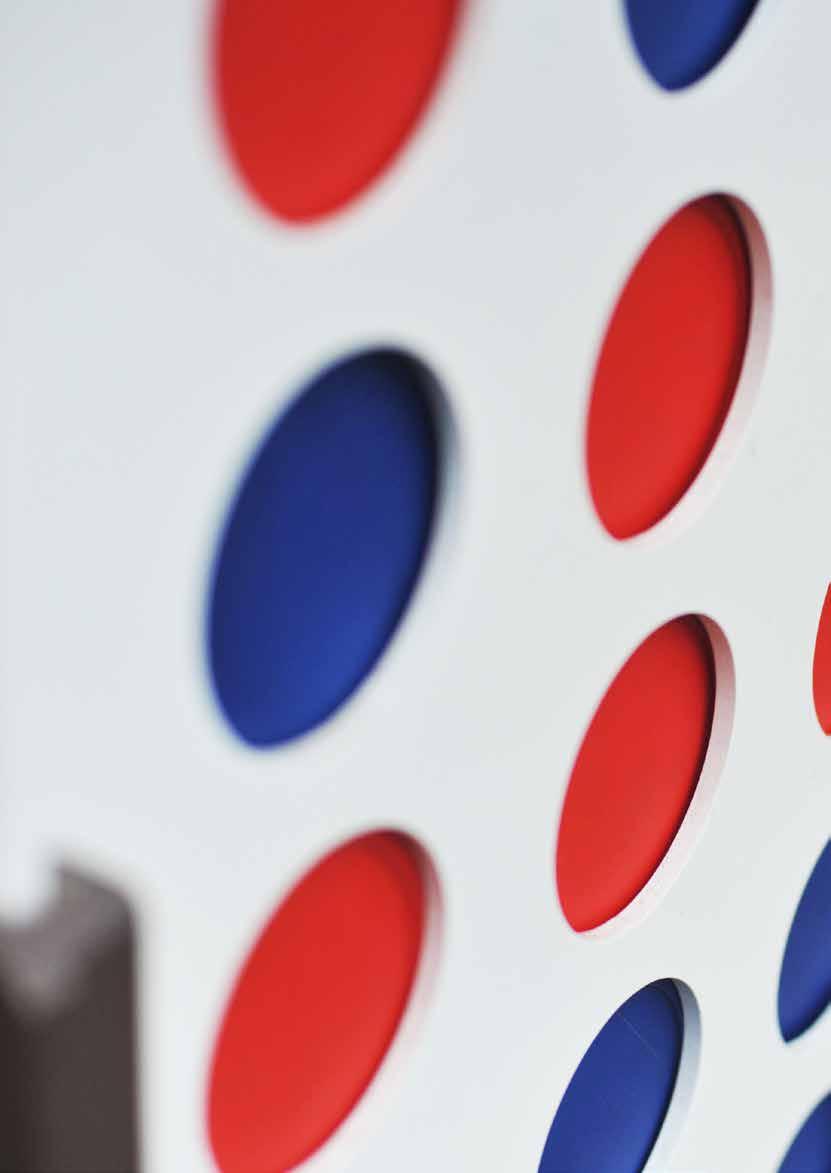

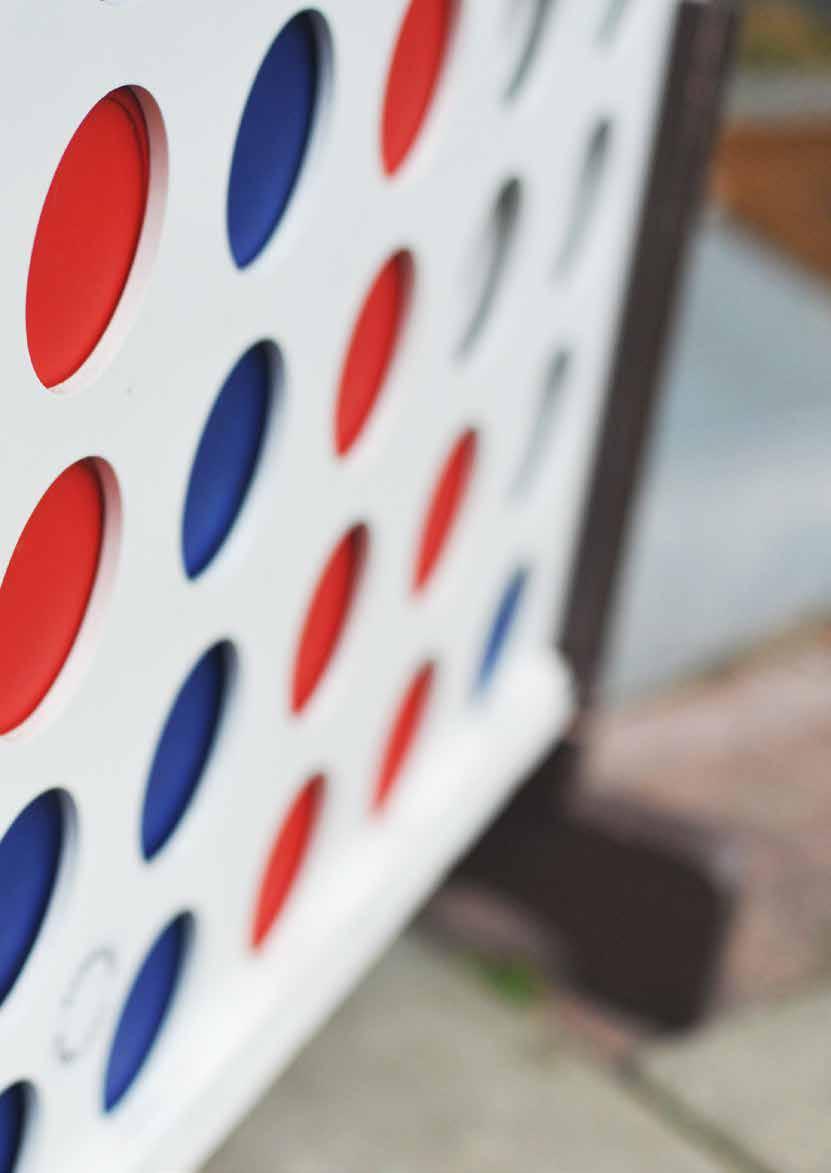


Key findings
Research limitations
What next?

Interviewees described how the project enabled their transition back to normal life after the pandemic, helping them reconnect with others and improve their mental health after months of isolation.


This report demonstrates how the experience of practical, peer-to-peer participation creates social capital for individual participants and how participation systems can be a reliable source of outcomes for cities and communities. This finding is of great significance for city leaders, urban policy makers, community practitioners and residents as they seek to meet the challenges and opportunities of the coming decades.
In Barking and Dagenham, residents described Every One Every Day as a space to build skills, share knowledge and learn from one another. The platform has become an integral part of the borough’s neighbourhoods, building connection, exchange and shared experiences.
The platform creates as an opportunity ecosystem for participants, particularly for those who are socially excluded or isolated. Through their participation, individuals gained the tools and skills to strengthen their overall wellbeing and create a positive impact in the borough.
Initial curiosity attracted participants to the spaces, but interest in the activities produced by the platform kept them engaged. Specifically, their recognition of the inherent potential of activities, spaces and resources motivated them to become regular participants. Residents interviewed for this research reported clear personal benefits in terms of their professional and personal development. In particular, free access to professional-standard tools and machines, notably in Everyone’s Warehouse, incentivised people to participate regularly in order to build new skills. For parents of young children there was a dual impact from opportunities to develop skills in an environment specifically designed to include children, who themselves
gained valuable learning and social experiences alongside their parents. They further reported positive impact from participation activities nature of participation activities, particularly those that included an environmental focus.
For residents in the borough whose lives have been dramatically impacted by the social restrictions created by the COVID-19 pandemic and the cost of living crisis, access to spaces and opportunities through Every One Every Day has provided them with a vital route out of social isolation and exclusion. Several interviewees described how the project enabled their transition back to normal life after the pandemic, helping them reconnect with others and regaining their mental wellbeing after months of isolation.
This report builds on the findings from Tools to Act in demonstrating the power of inclusive practical participation to challenge biases and preconceptions towards others. In a significant finding from the latest fieldwork, interviewees reported discovering how much they shared with their neighbours and broader community members despite their different backgrounds, and their sense that this could become a powerful force of connection that could lead to affect positive social change. This signifies that the approach can provide the tools for collective agency to emerge, connecting individual and collective agency to achieve desired outcomes. From the perspective of residents in Barking and Dagenham, social change involves a more sustainable, just and cohesive society, where individuals are no longer disconnected but work together on building the neighbourhoods they desire.

The findings of this study should be taken into account alongside certain limitations that arose due to practical and conceptual constraints encountered during different stages of the research process. These limitations primarily revolved around methodological and research design choices, while additional limitations relate specifically to the challenges of implementing participatory research models and measuring the growth of social capital.
Methodological and research design limitations were primarily associated with the utilisation of a case study approach involving a necessarily limited number of residents with experience of the Every One Every Day project. Engaging community members in participatory research necessitated significant time, commitment, and resources. However, due to limited funding and time constraints associated with the project’s duration, it was not possible to fully involve a wide range of residents who participated in the project at different times.
Despite efforts to engage as many residents as possible, certain groups were unable or unwilling to participate in the research activities. Consequently, the findings of this study were influenced by limited generalisability and an unequal representation of the diverse residents of Barking and Dagenham. While the sample of research participants reflected the sociocultural composition of the borough’s population, it is plausible to suggest that different findings might have emerged with a larger participant pool.
Another significant limitation was the impact of the COVID-19 pandemic on the project, particularly concerning the collection of data. With the cessation of project activities under lockdown conditions, the ability to accurately monitor the engagement, participation and outcomes experienced by participants throughout their involvement in the project was impeded.
Finally, social capital, as a complex and abstract concept, is challenging to capture and even more difficult to measure. Its various dimensions, including trust, a sense of belonging and reciprocity, cannot be objectively quantified. Understanding the direction, variables and factors related to social capital, which are heavily dependent upon context, demands substantial effort in terms of resources and funding to assist researchers and practitioners in tracking its development.
The results of this study have indicated that participatory practices have a positive impact on building social capital. However, to fully support its growth, participatory practices should be implemented over a significant period of time, allowing these innovative approaches to become an integral part of the social fabric. Researchers and practitioners should consider these multi-faceted challenges when designing and implementing participatory models aimed at creating more cohesive, just and inclusive communities that are collectively designed by and for the benefit of all community members.



In 2024, the Every One Every Day research project will be concluded in line with the original research plan.
The effect of this will be that 2023 will be the final full year of resident activities. In mid-2024 a final research report will be published along with all learning materials generated by the project, at which time Participatory City Foundation will also close.
This final publication will aim to be a full account of the entire development, implementation and evaluation of the Every One Every Day project and is expected to include:
• A compendium of the resources and projects developed by the project in the borough and how residents can continue to access them;
• An overview of project development from initiation to closure;
• All participation data gathered by the project;
• All outcomes achieved by the project over its lifetime;
• A full account of how the project planned and implemented closure and legacy including the final elements of prototyping and demonstration carried out during 2023;
• The impact of the model development in Barking and Dagenham upon participation systems approaches elsewhere.
Alongside this final report, Participatory City Foundation will be publishing a comprehensive learning model designed for future cities. The aim is that individual practitioners will be able to understand the strategic, operational and practice developments which comprise participation systems approaches.
Central to this will be the full articulation of this new field of neighbourhood-based practice including the infrastructural and partnership conditions that need to be in place locally for it to be applied. At the time of writing, Participatory City Foundation is convening partners to build the case for the importance of these approaches into the future and their salience to tackling key challenges facing our societies, including migration, polarisation, economic exclusion and climate change.

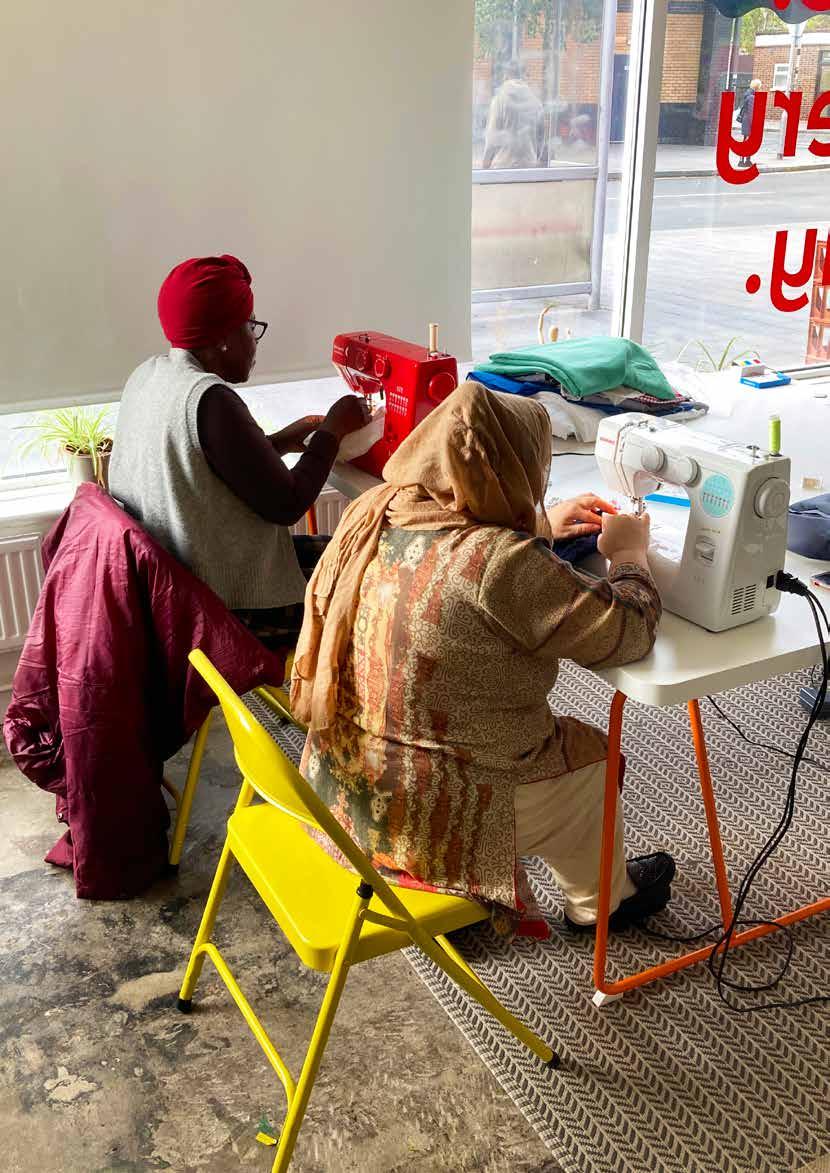


We live in a time of intensifying polarisation, with huge strain on households and communities, and mistrust at all levels of society.
The World Economic Forum has identified erosion of social cohesion as amongst the most pressing risks to security and prosperity across the globe.
We are urgently in need of systems which counter these trends in our society. Which connect us around what we share, what we can contribute, and what we can do together as opposed to what makes us different, separate and disconnected.
Every One Every Day is such a system; designed for connection, contribution and collaboration. In Places to Practise residents describe in their own words
how participation has helped them build connections, confidence, and skills, which they have used to turn their ideas into practical reality.
In doing so they have described overcoming social isolation and mental health challenges, feeling increasingly optimistic about their family’s future, and finding a greater sense of being included in positive change in their neighbourhoods and communities.
Places to Practise points towards the real-life, practical design of a system which can reliably produce the essential building blocks of social cohesion in our neighbourhoods, communities and cities.
This feels more important today, than ever before.
